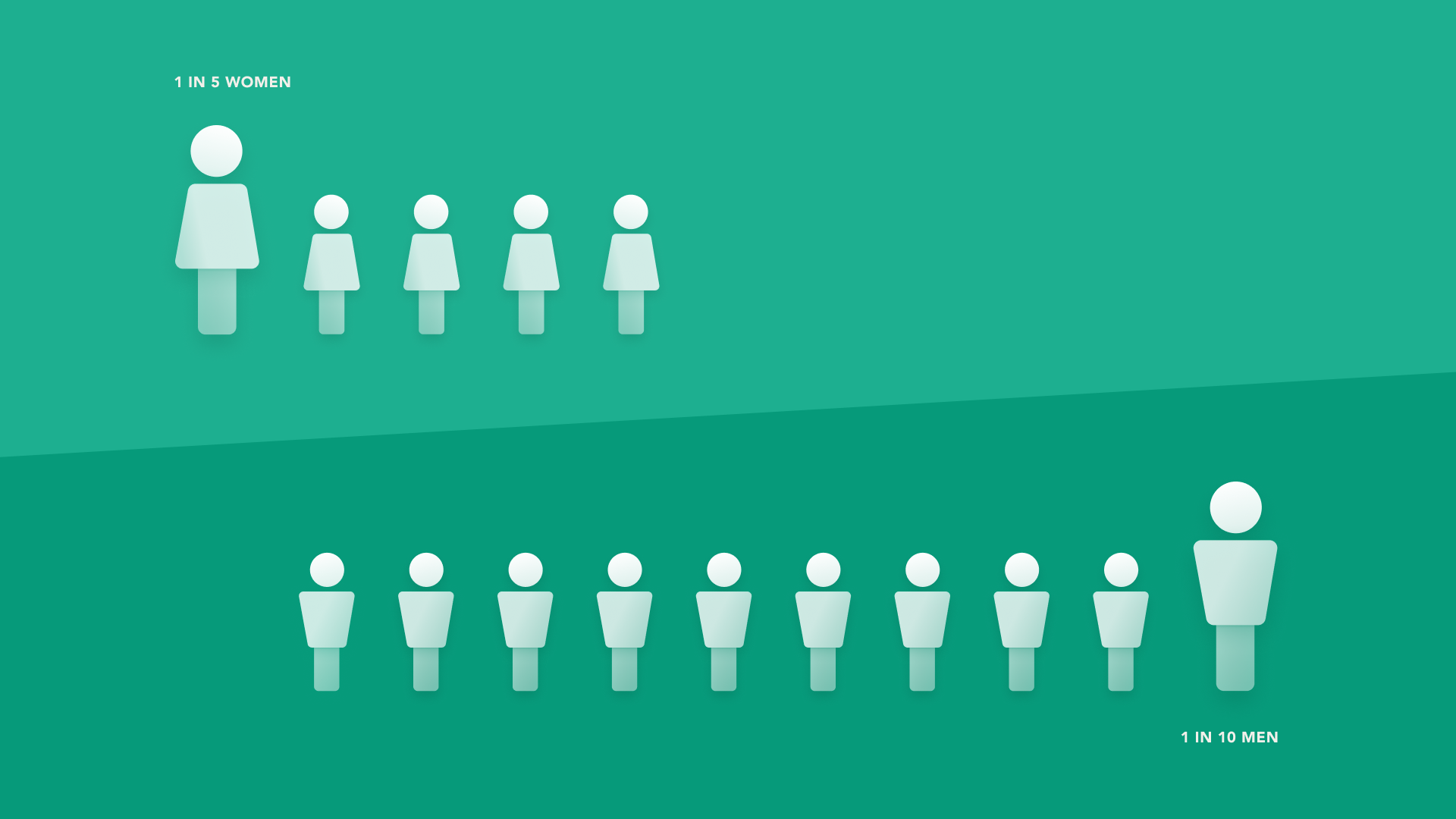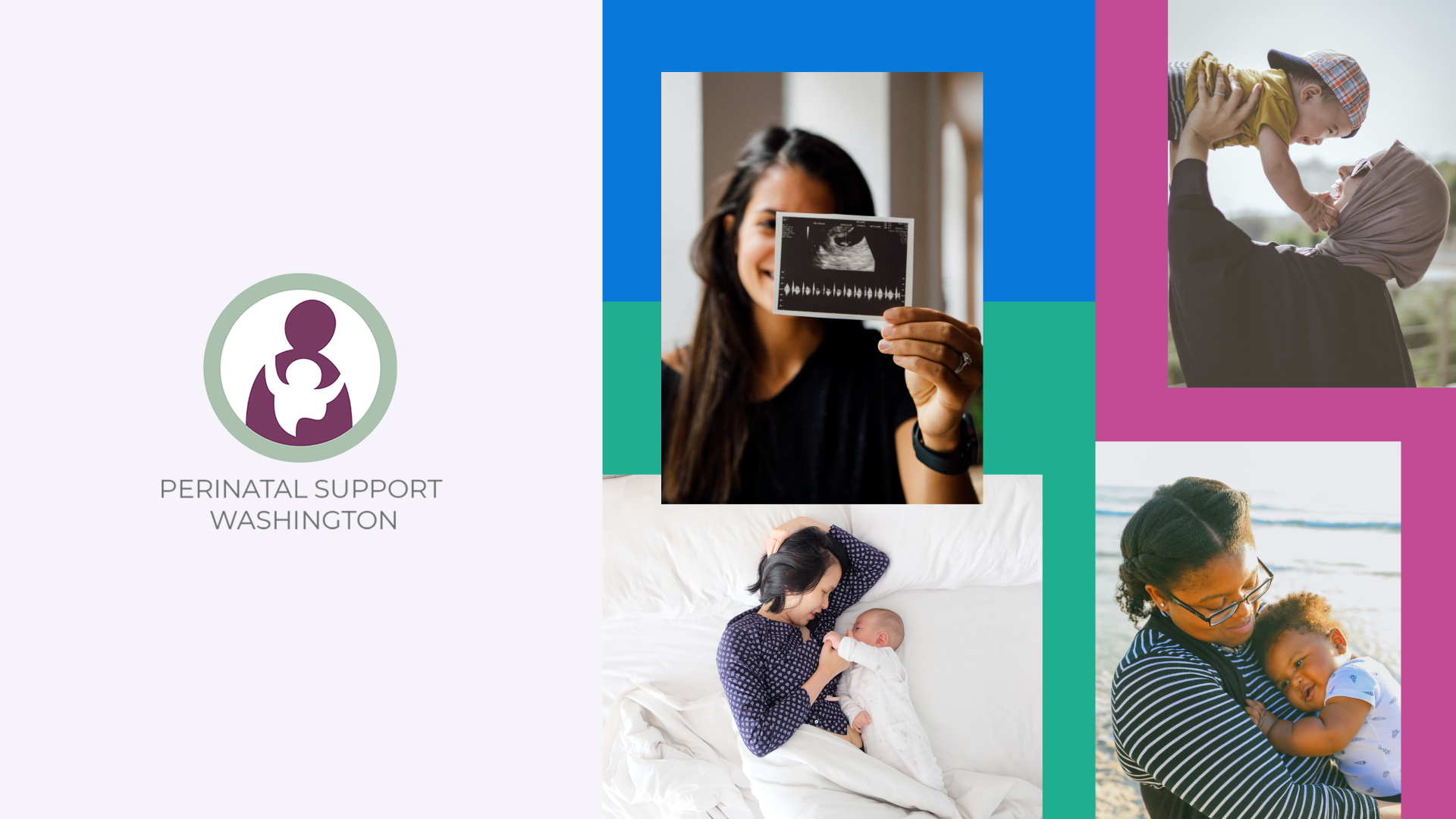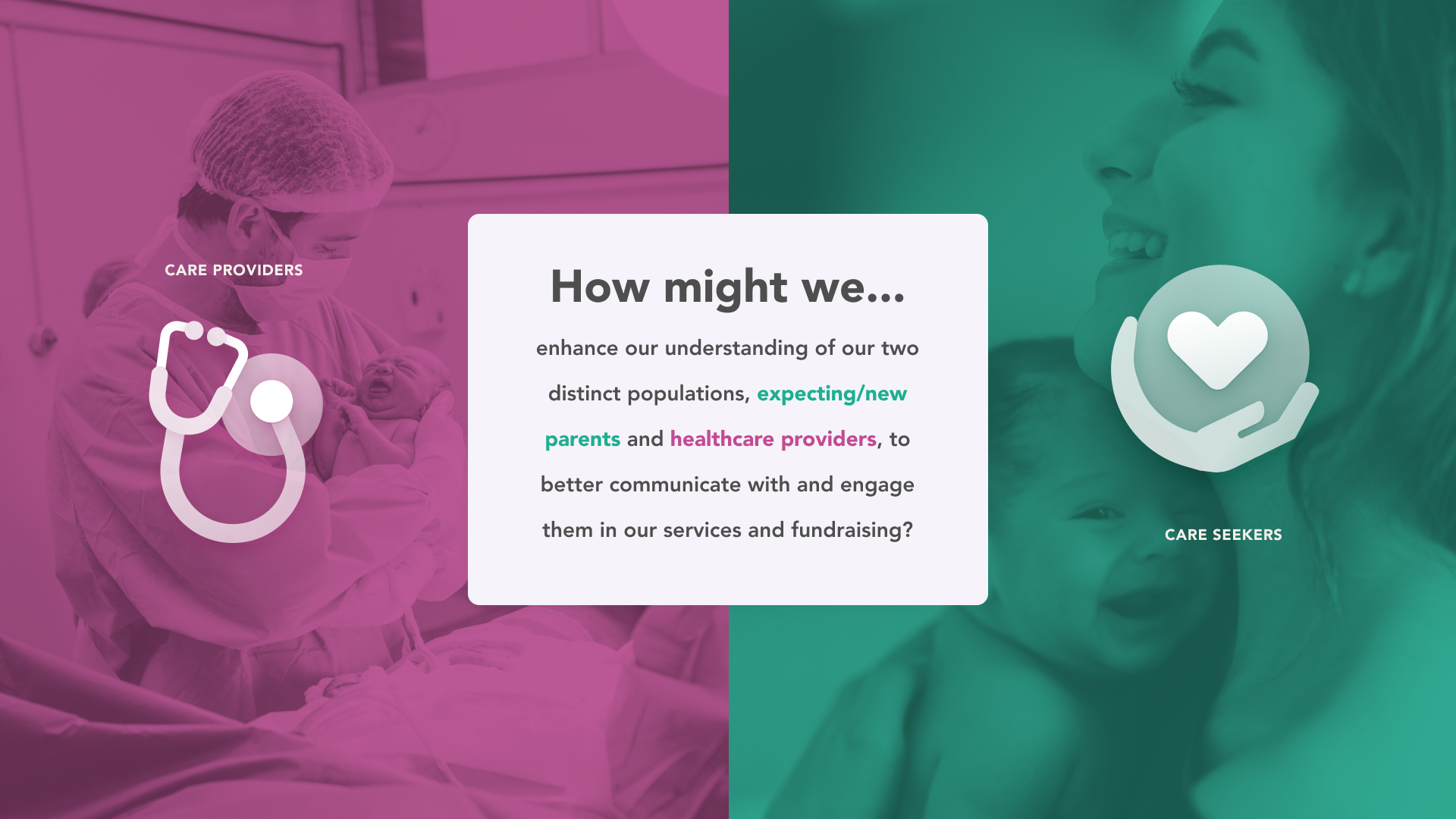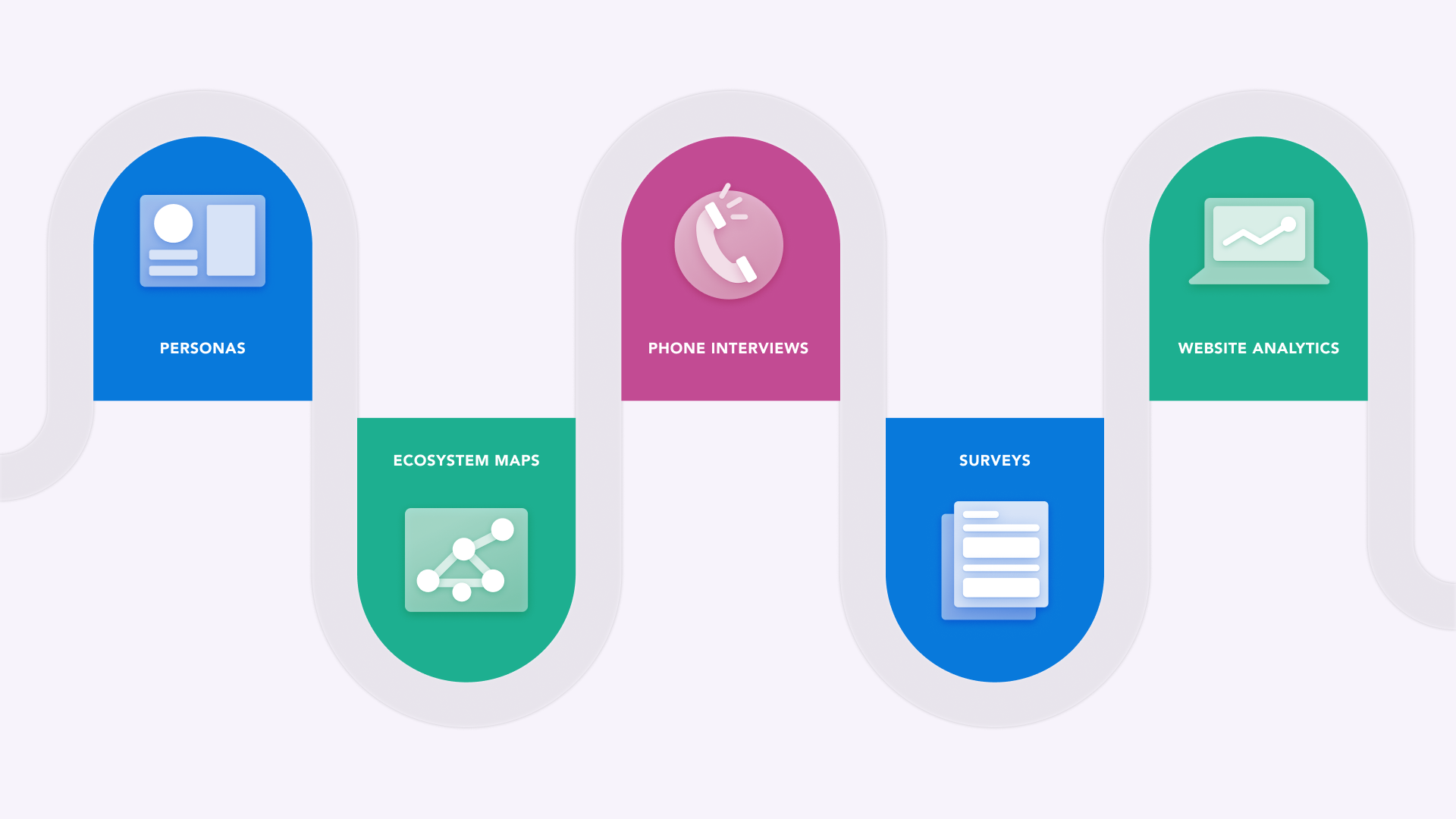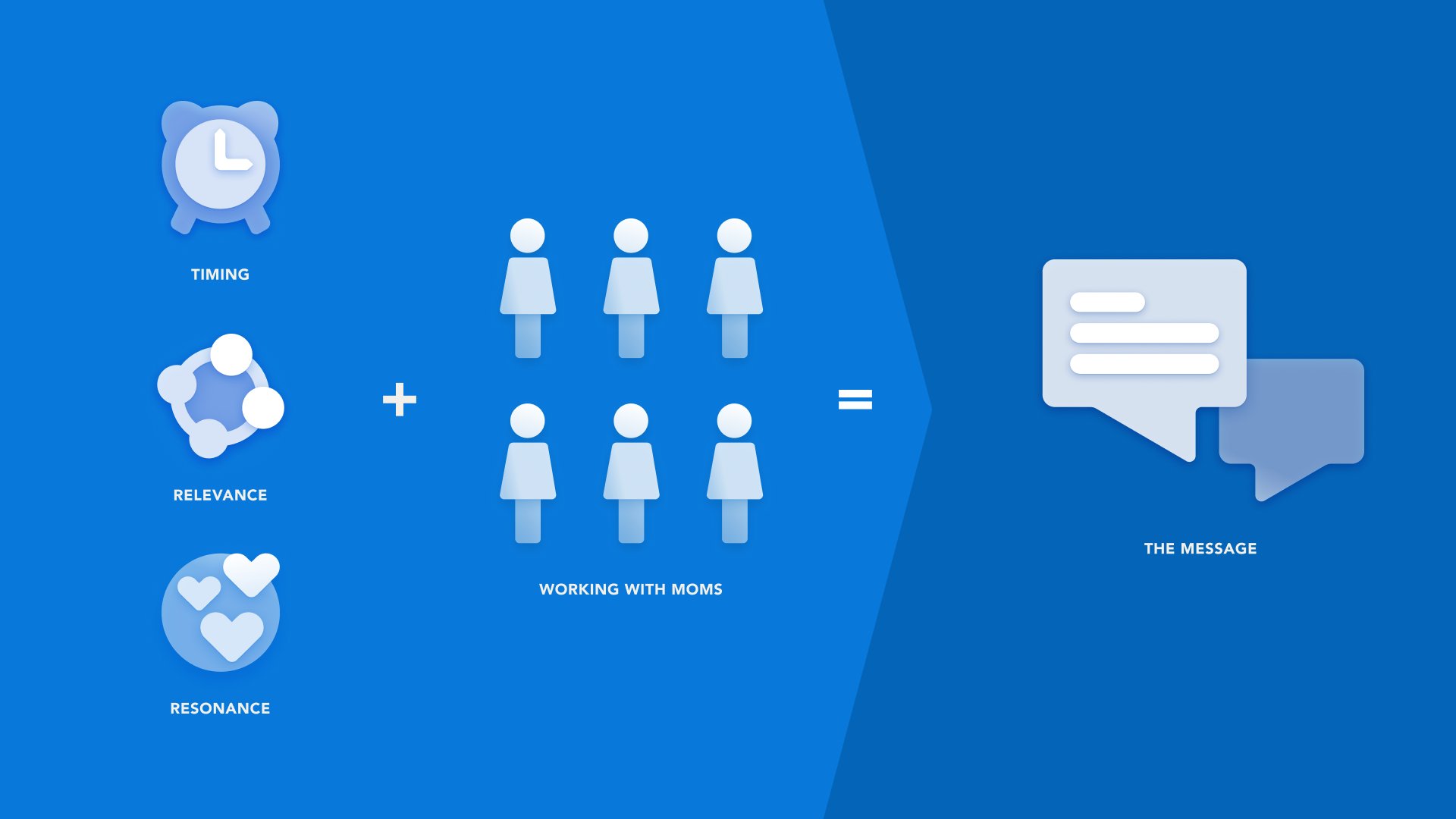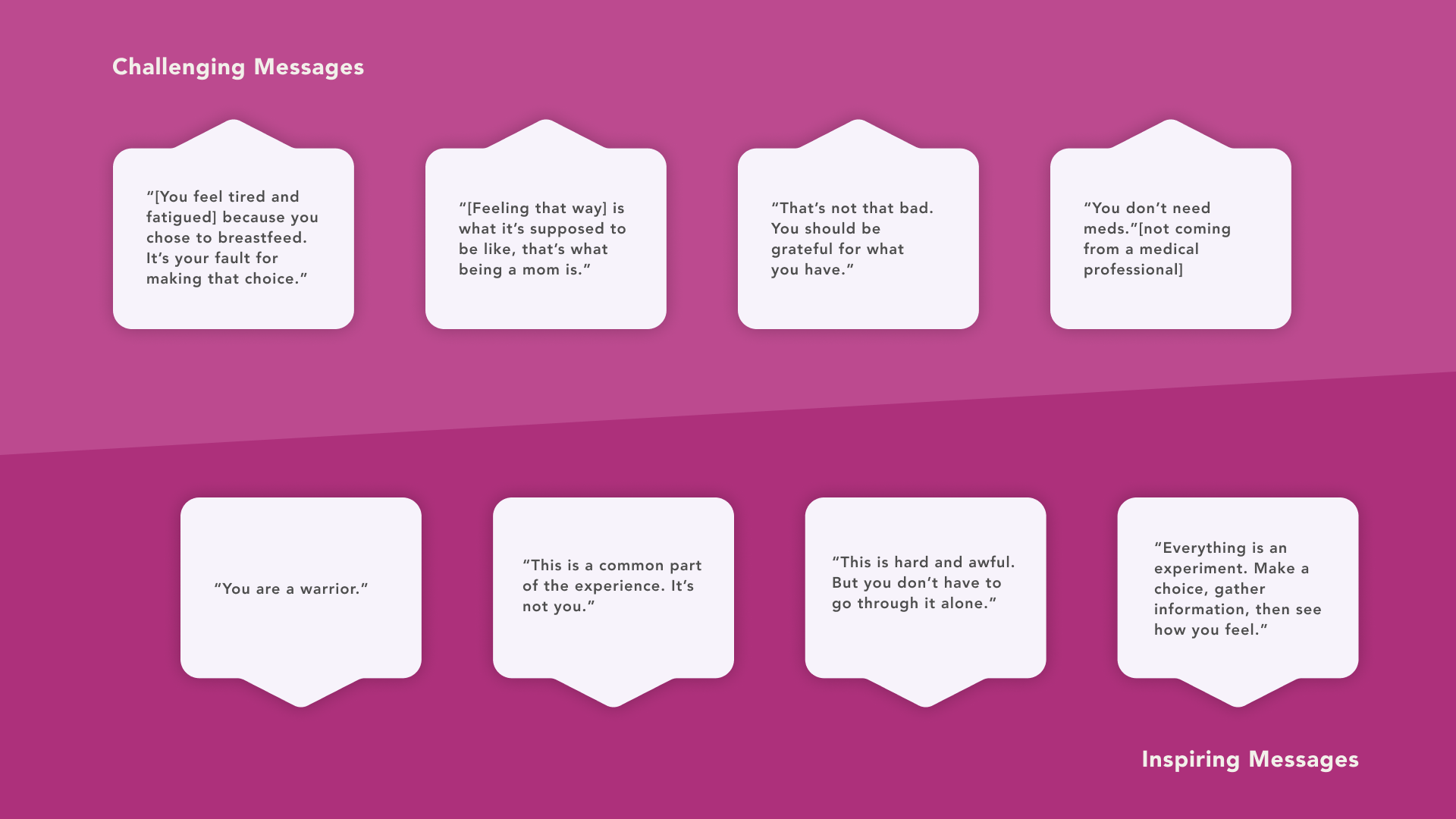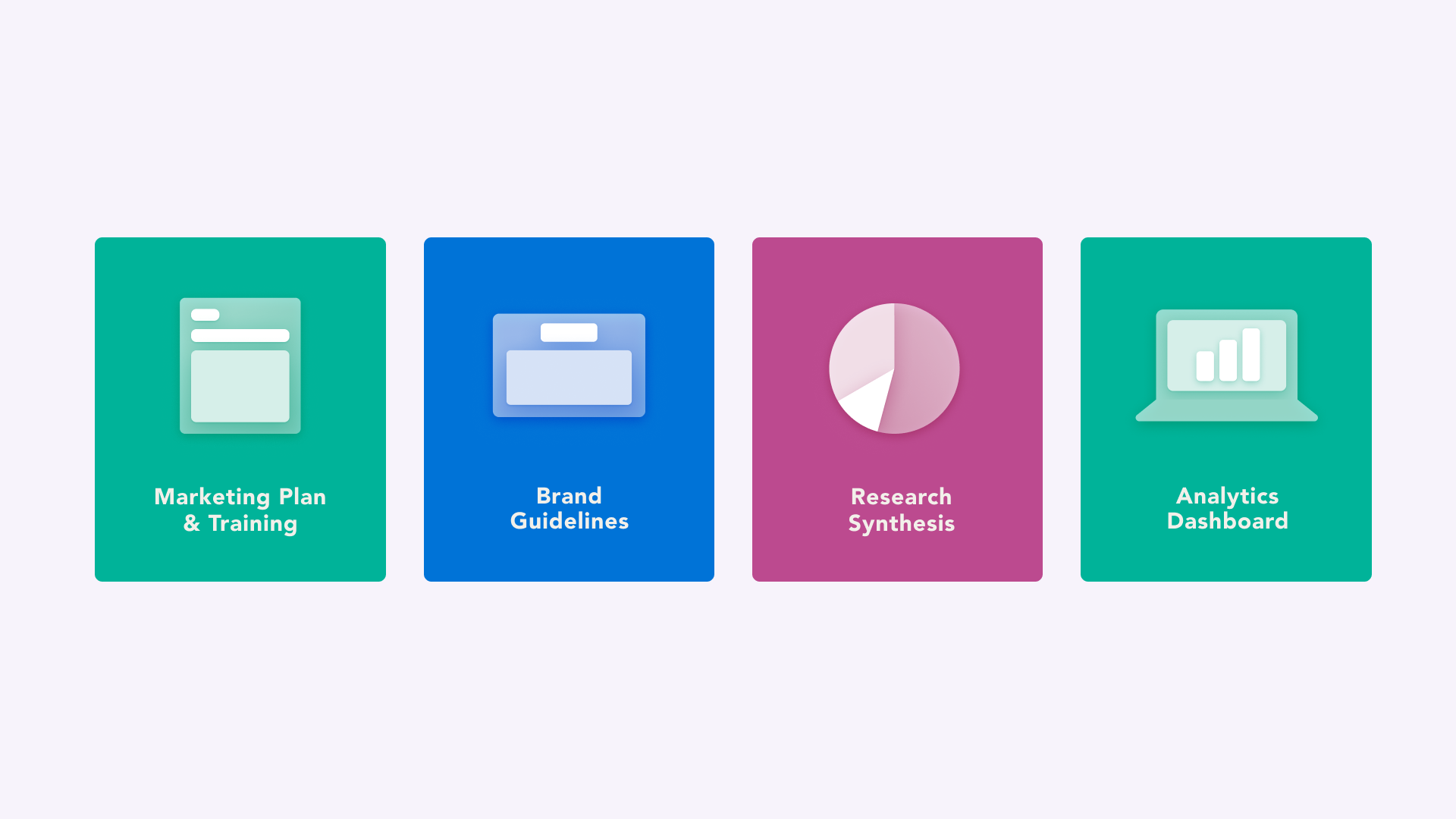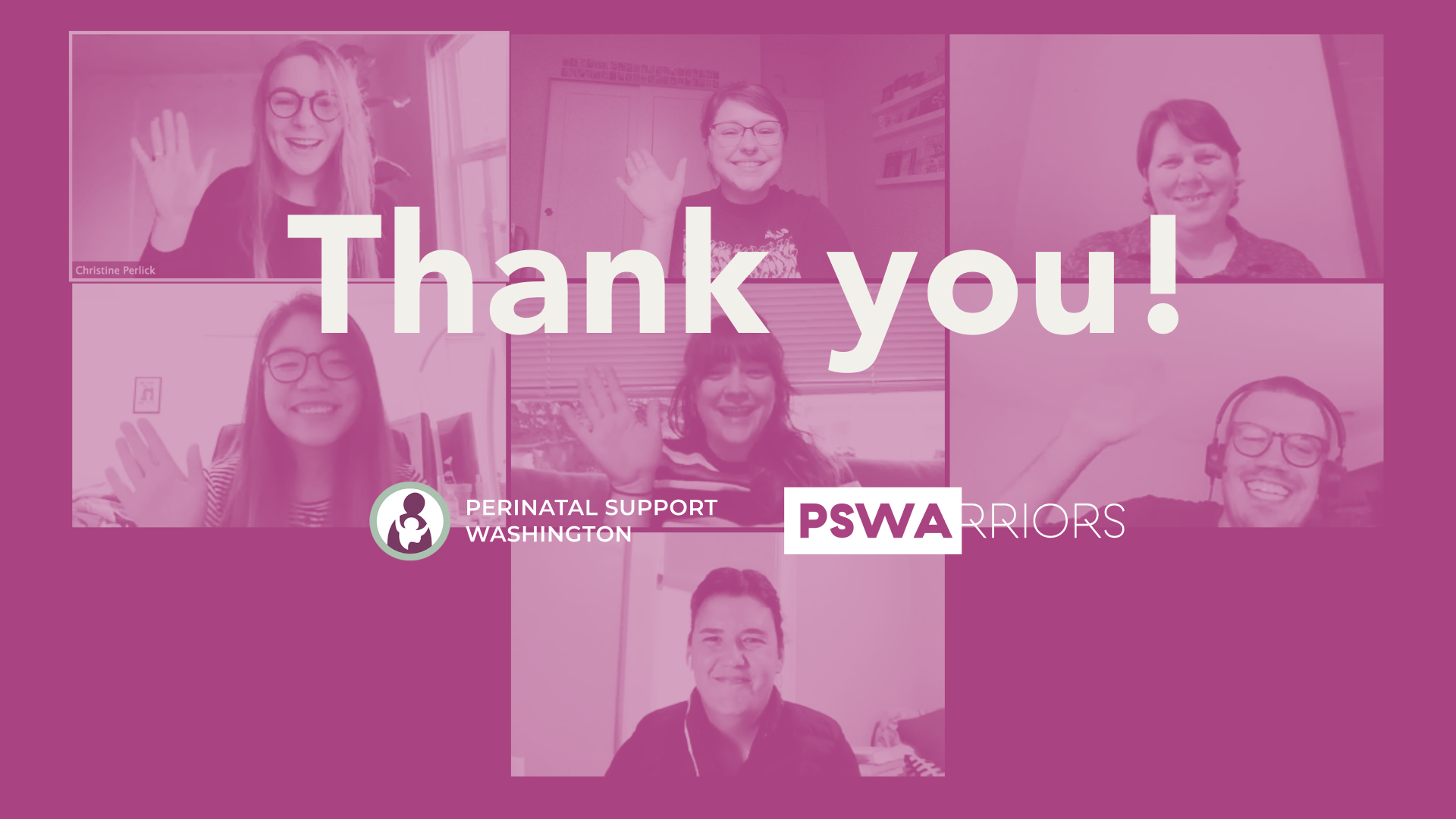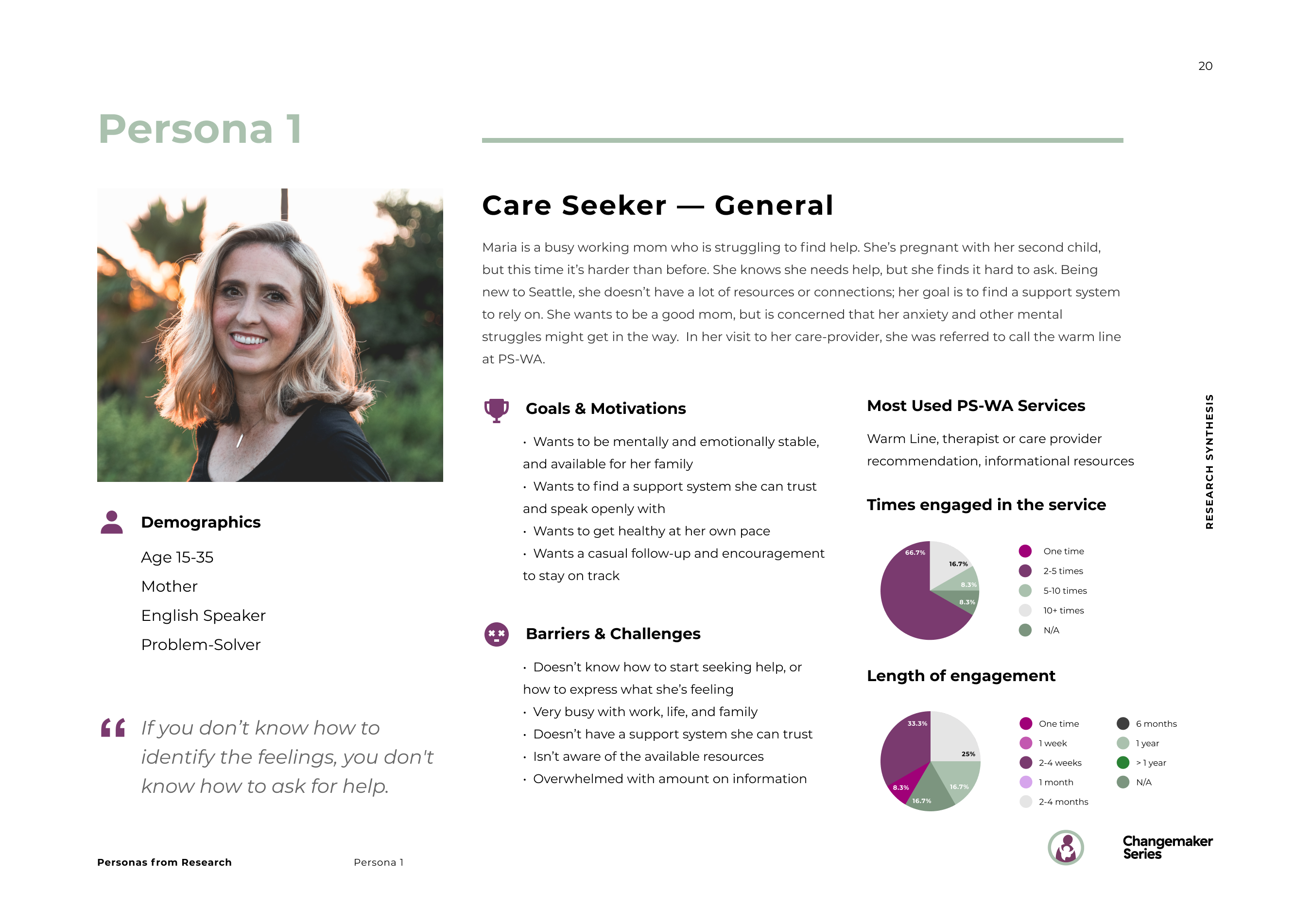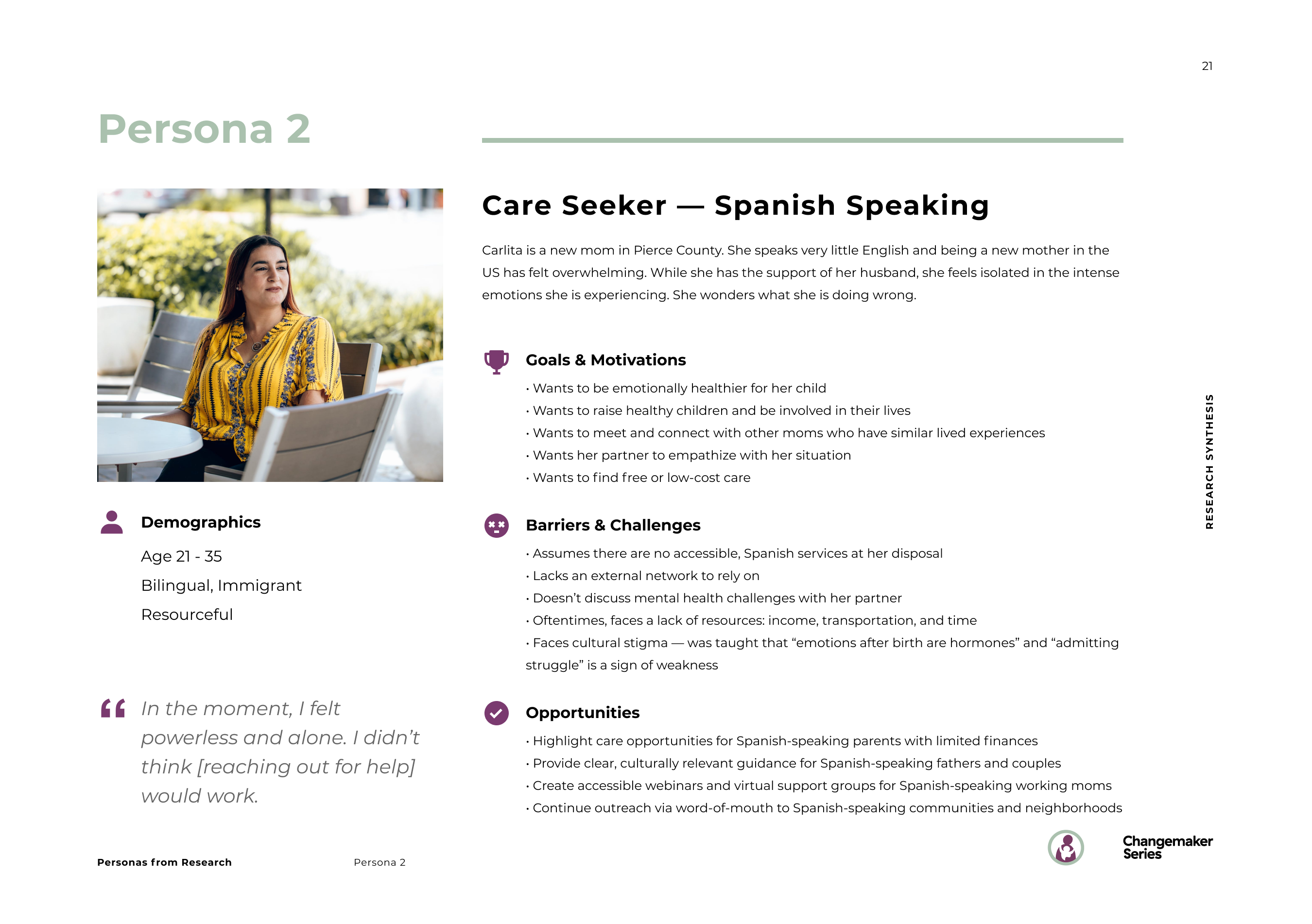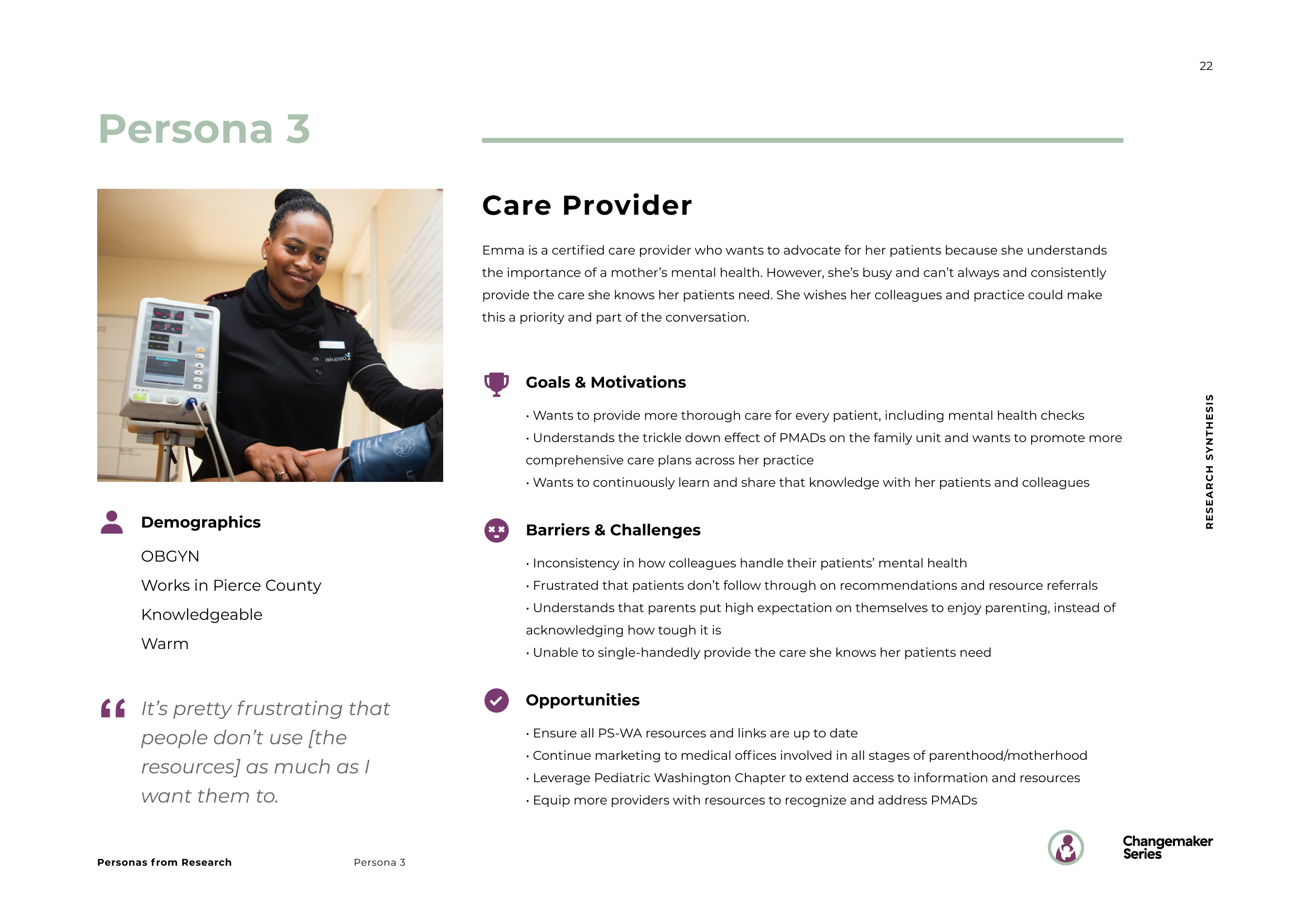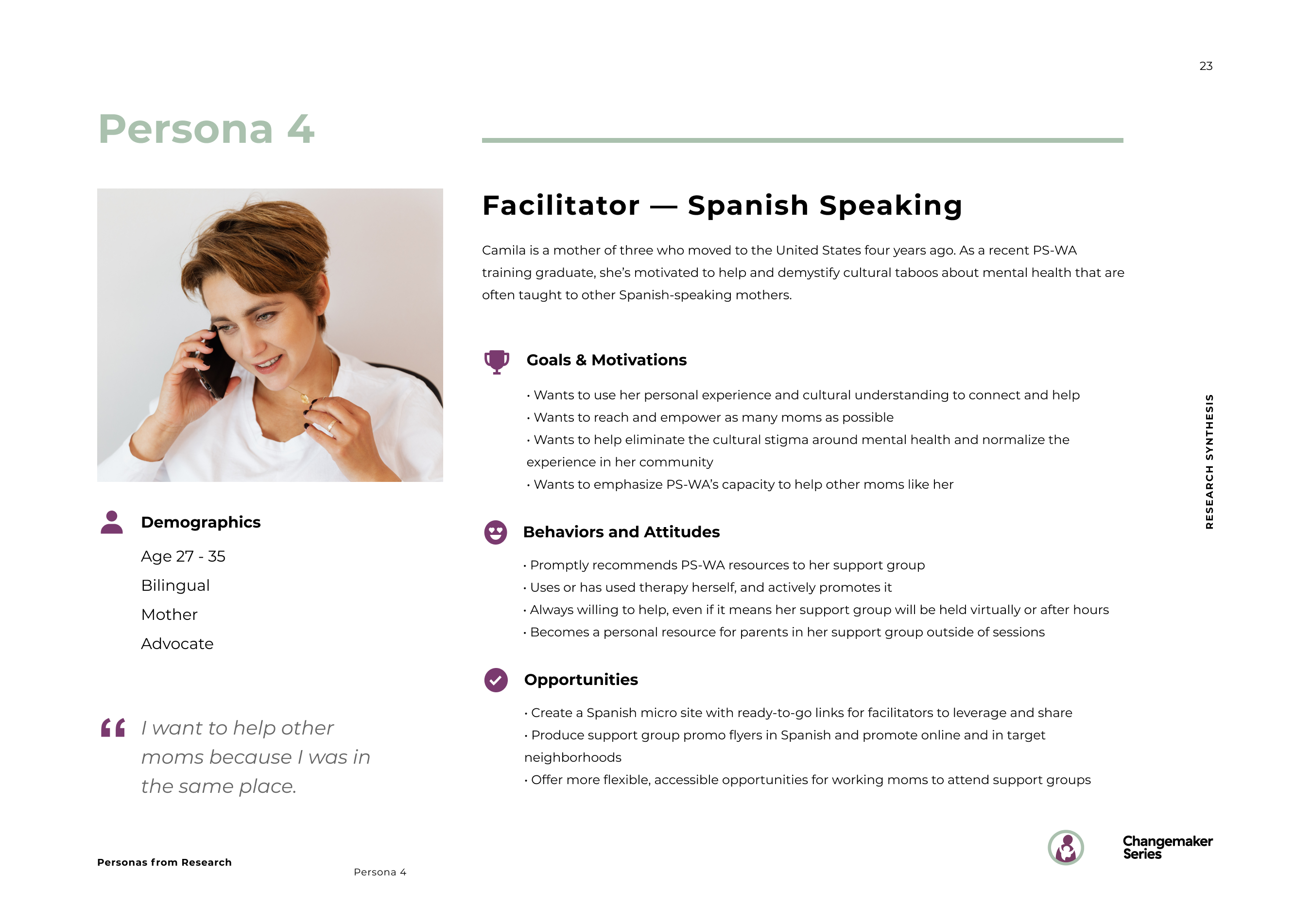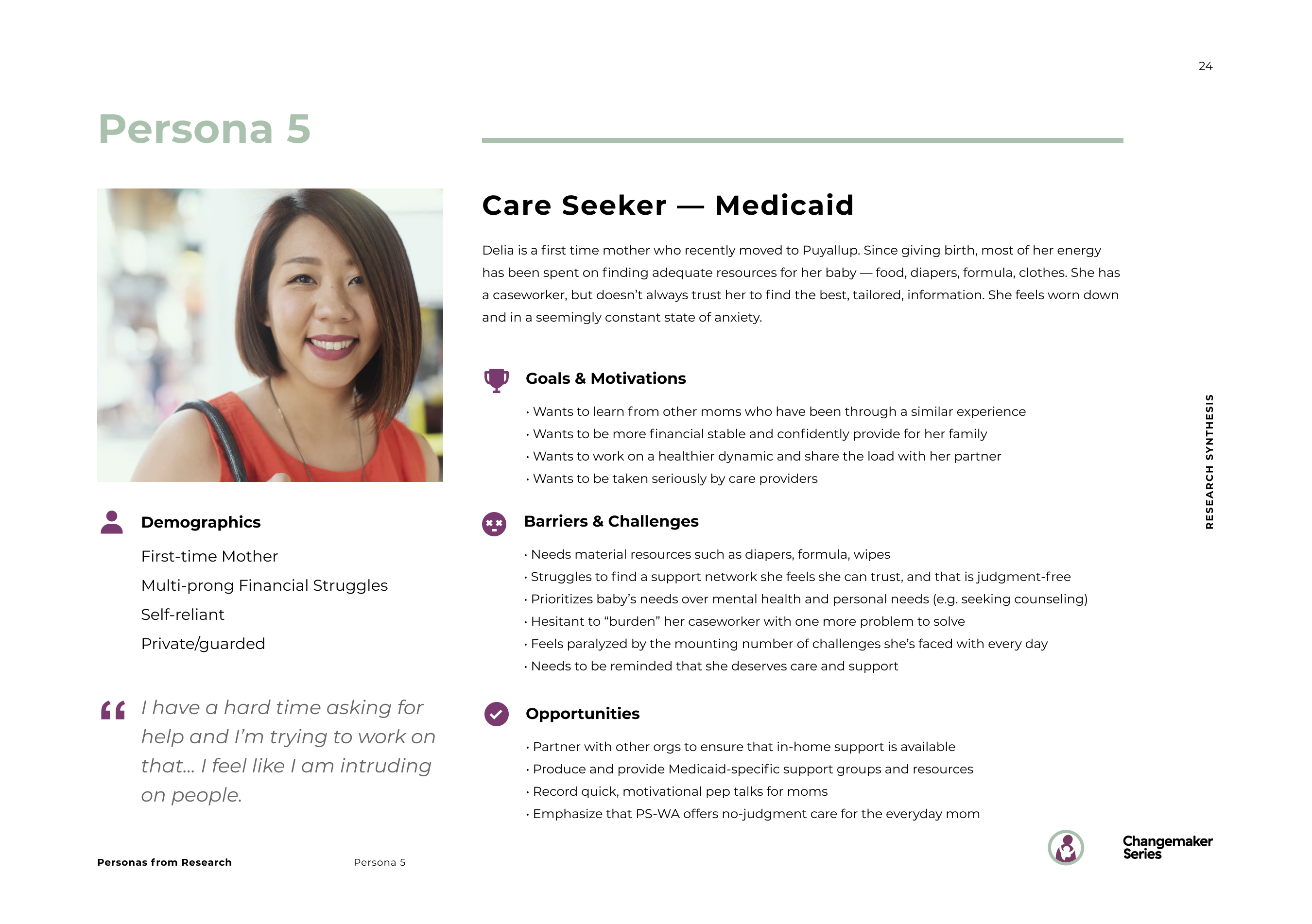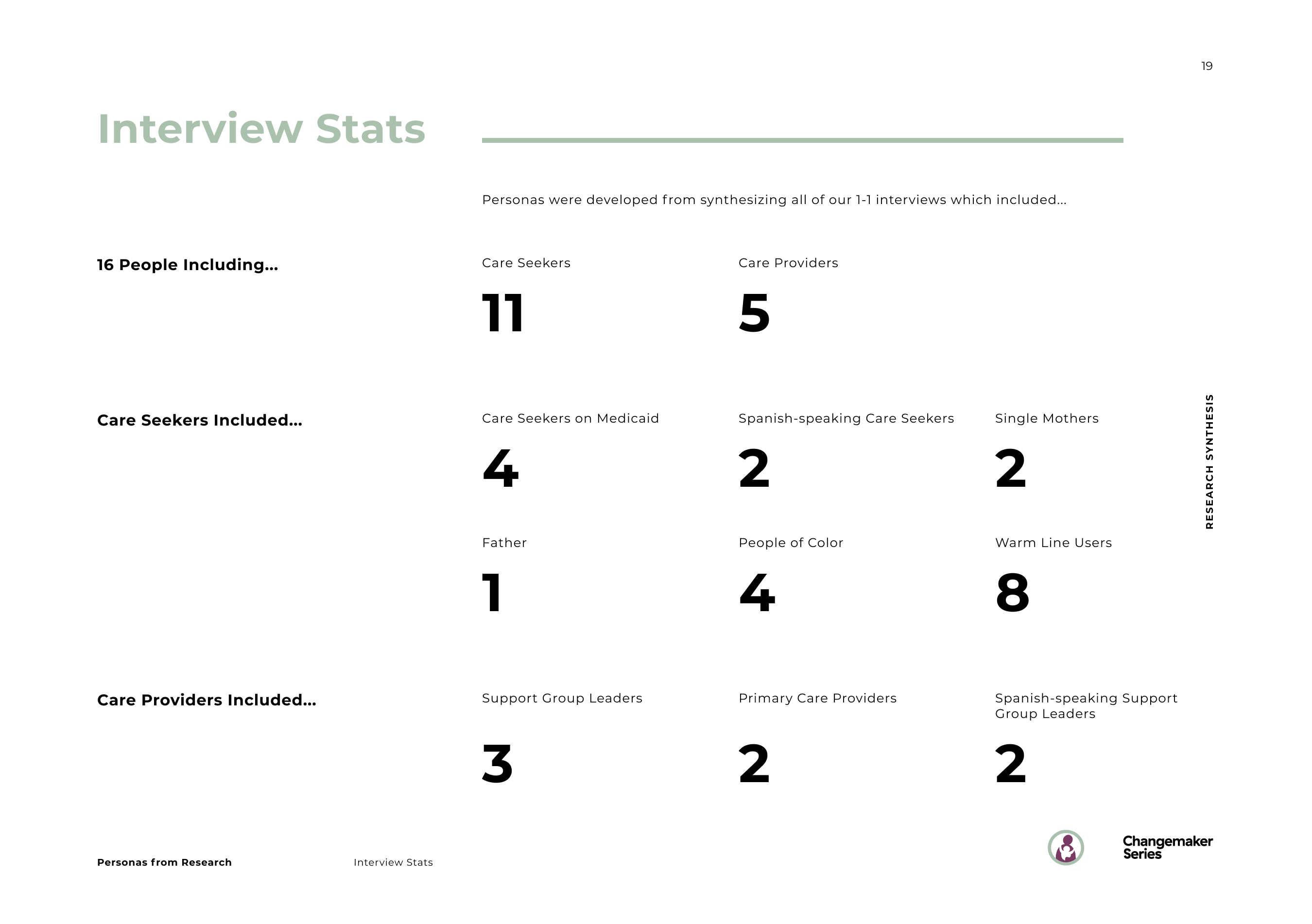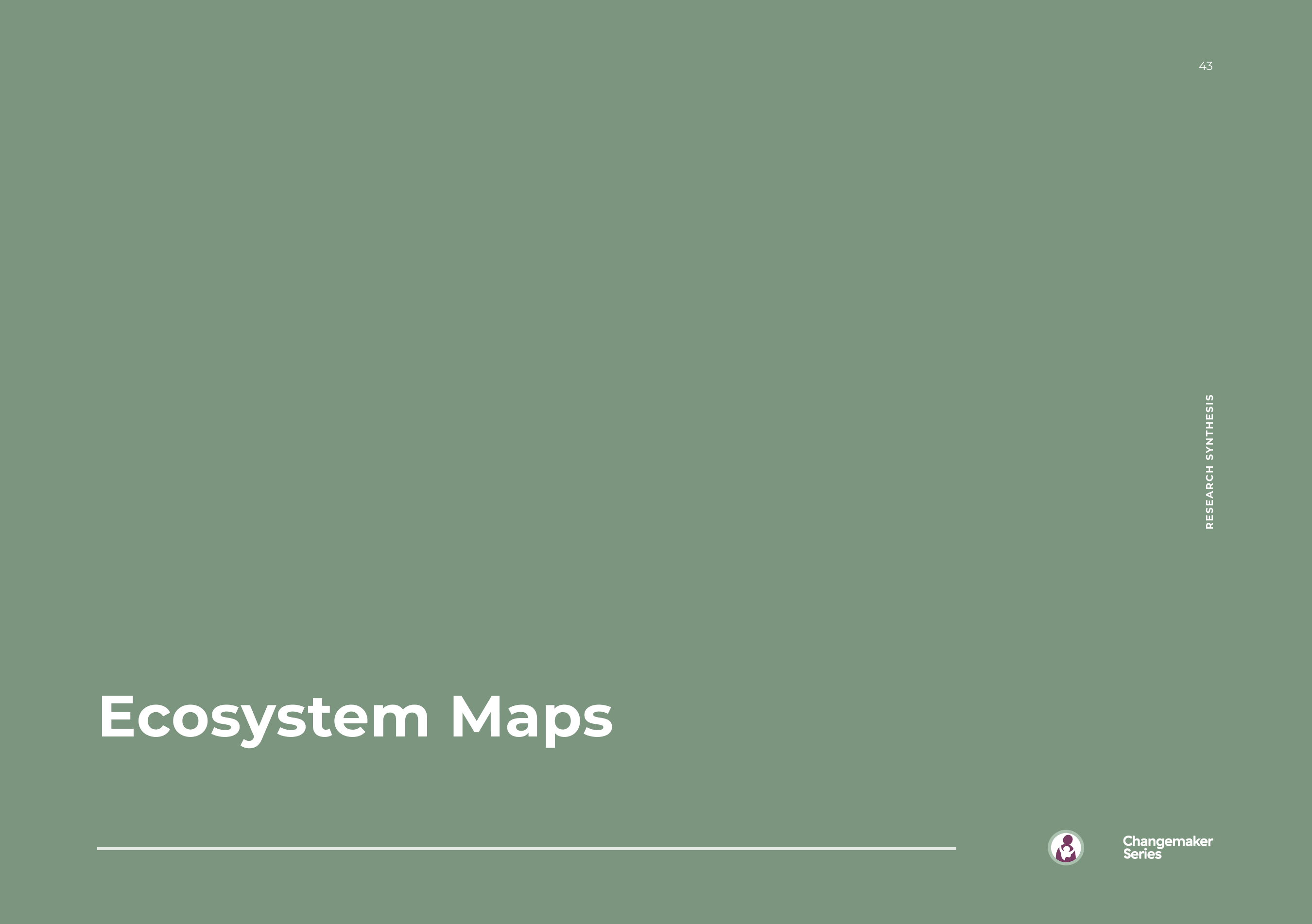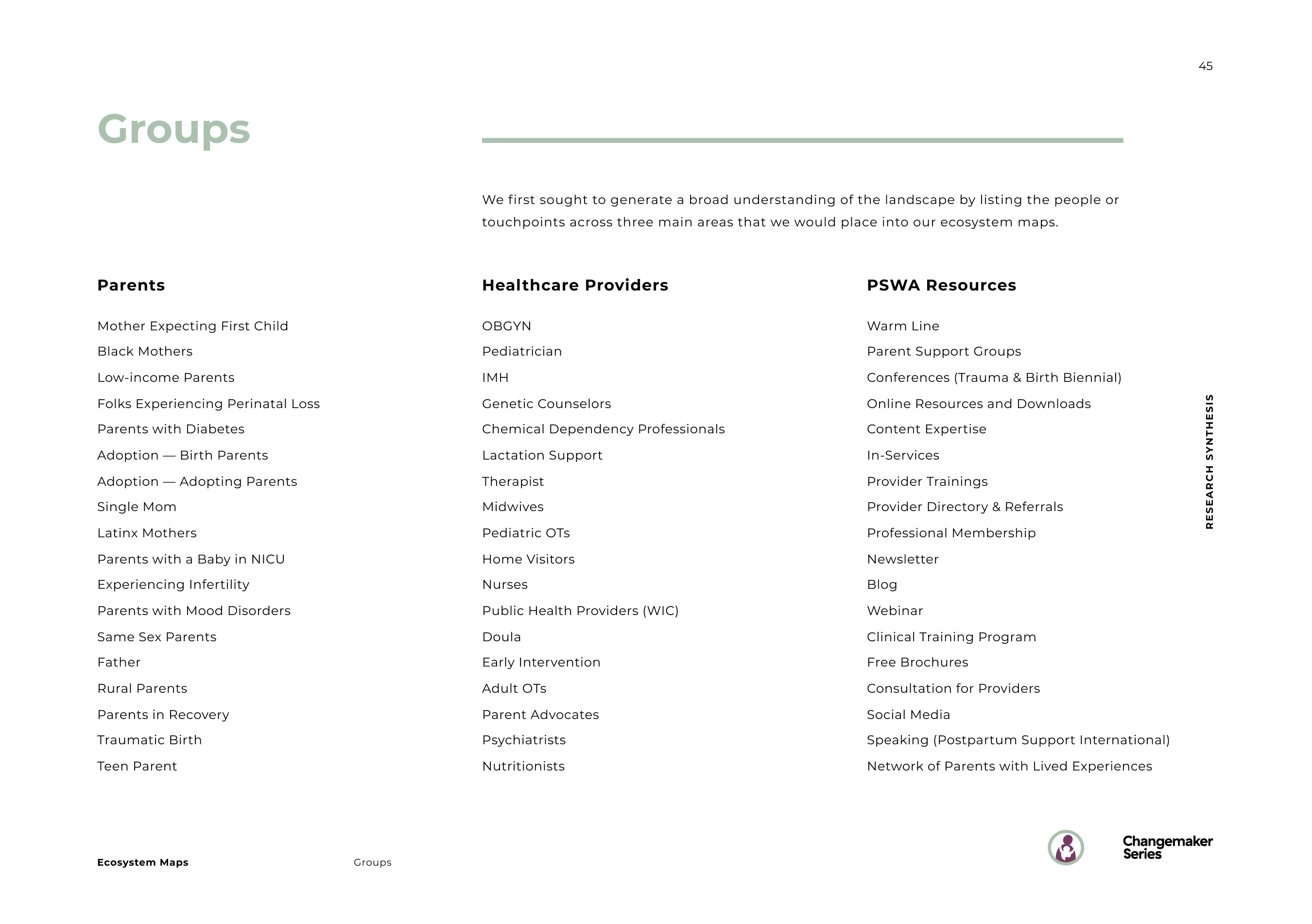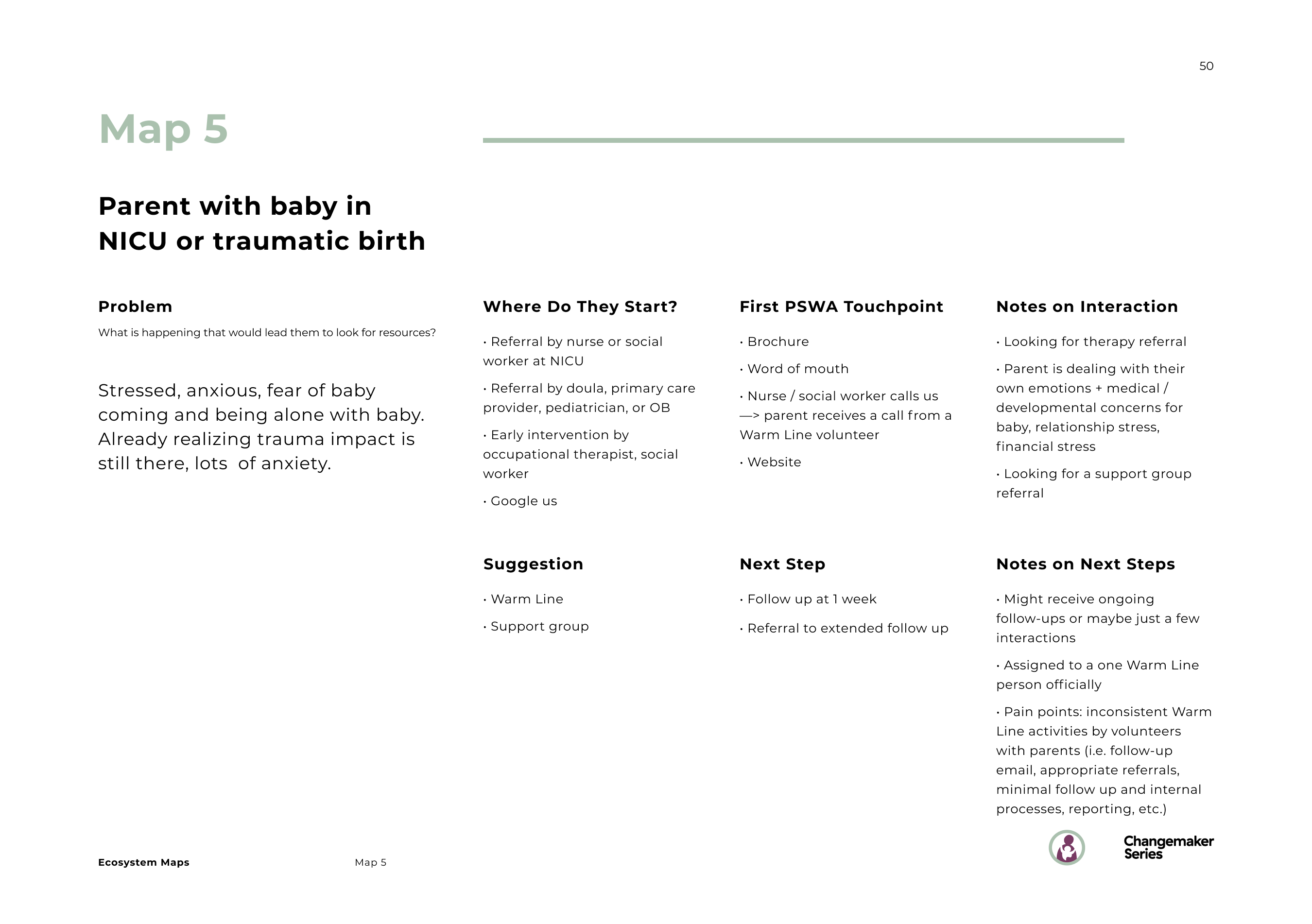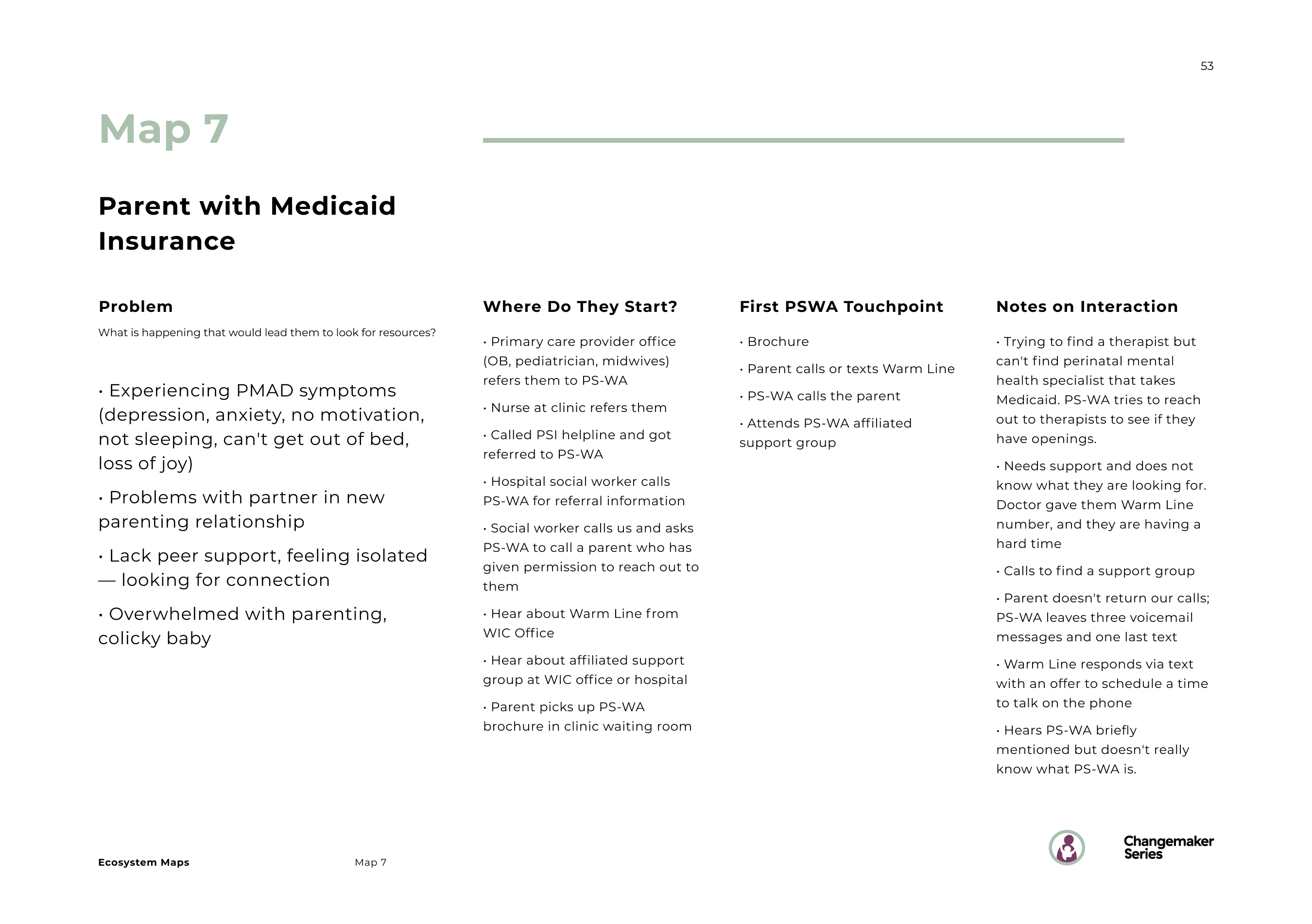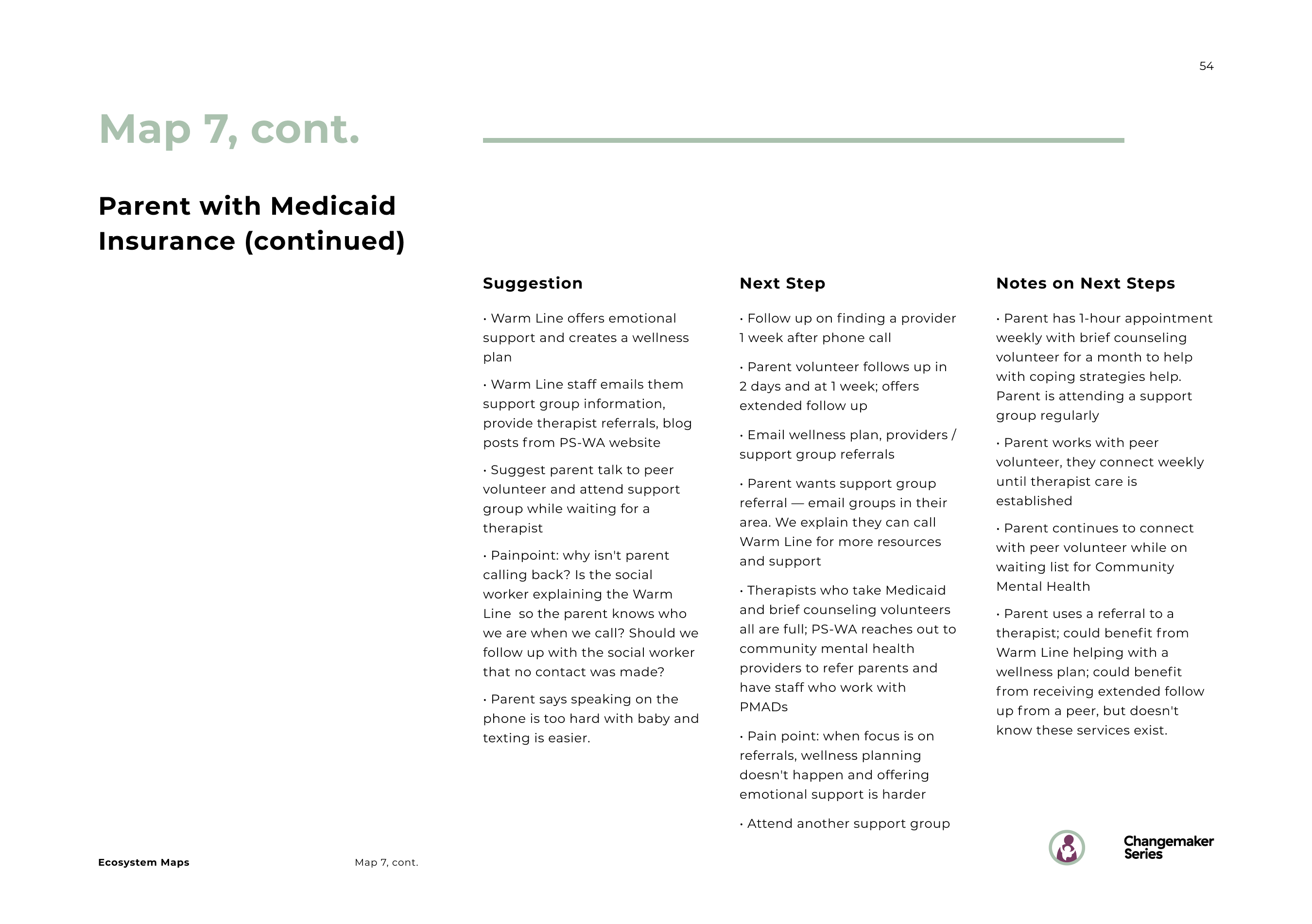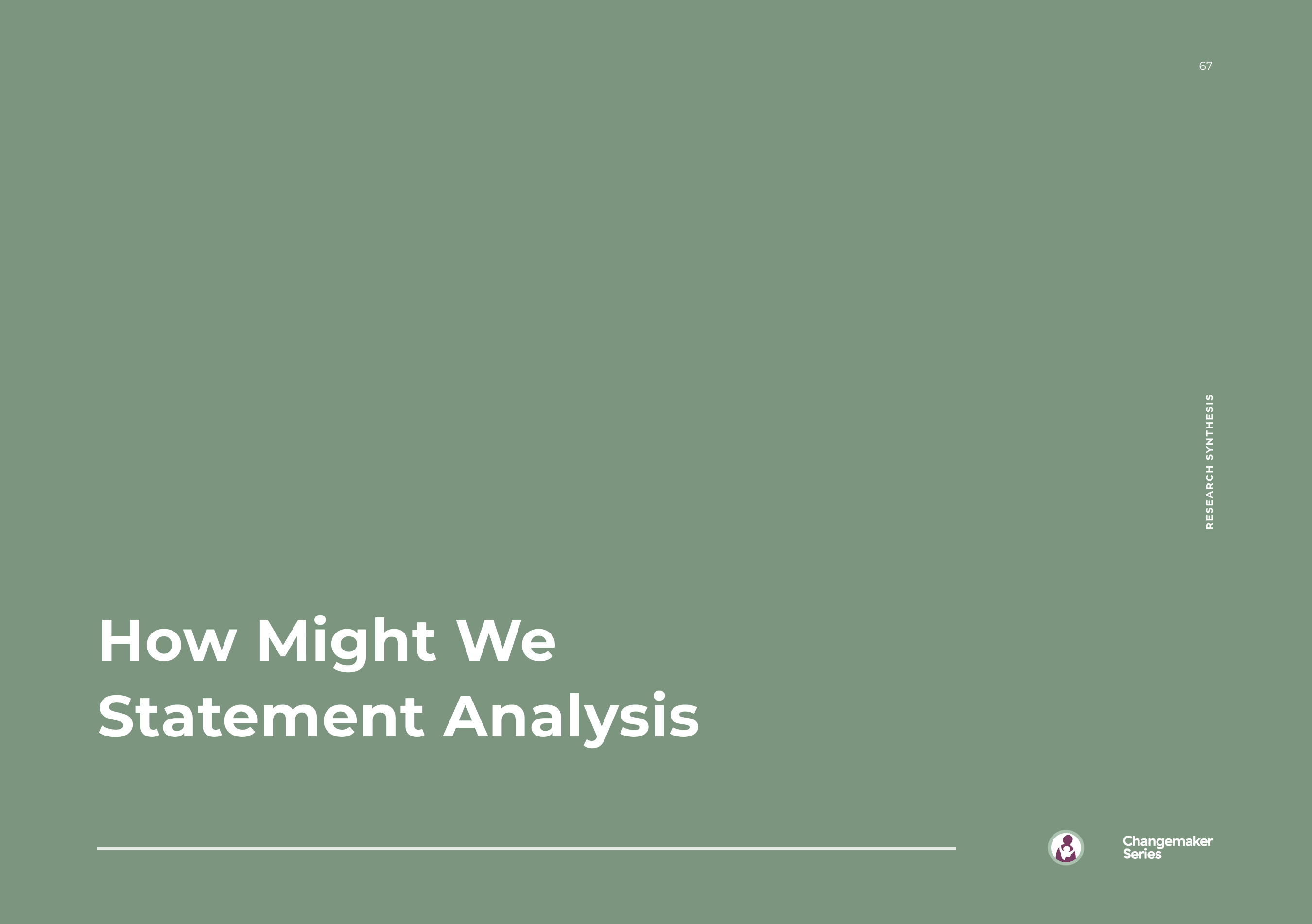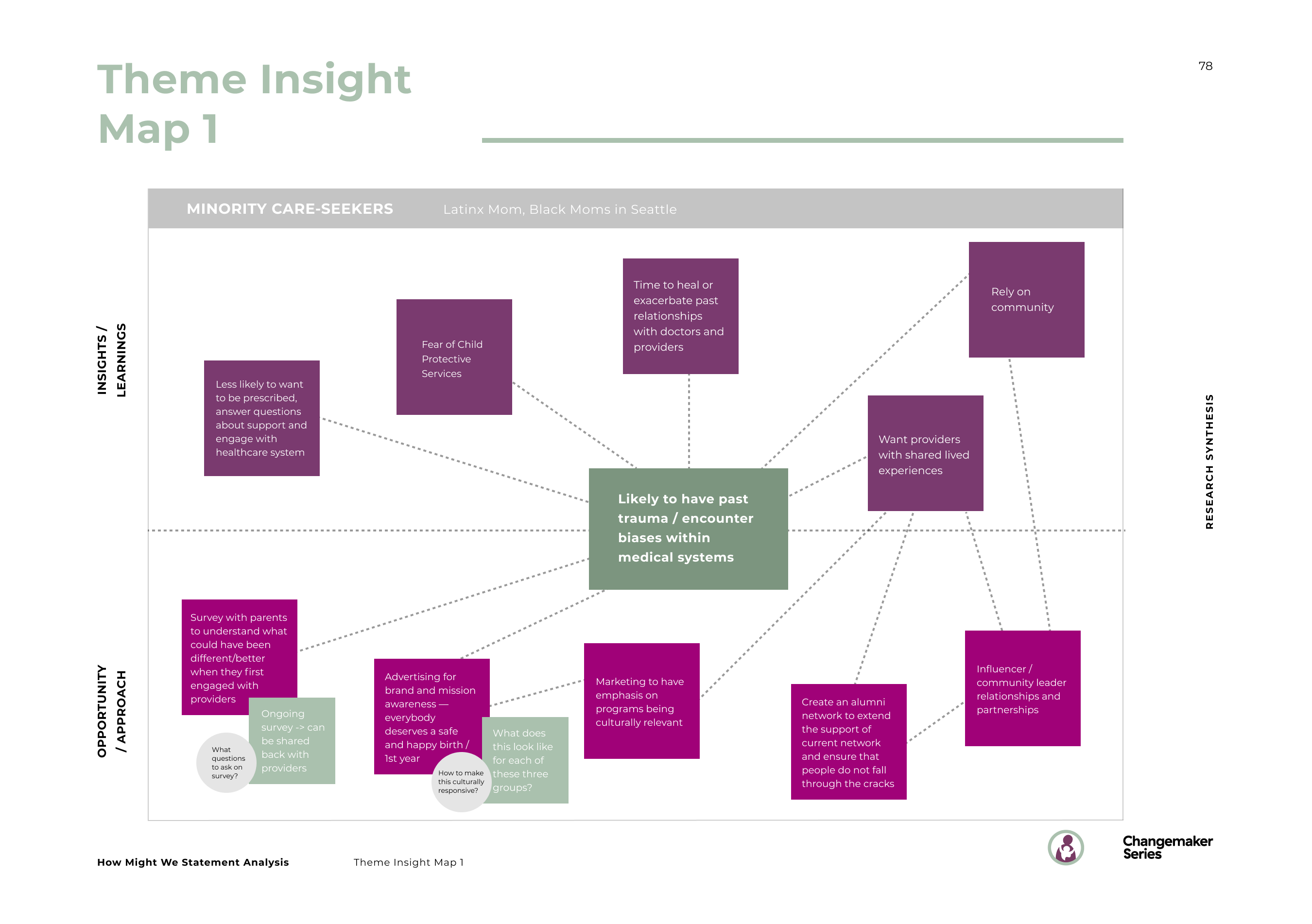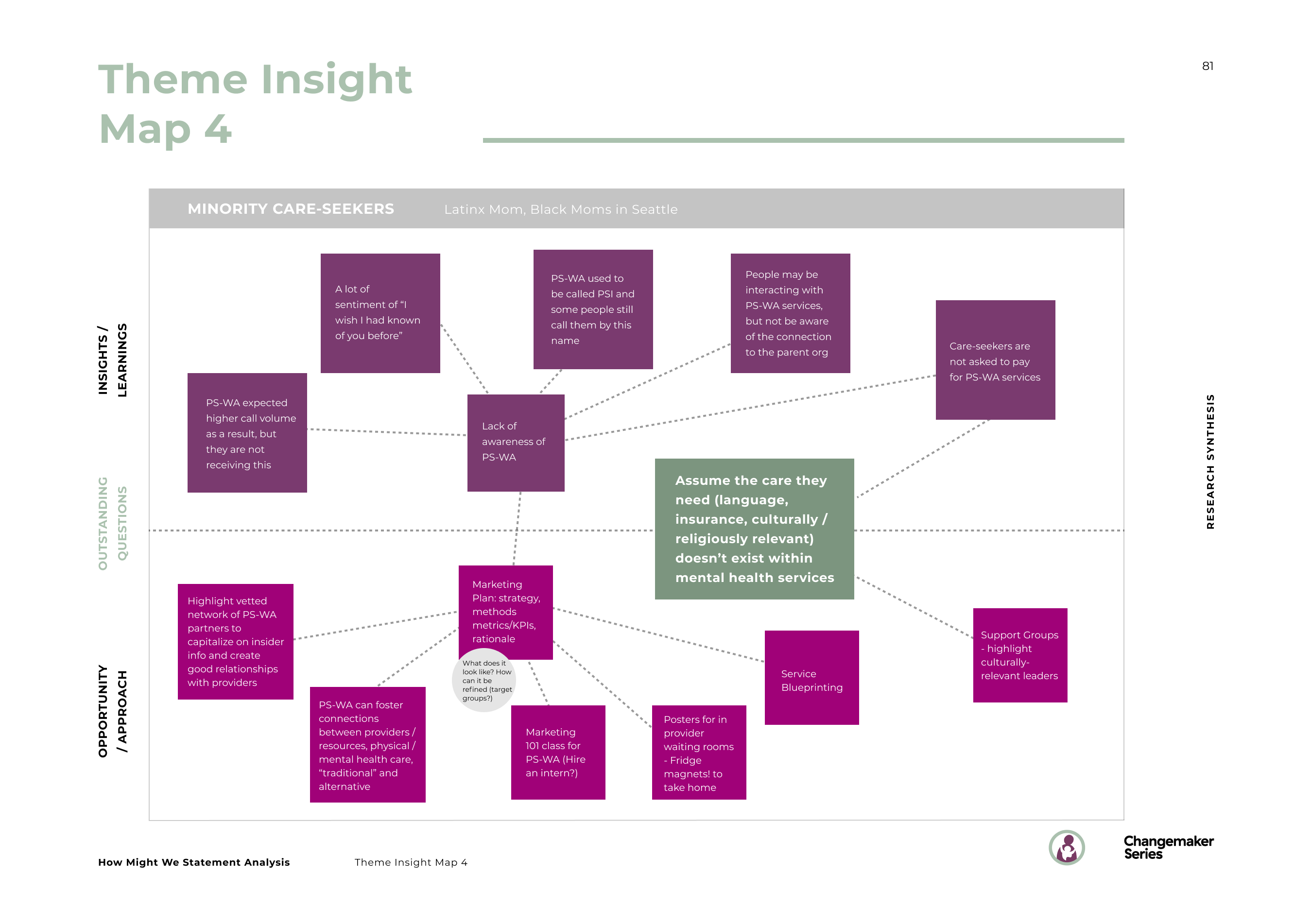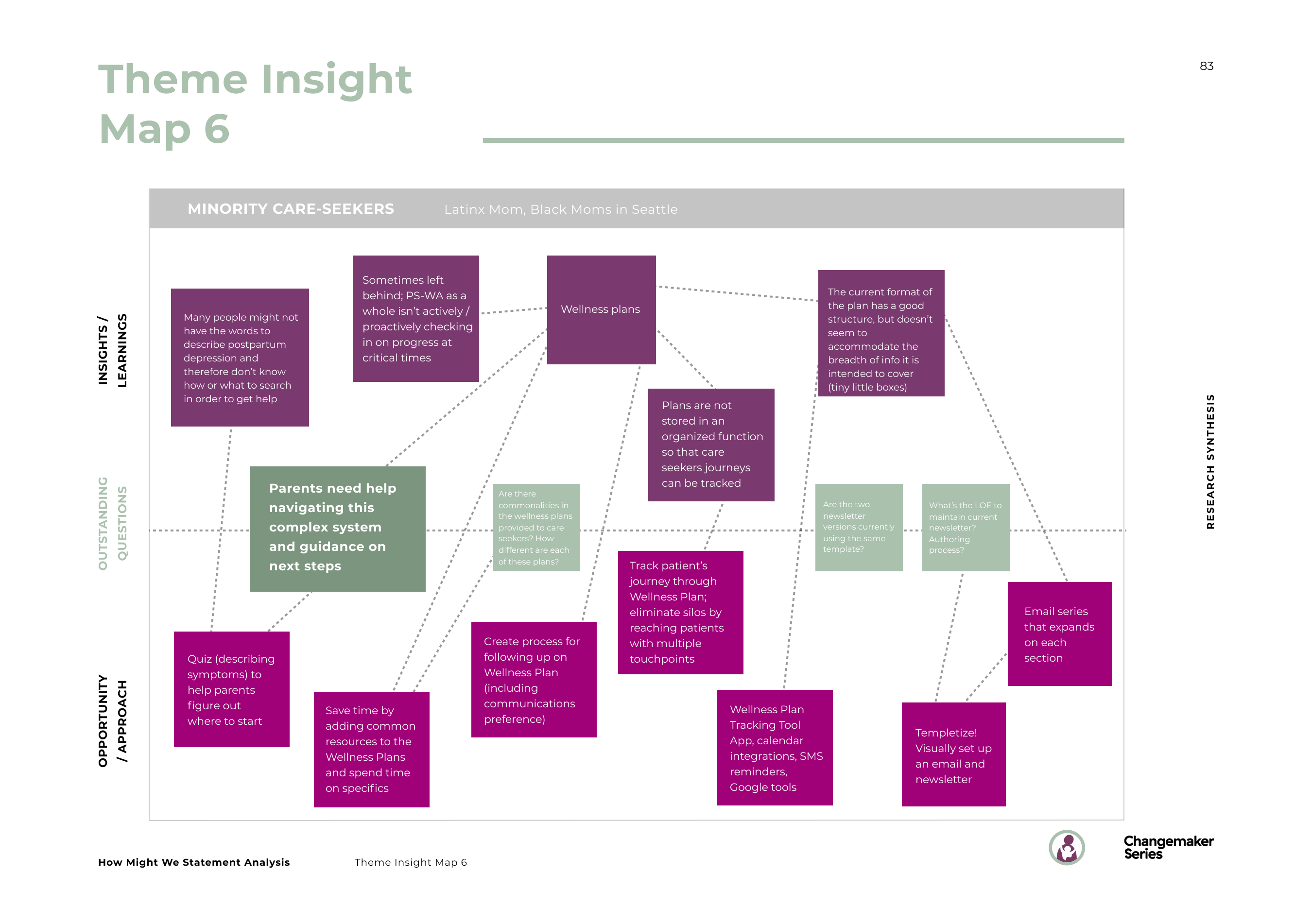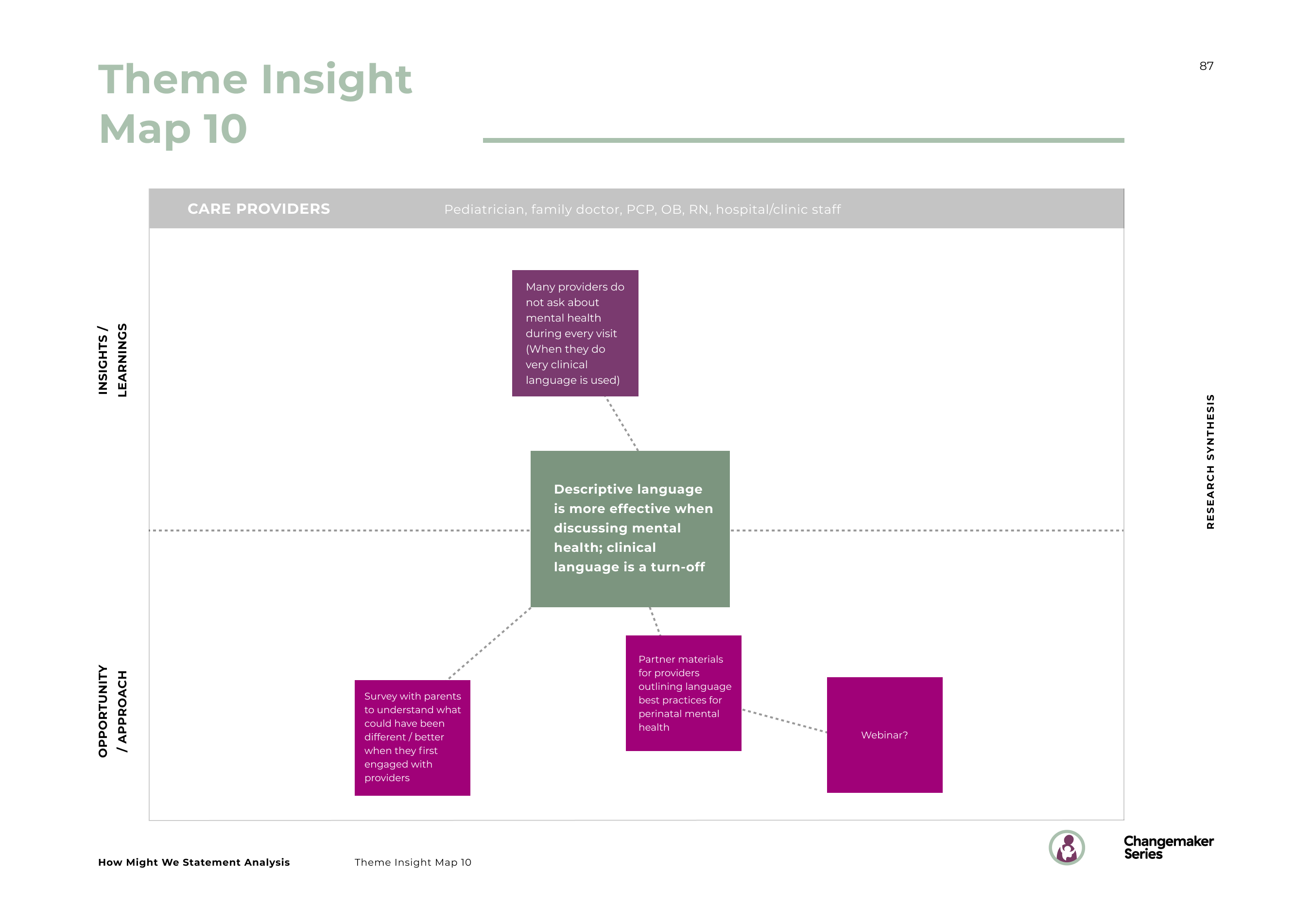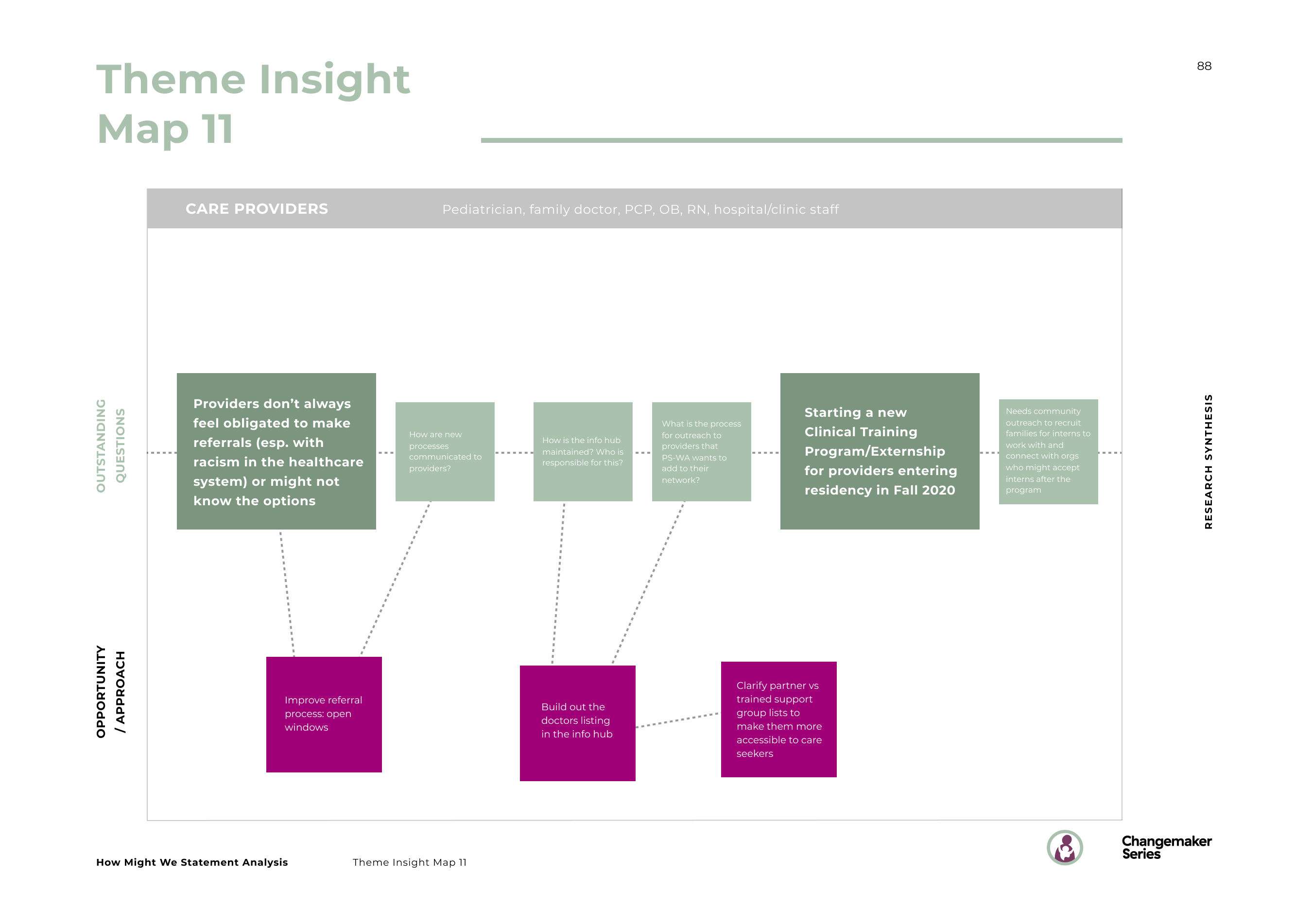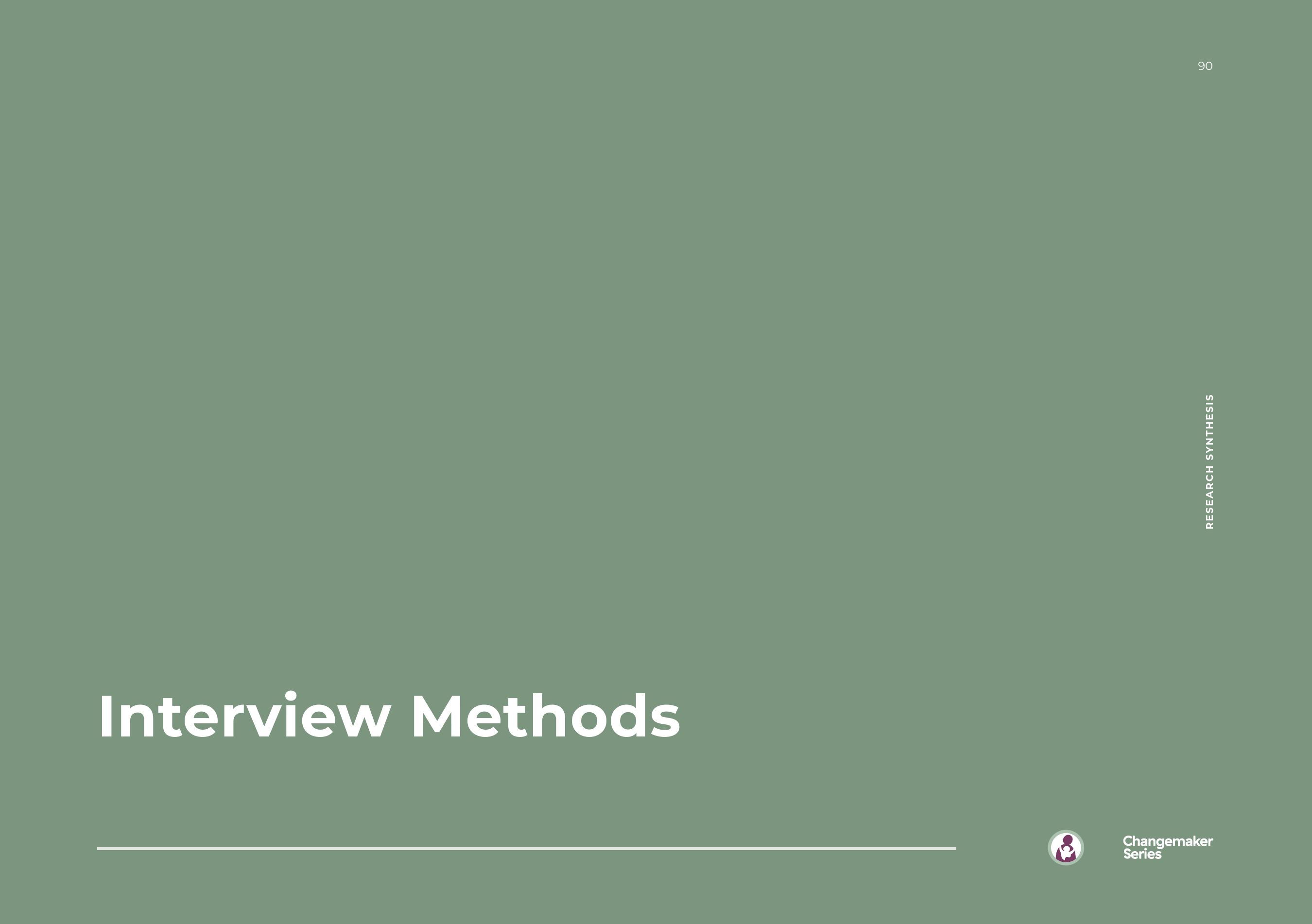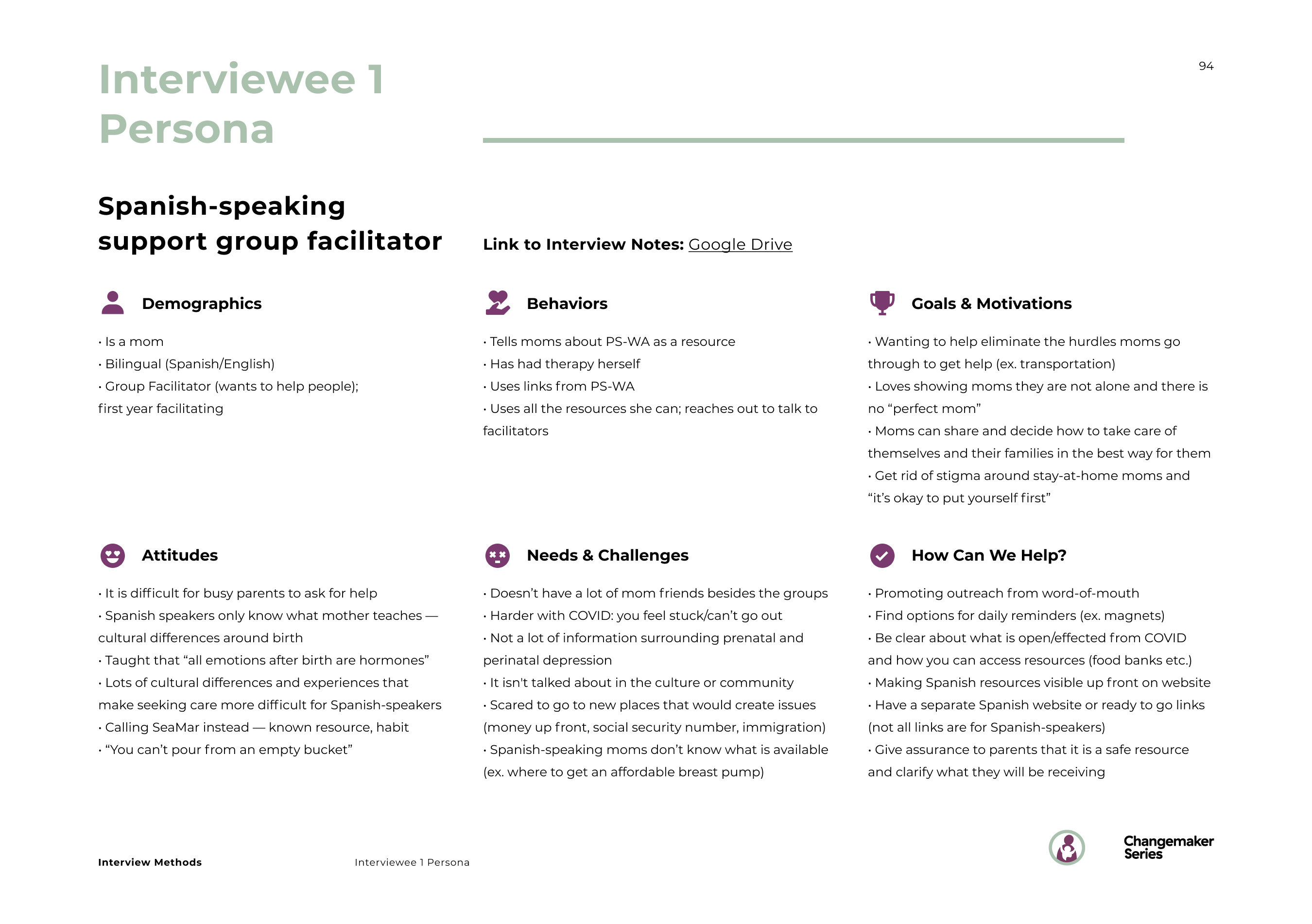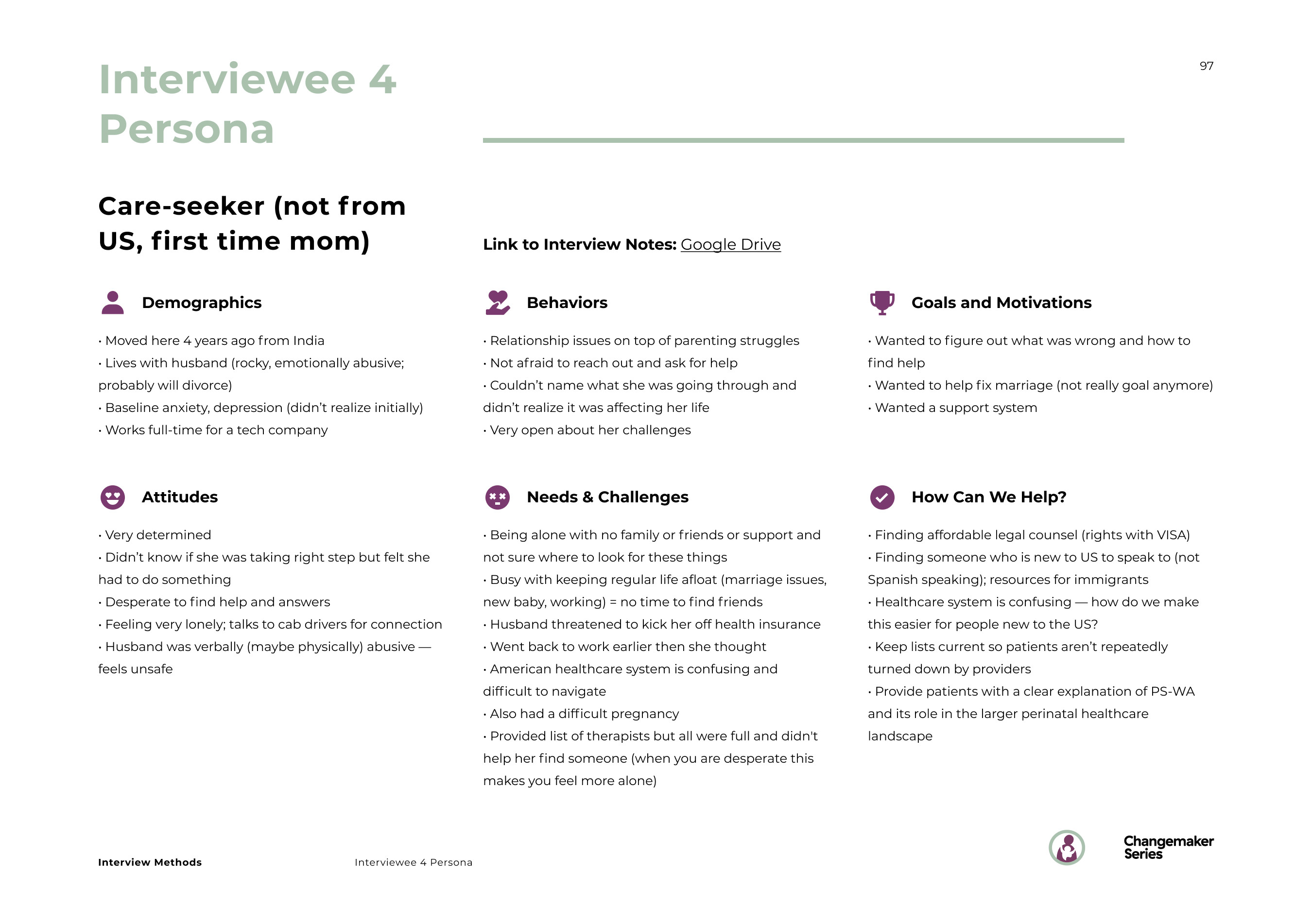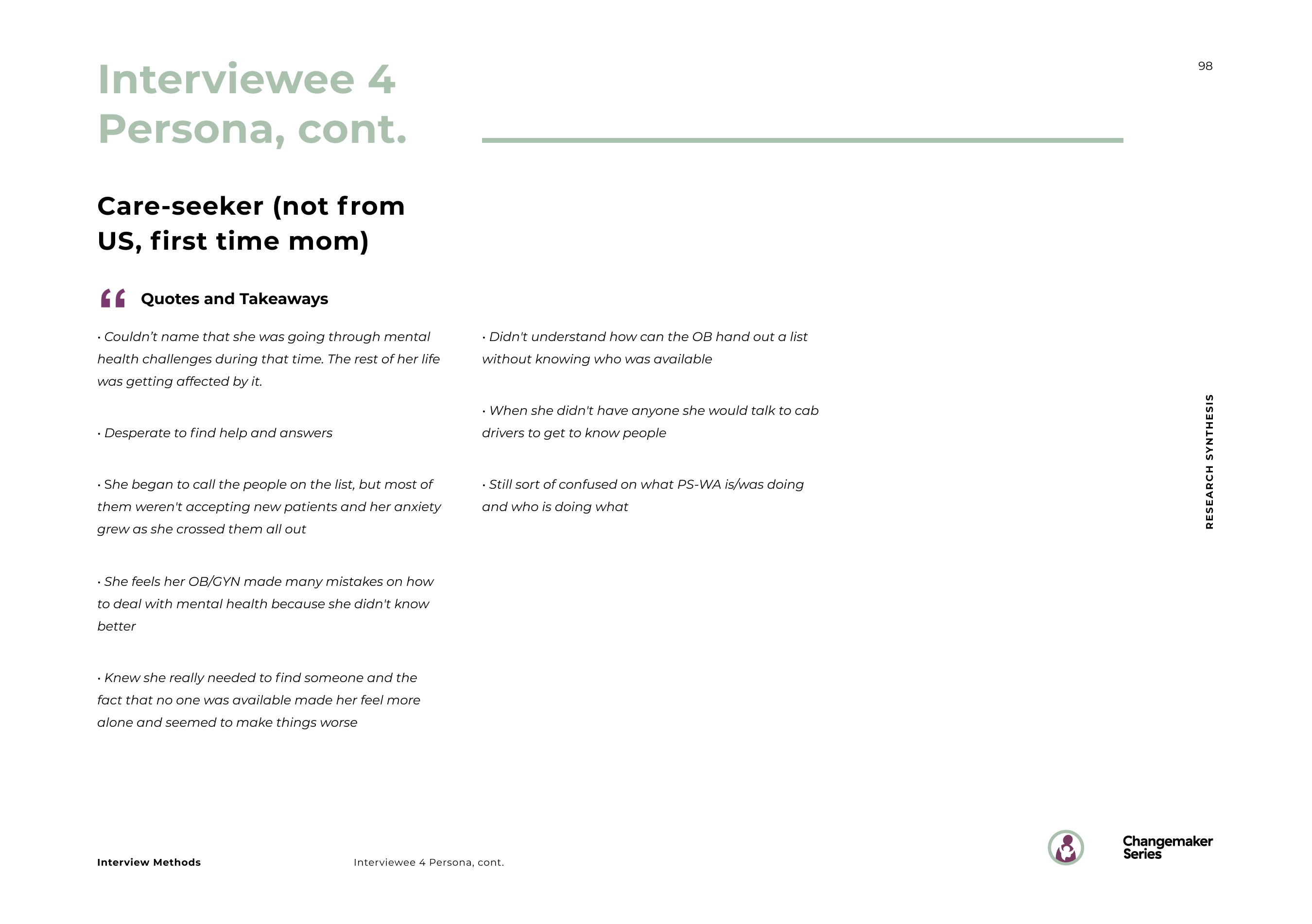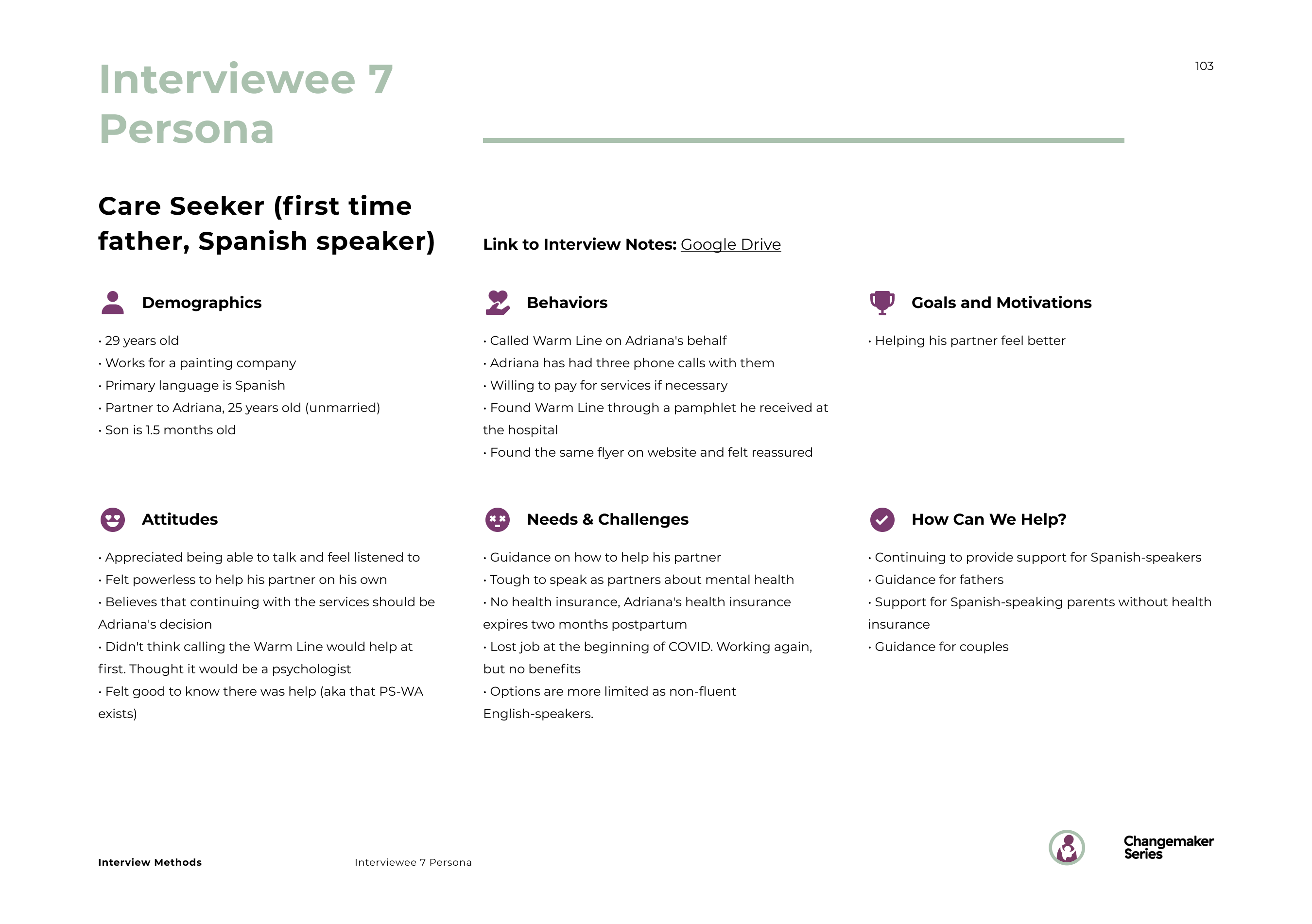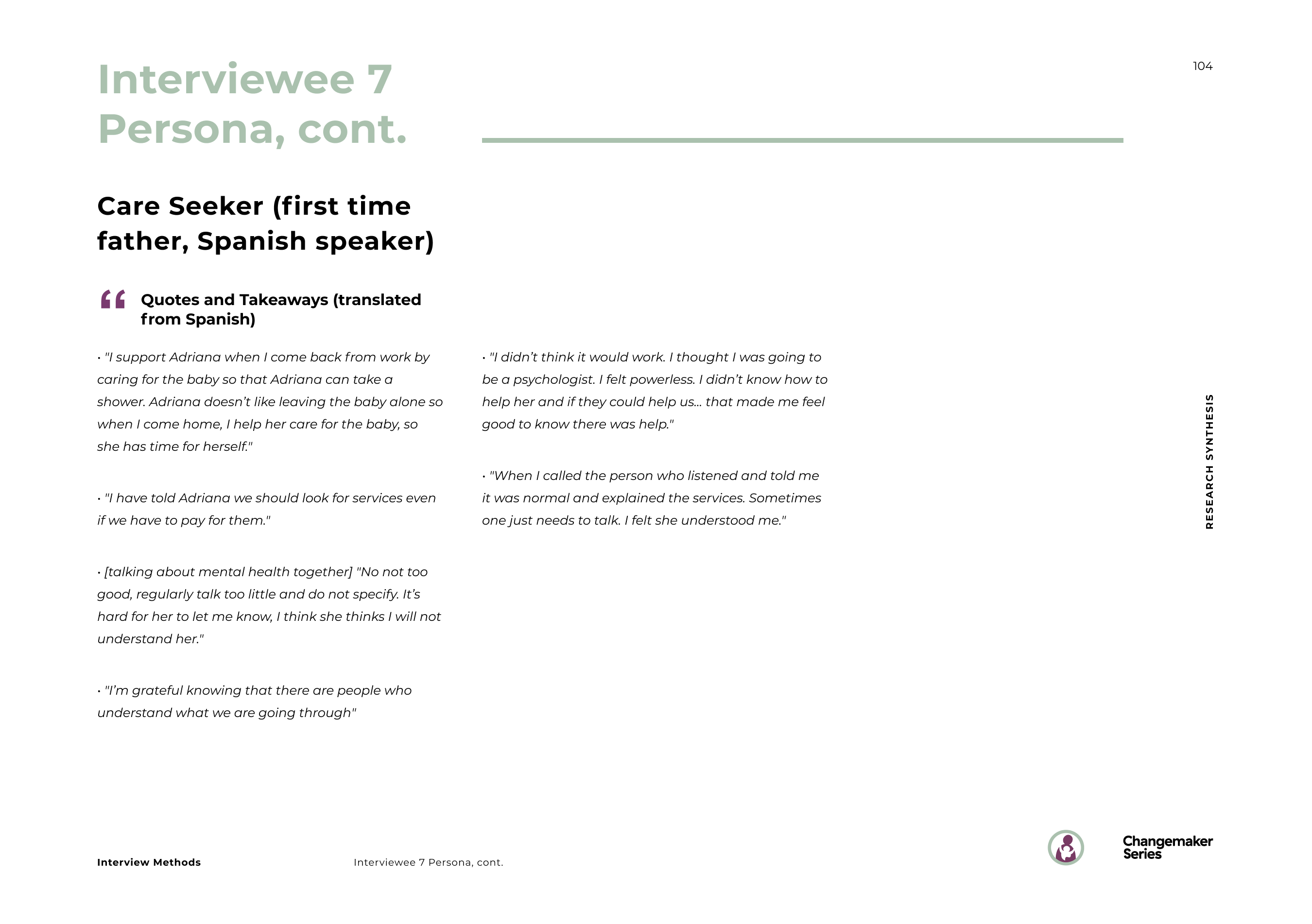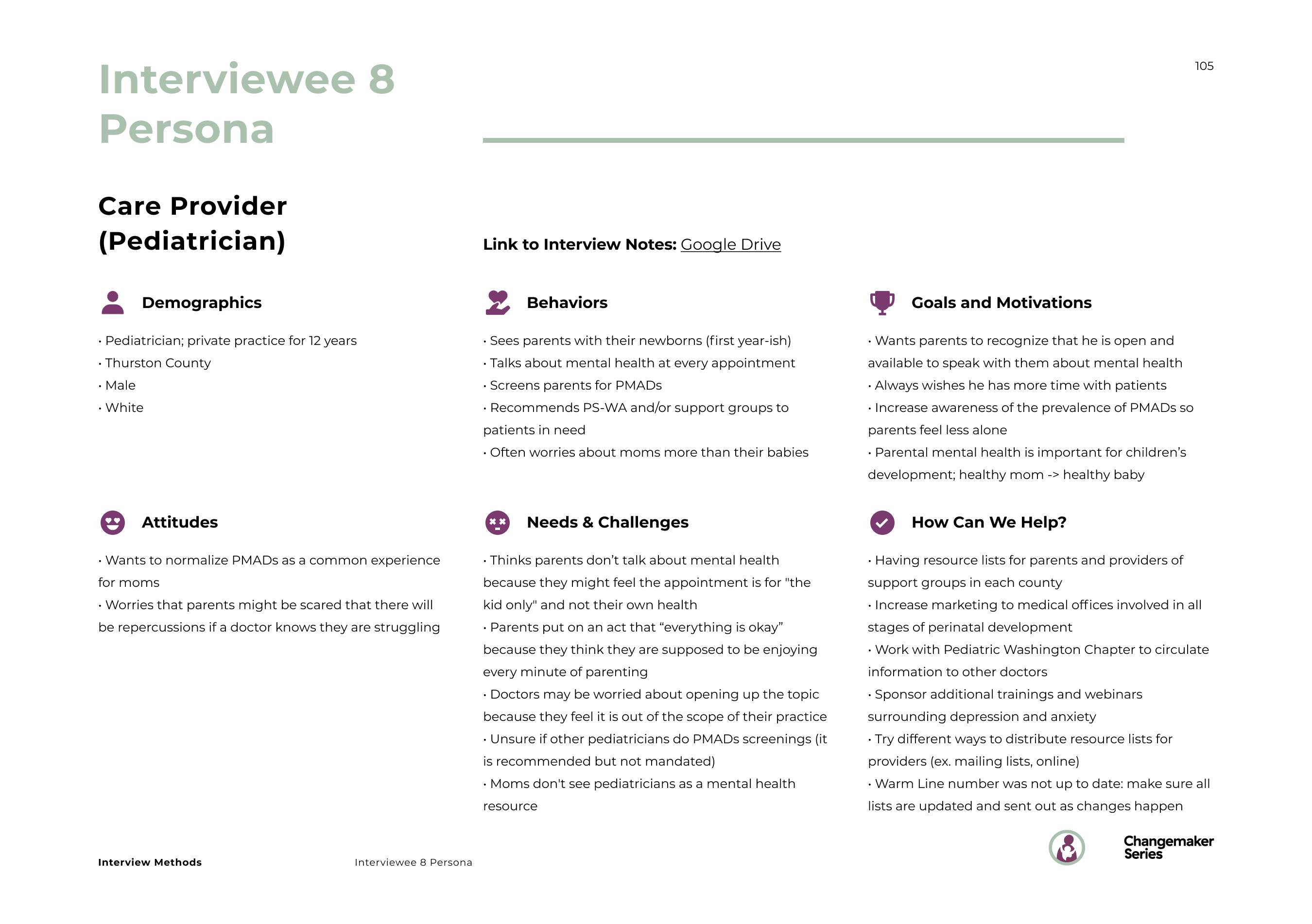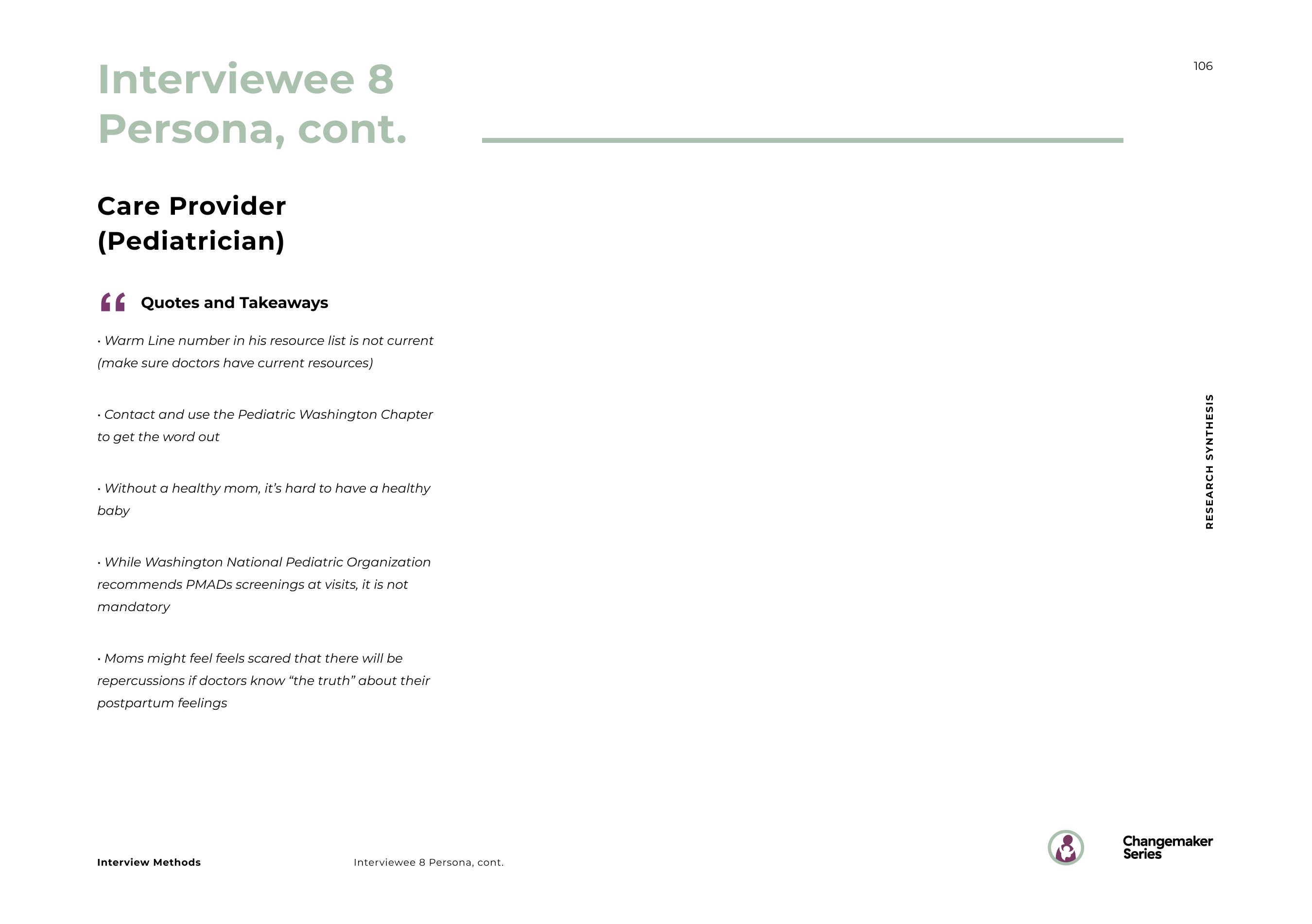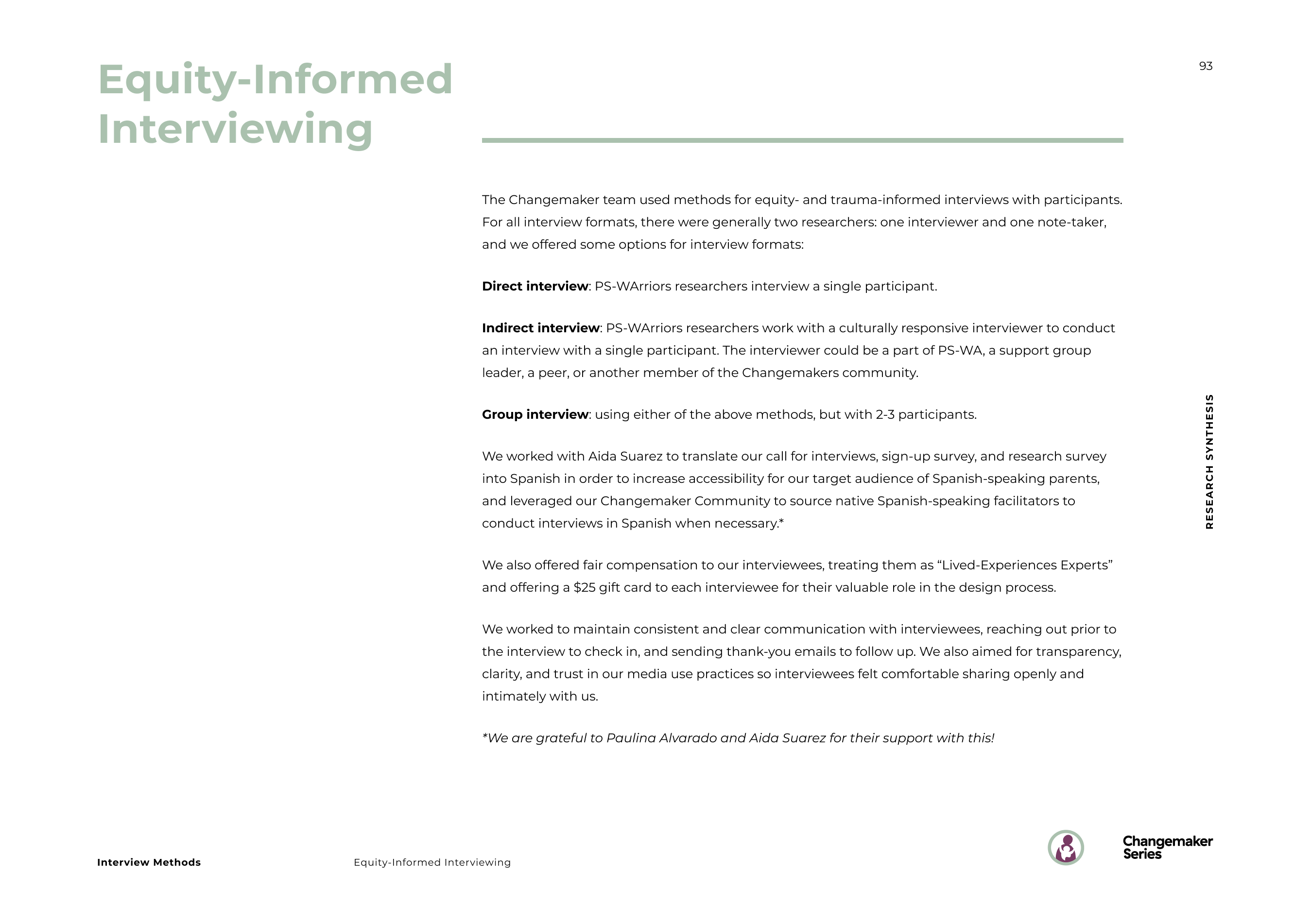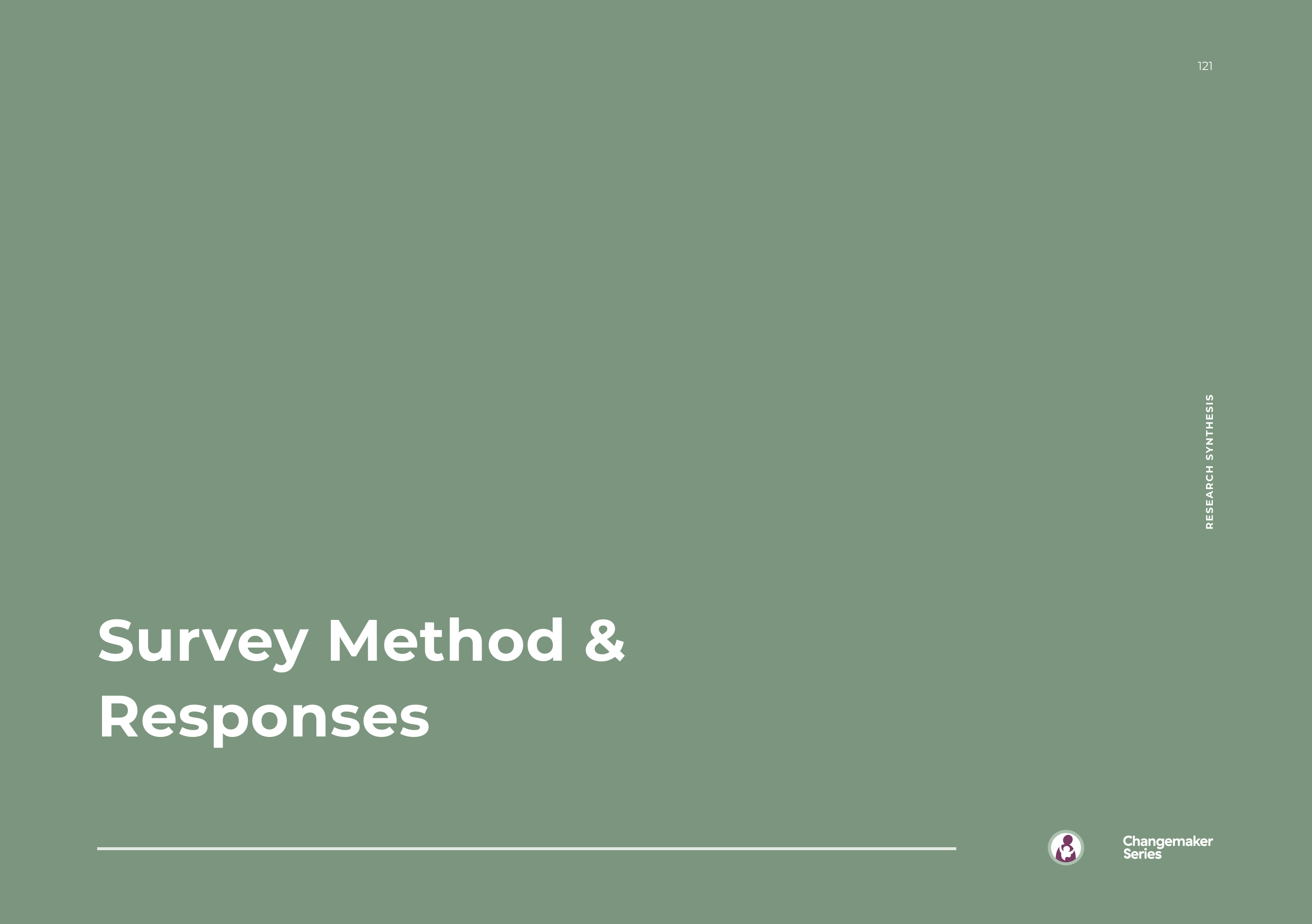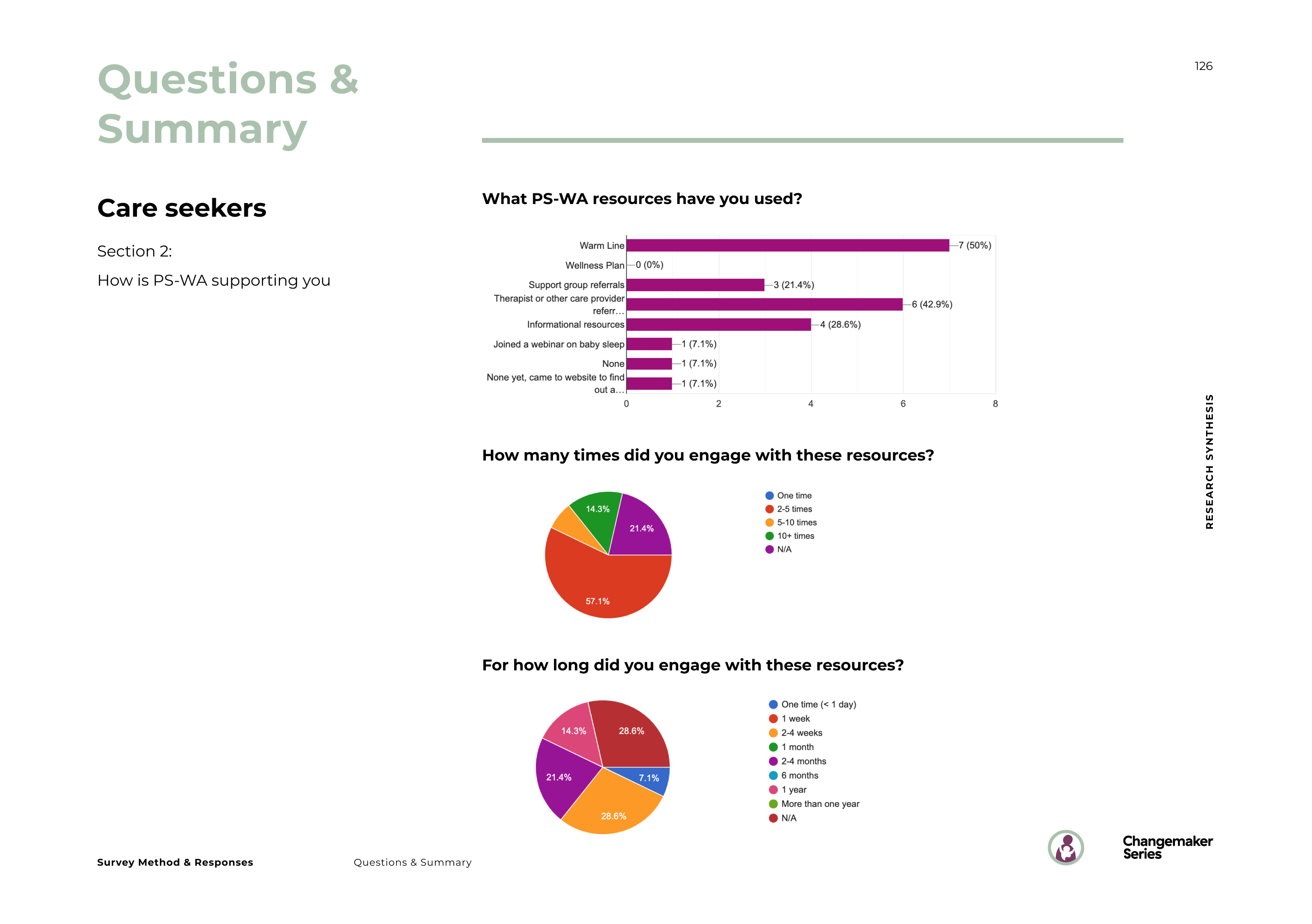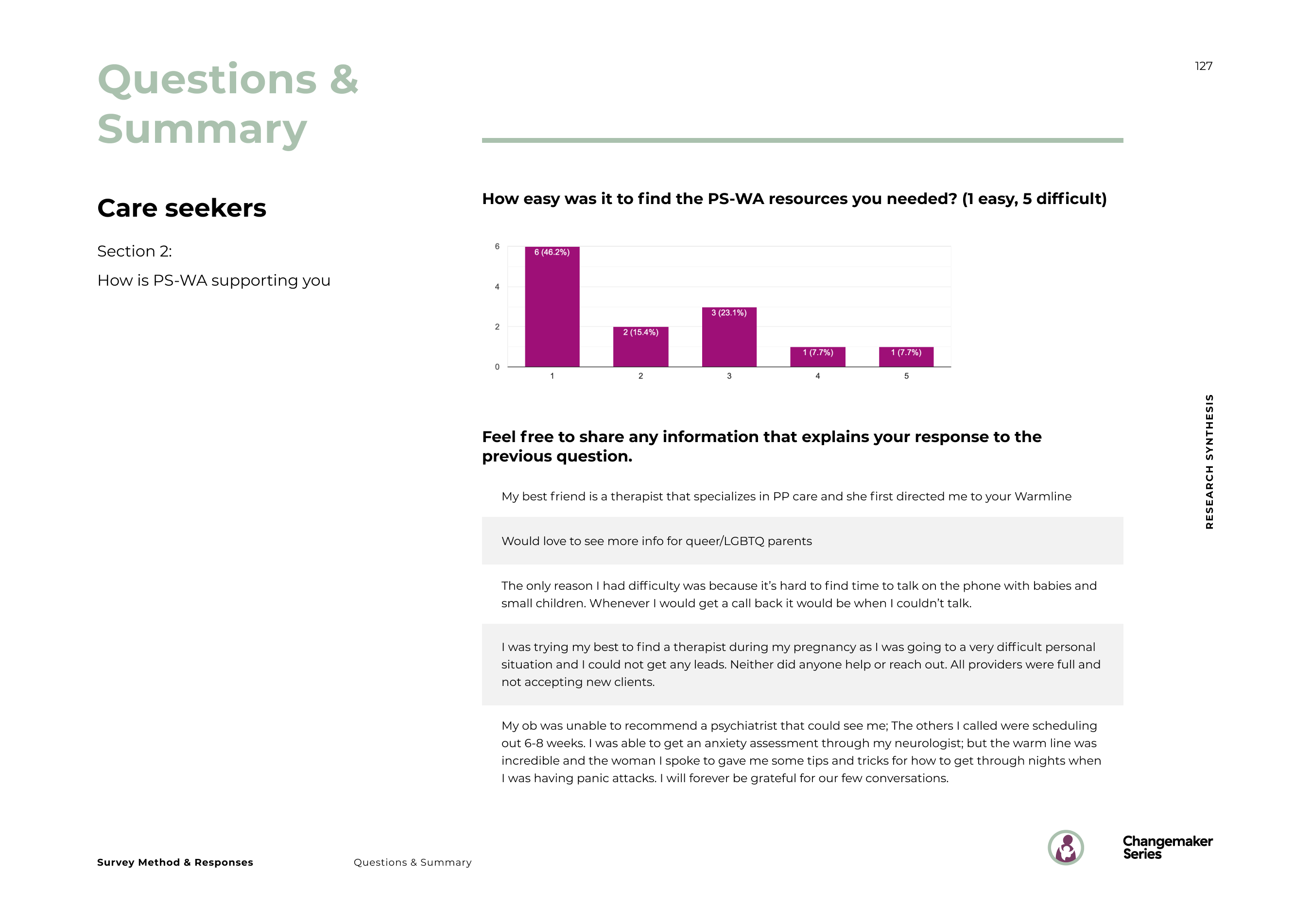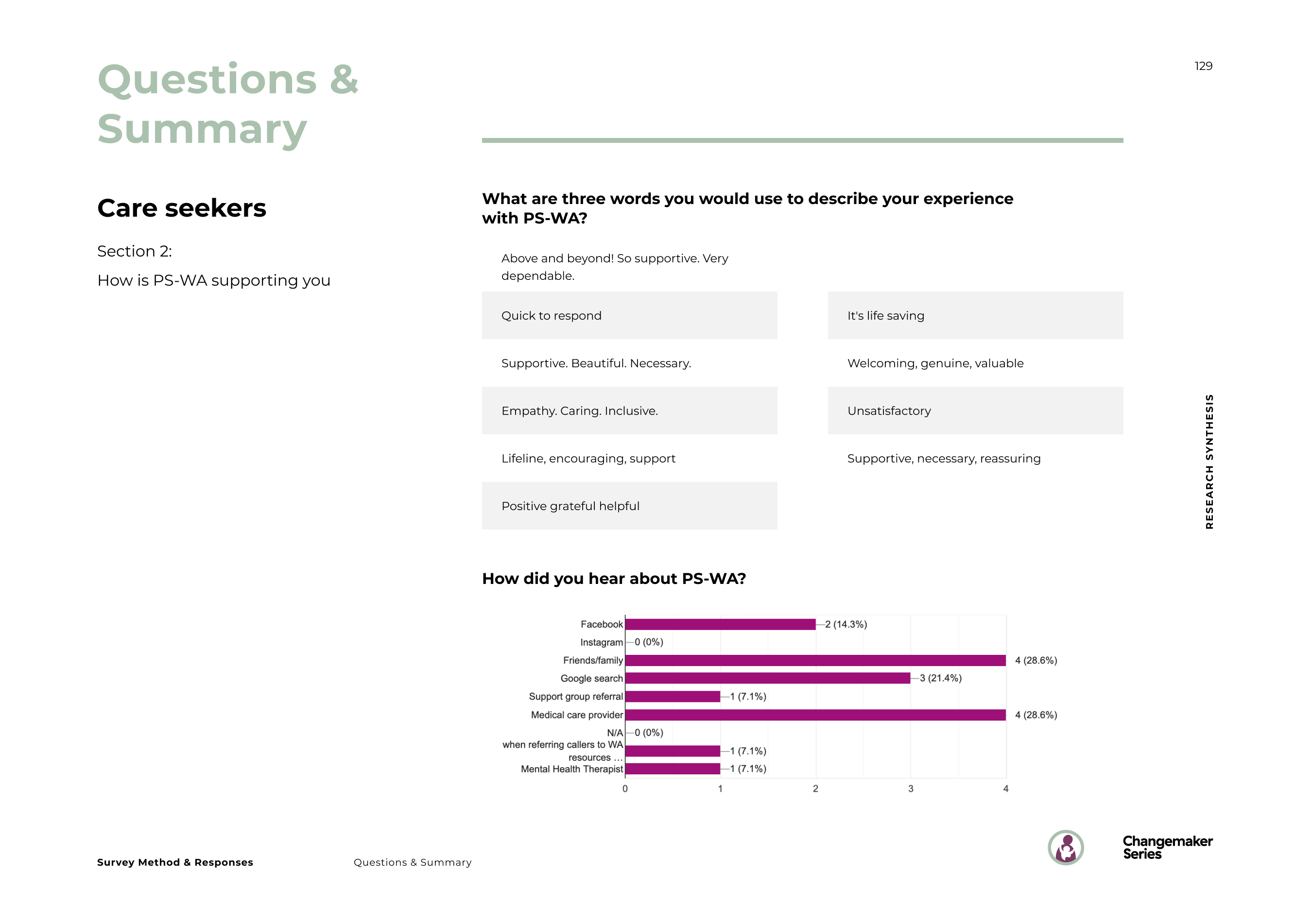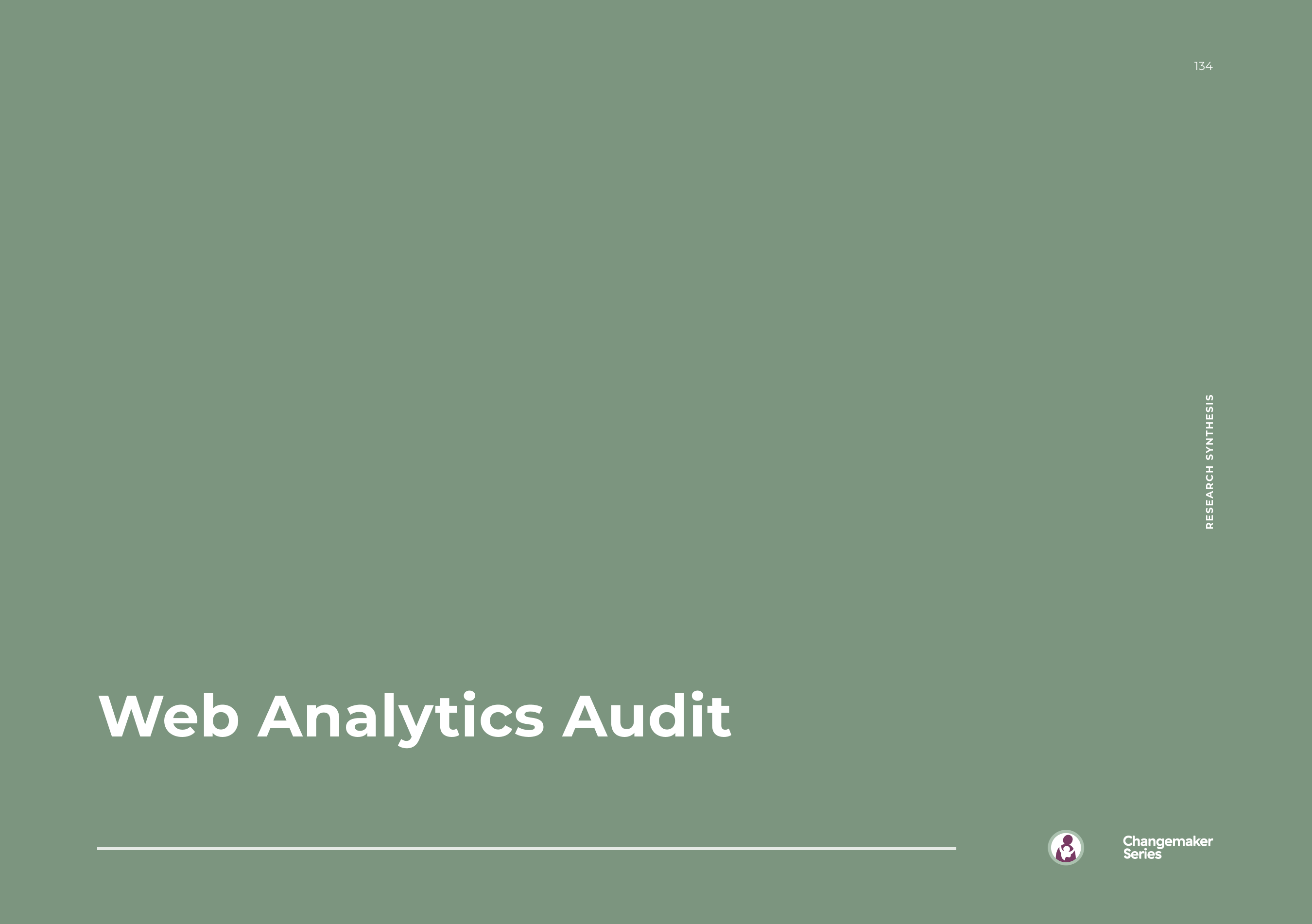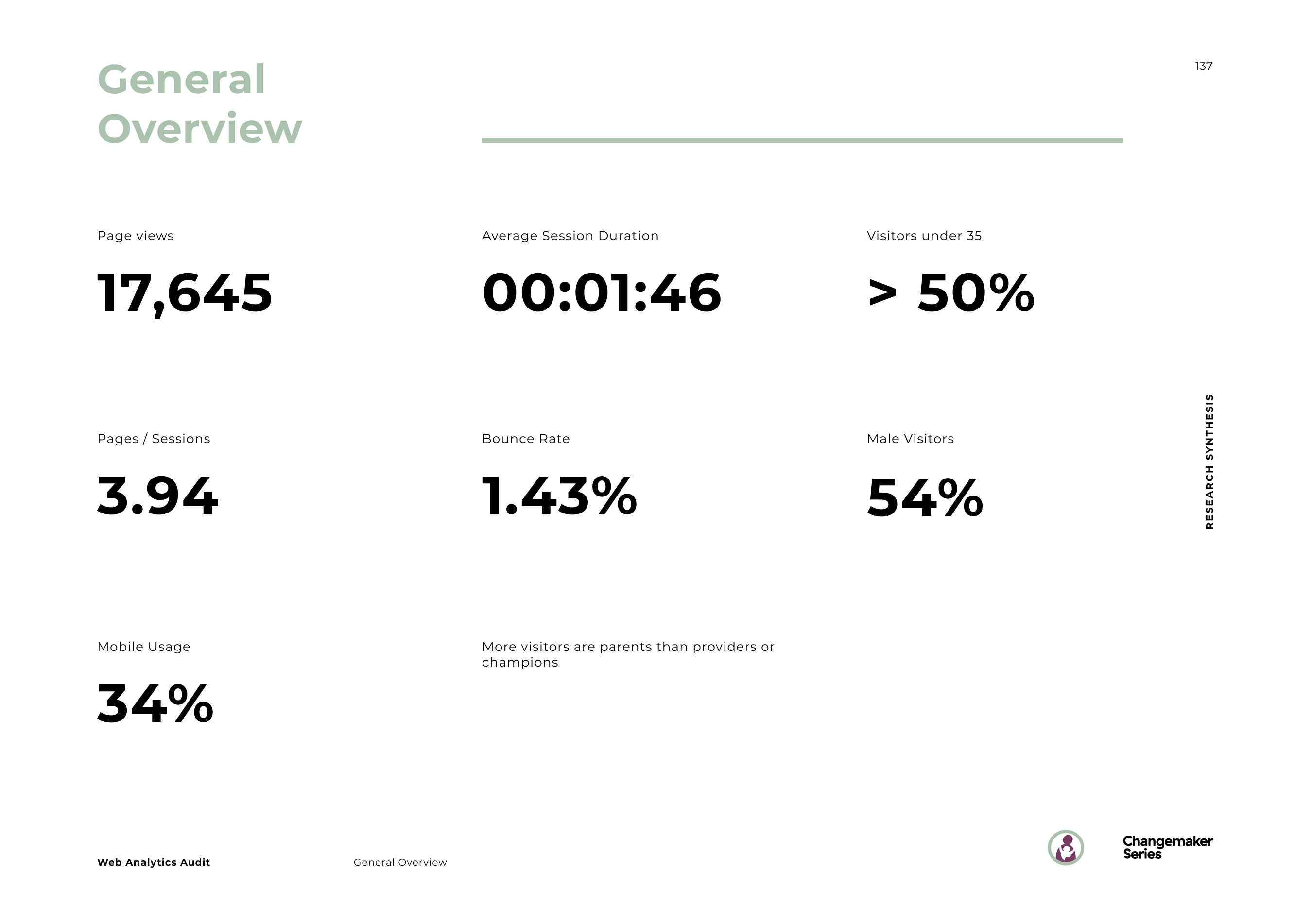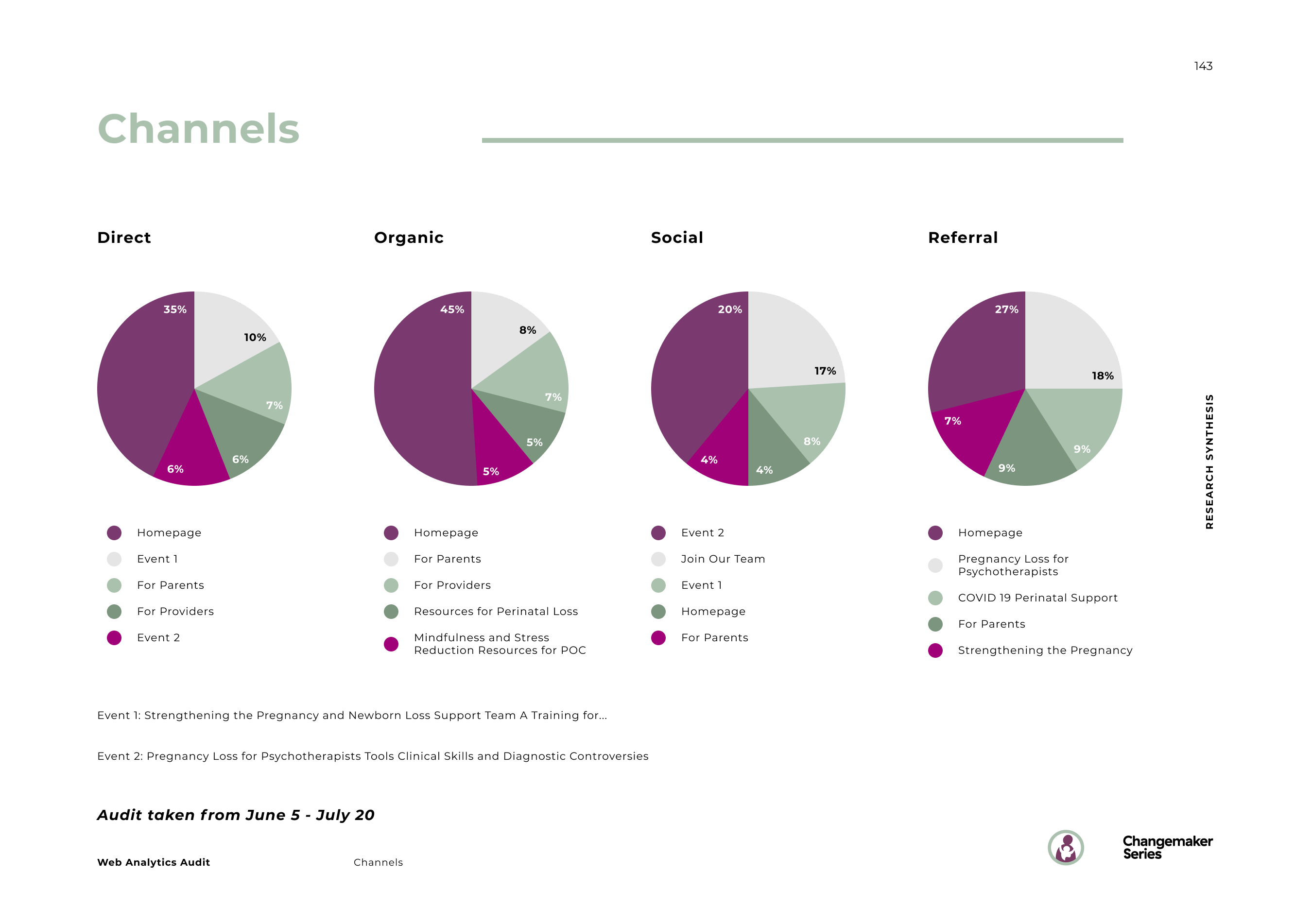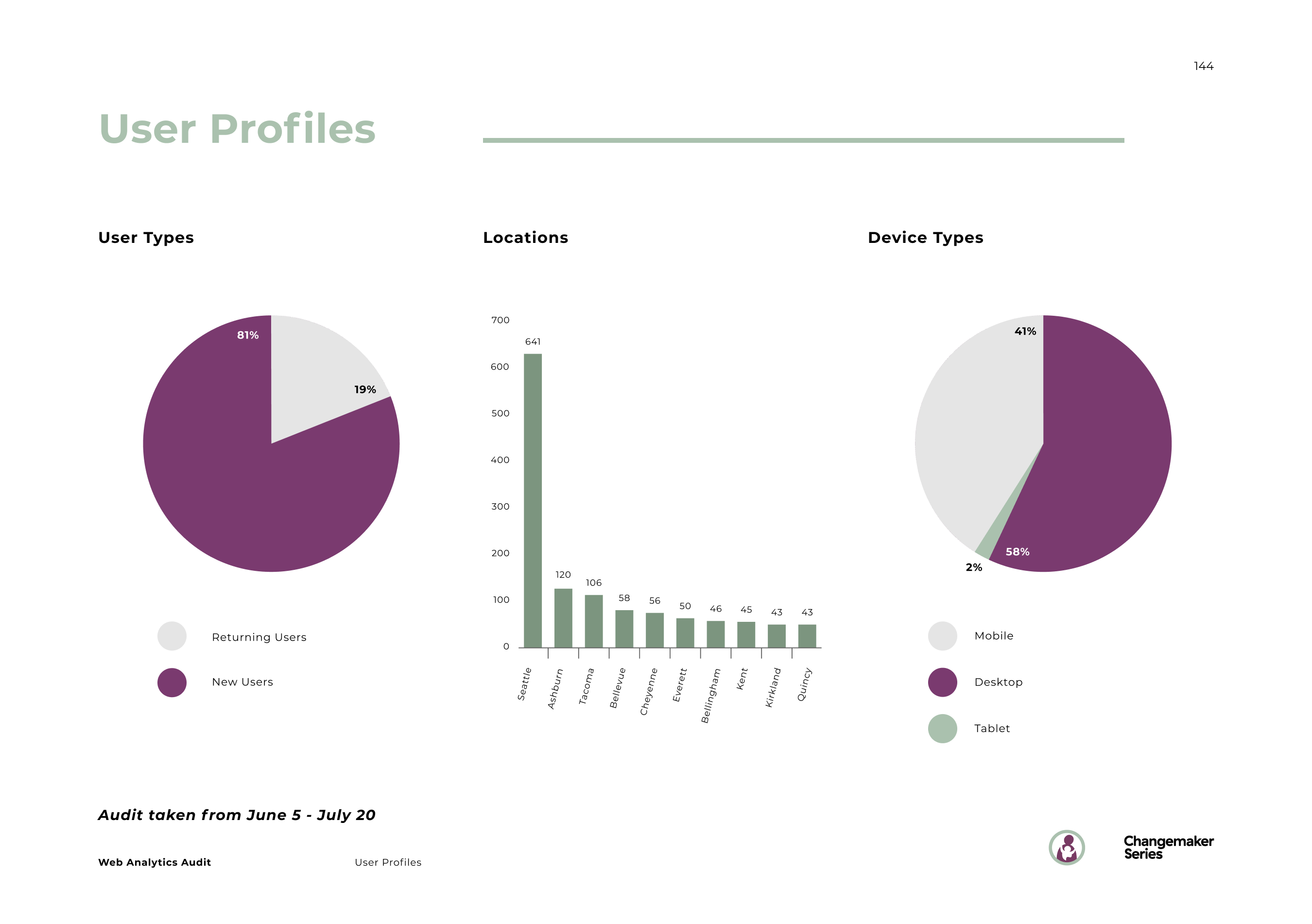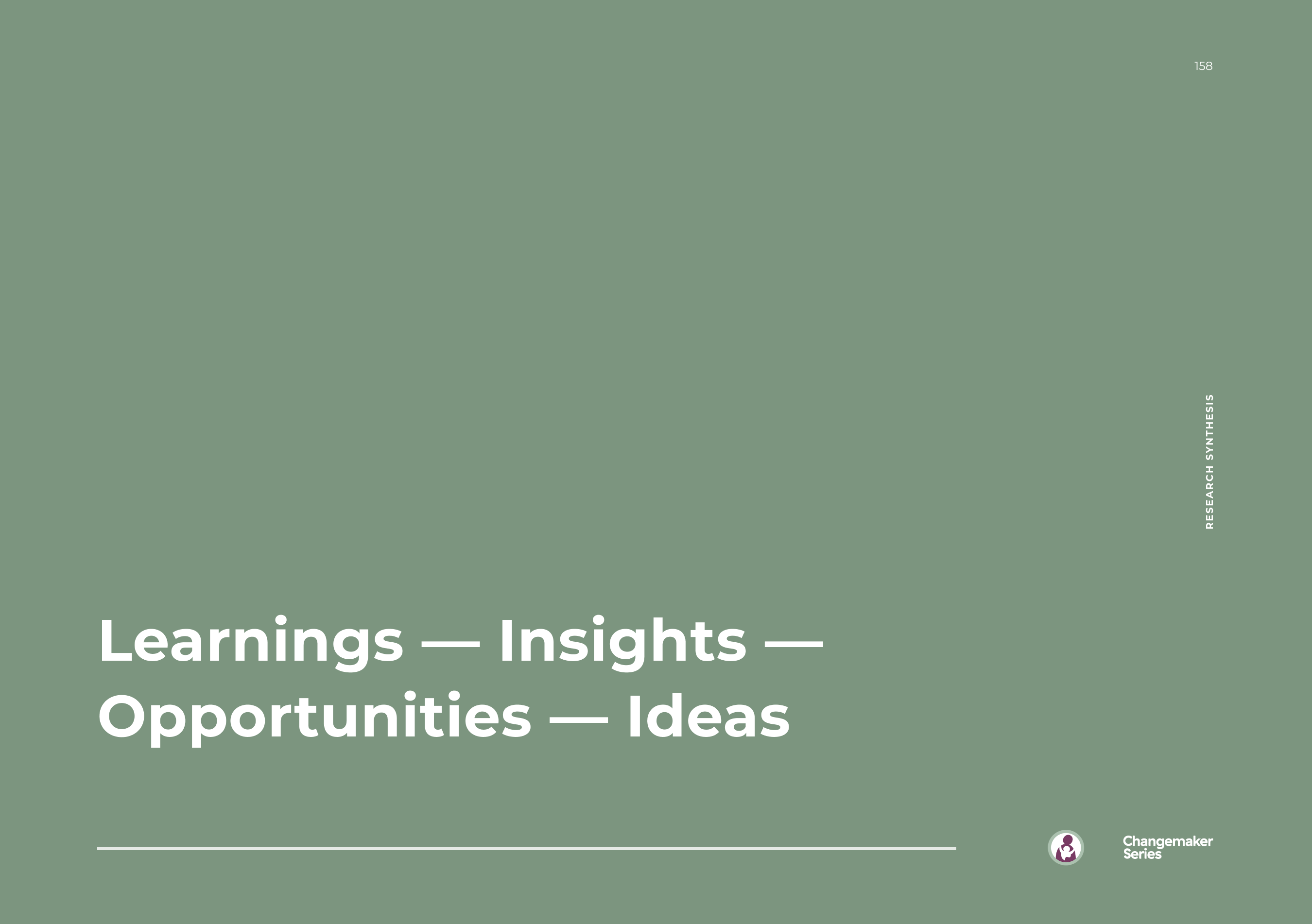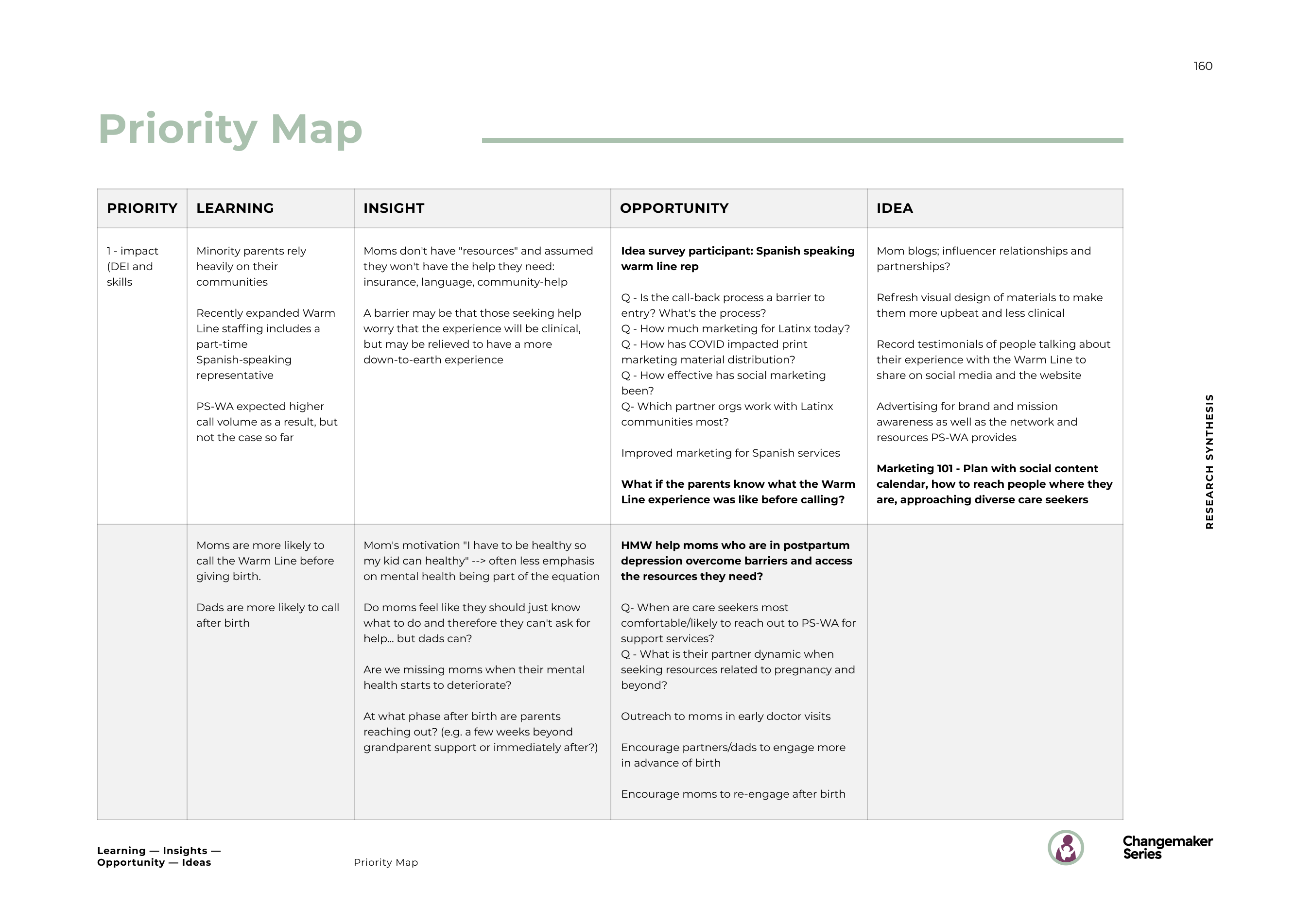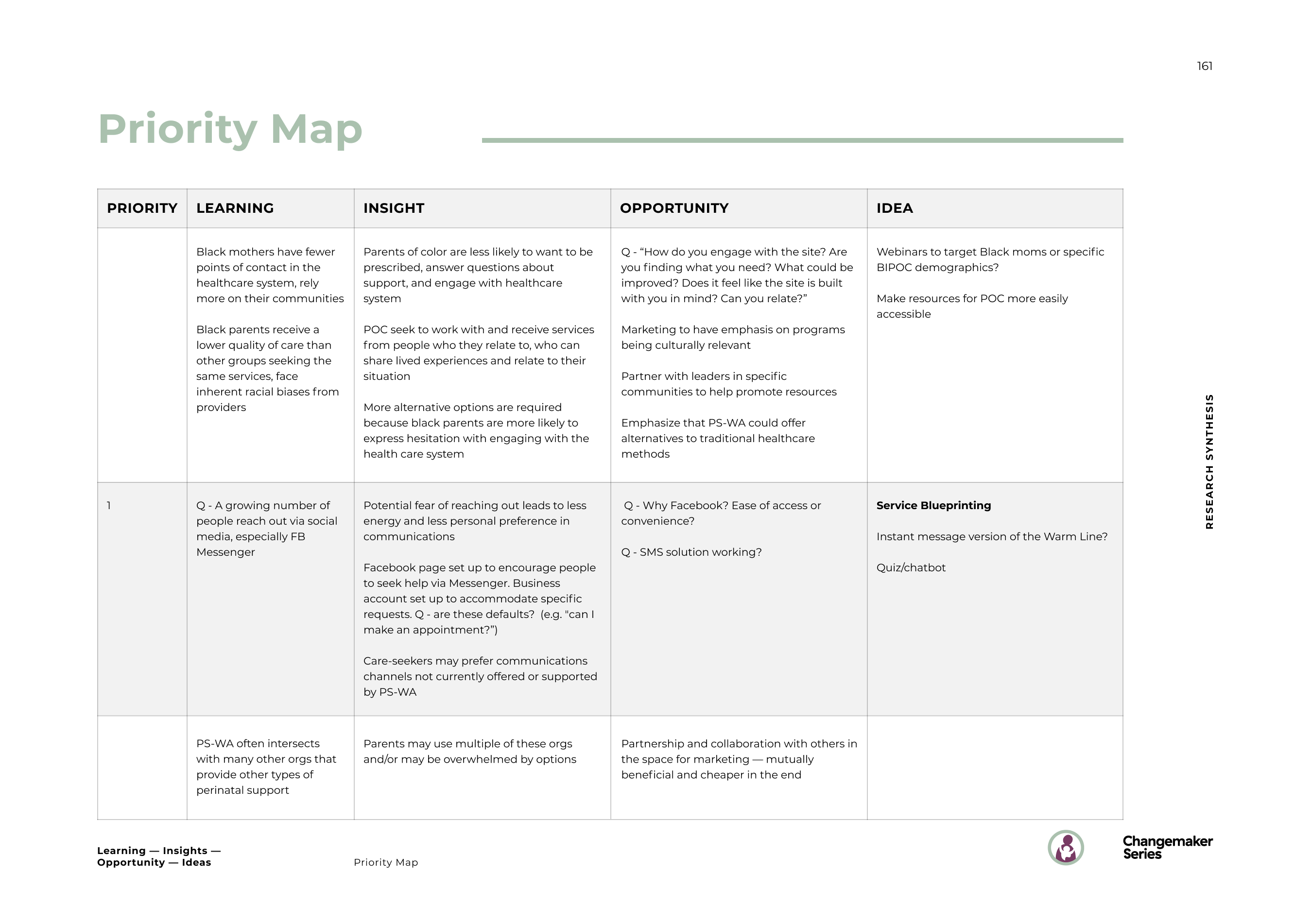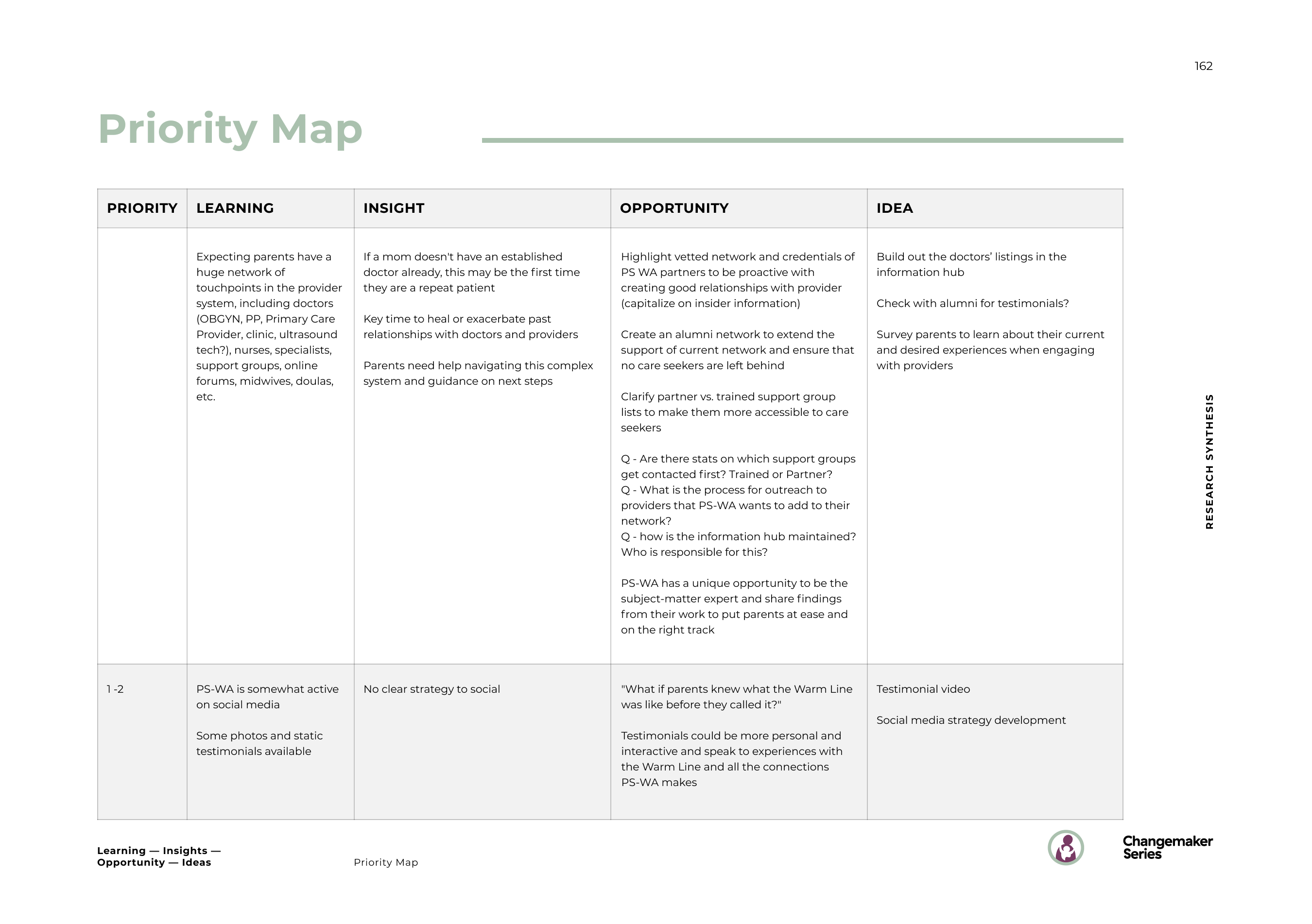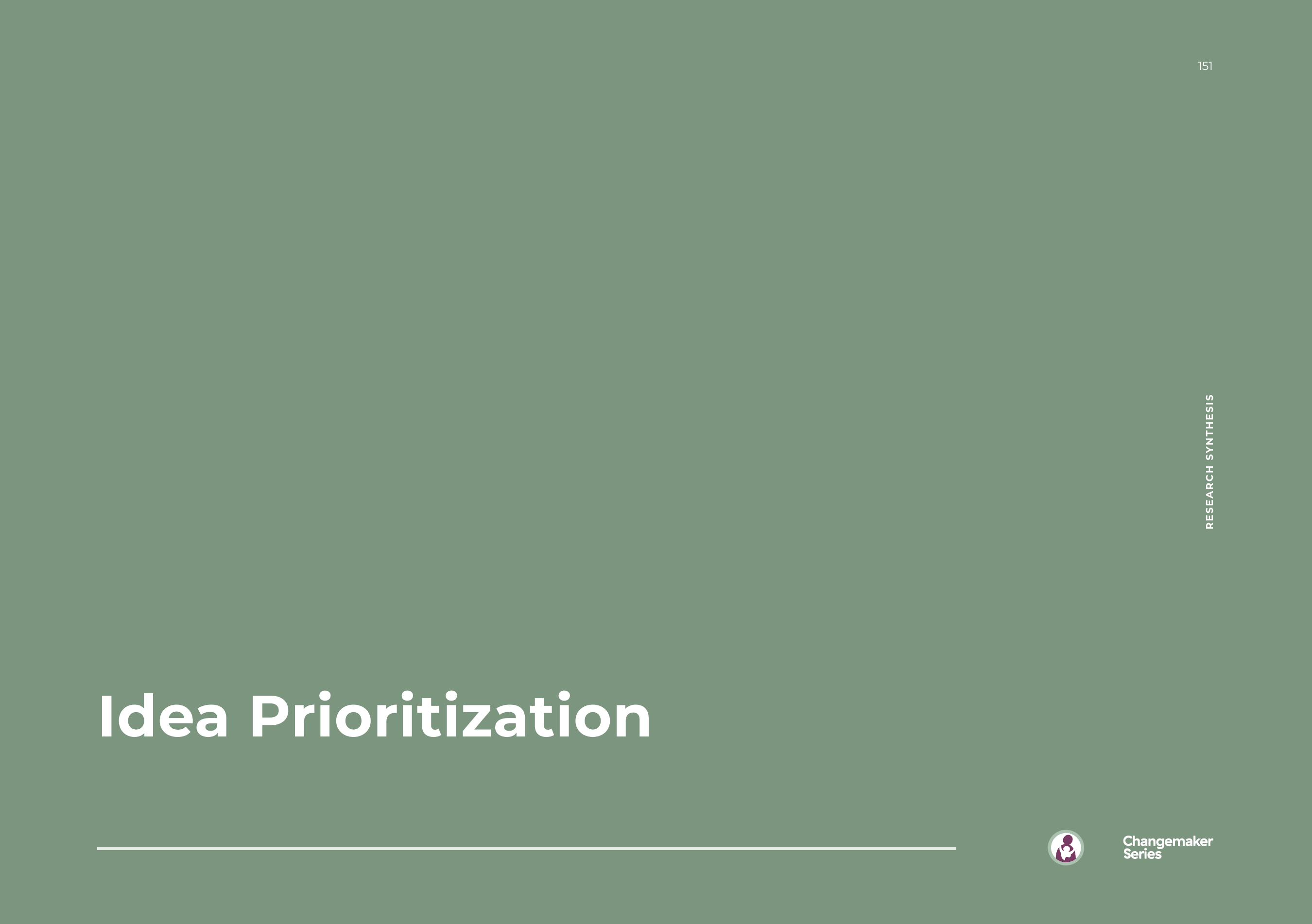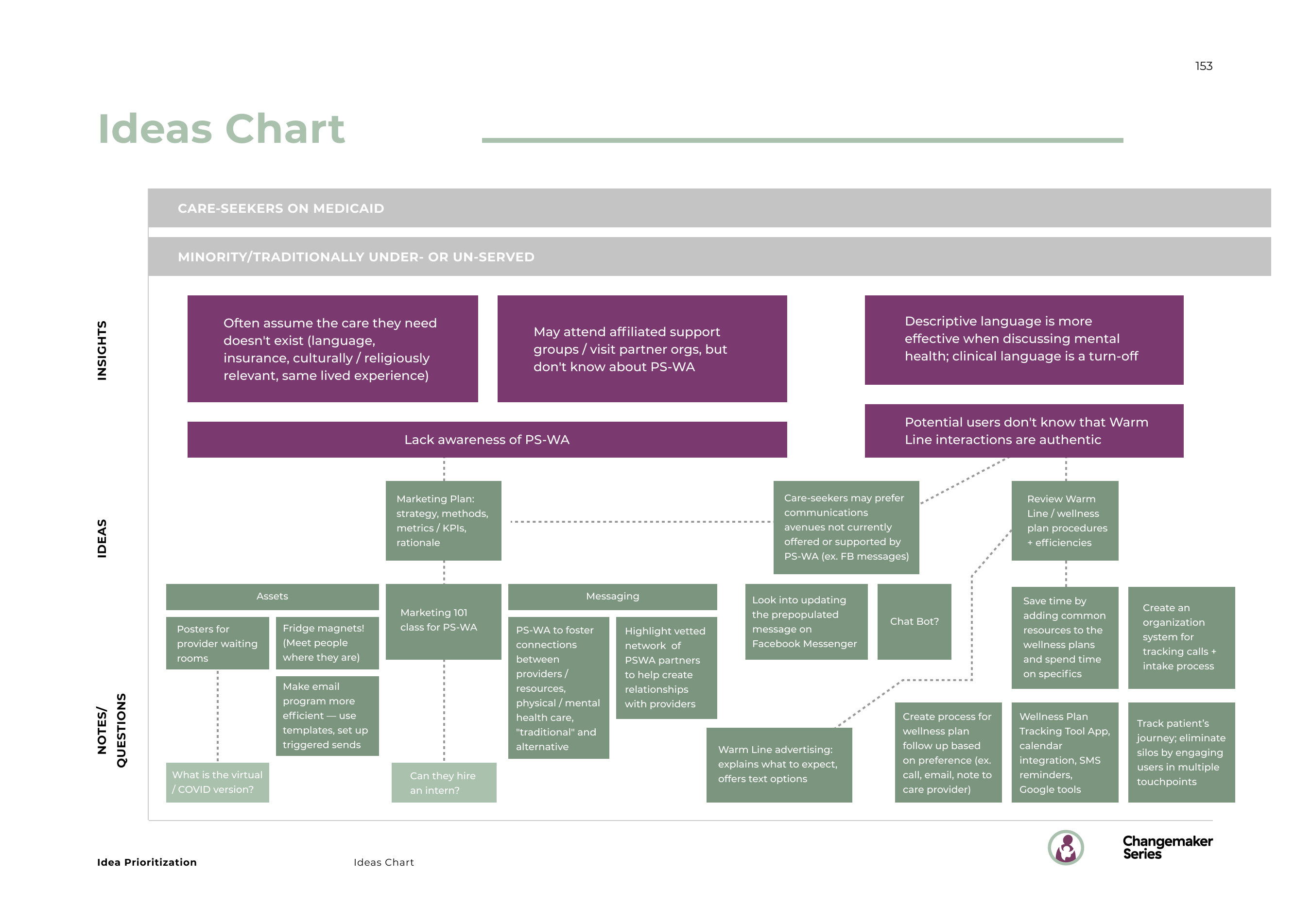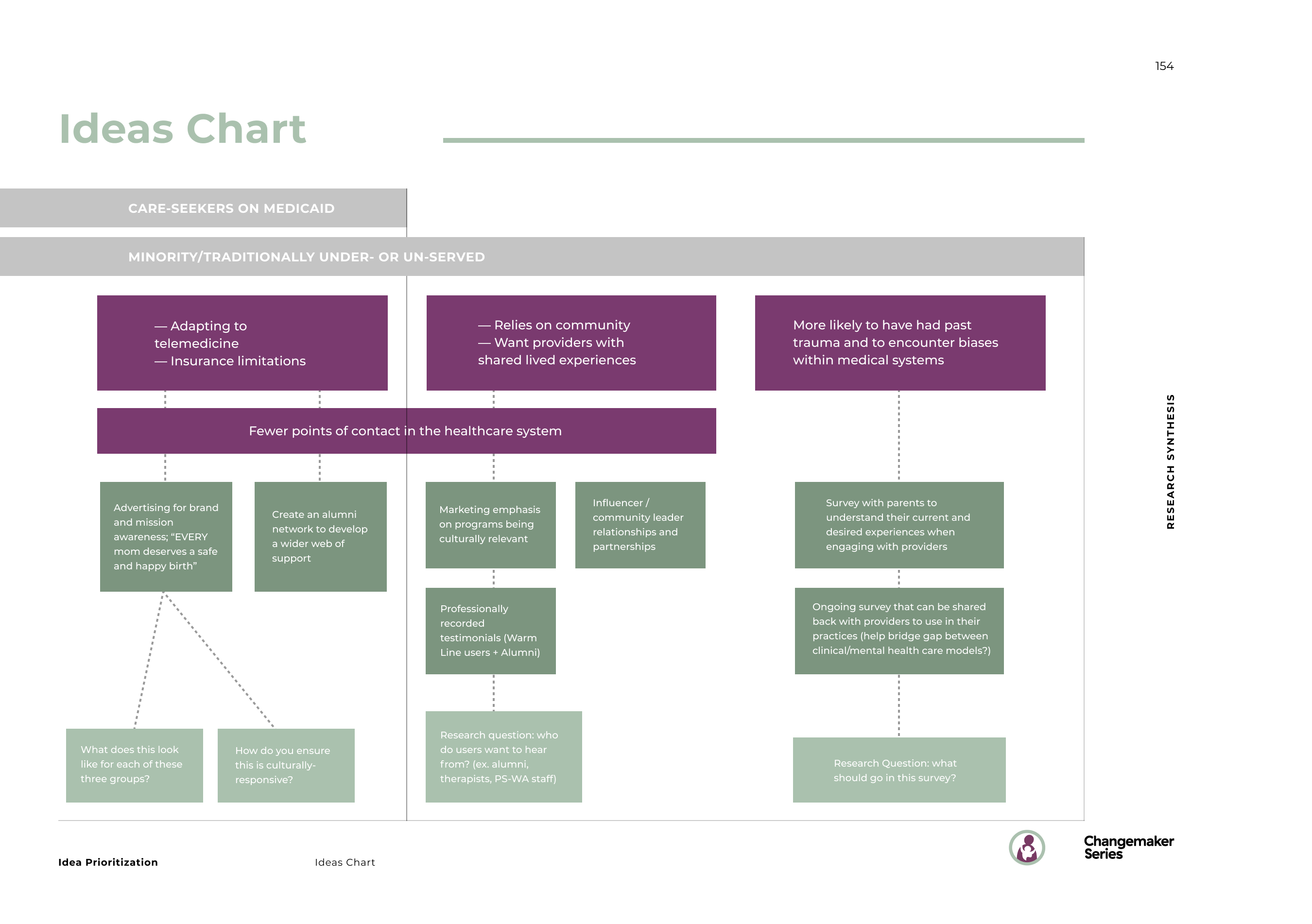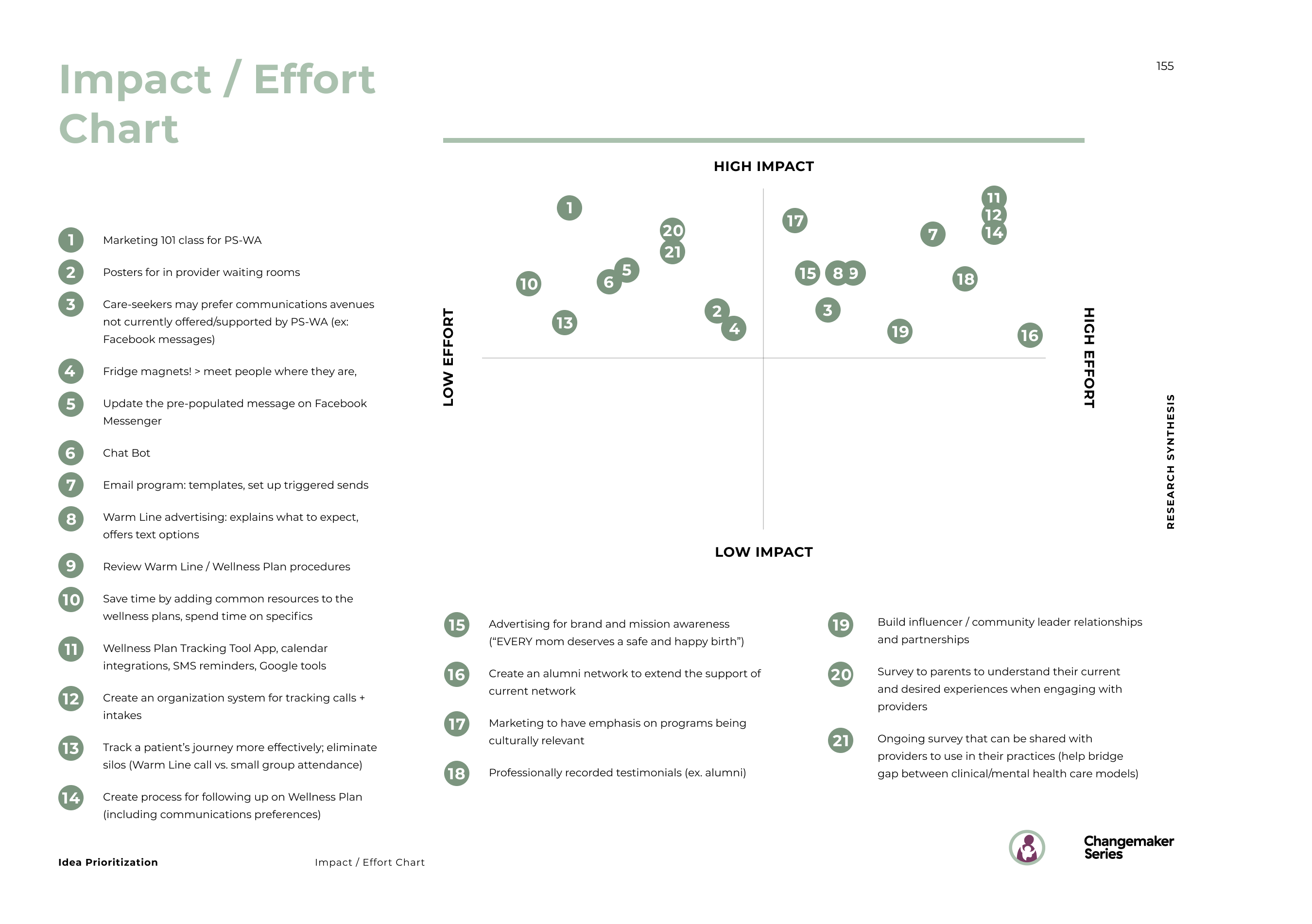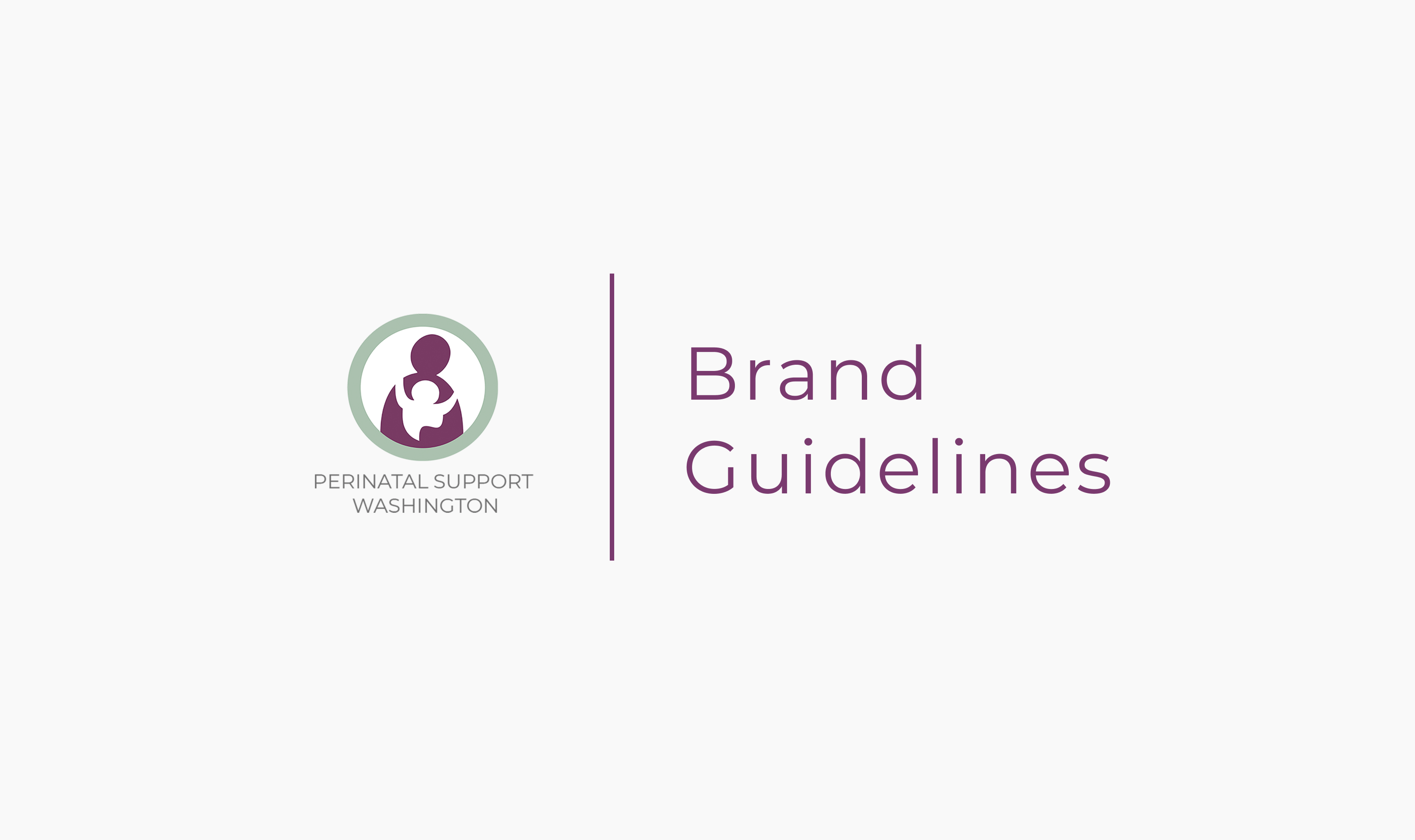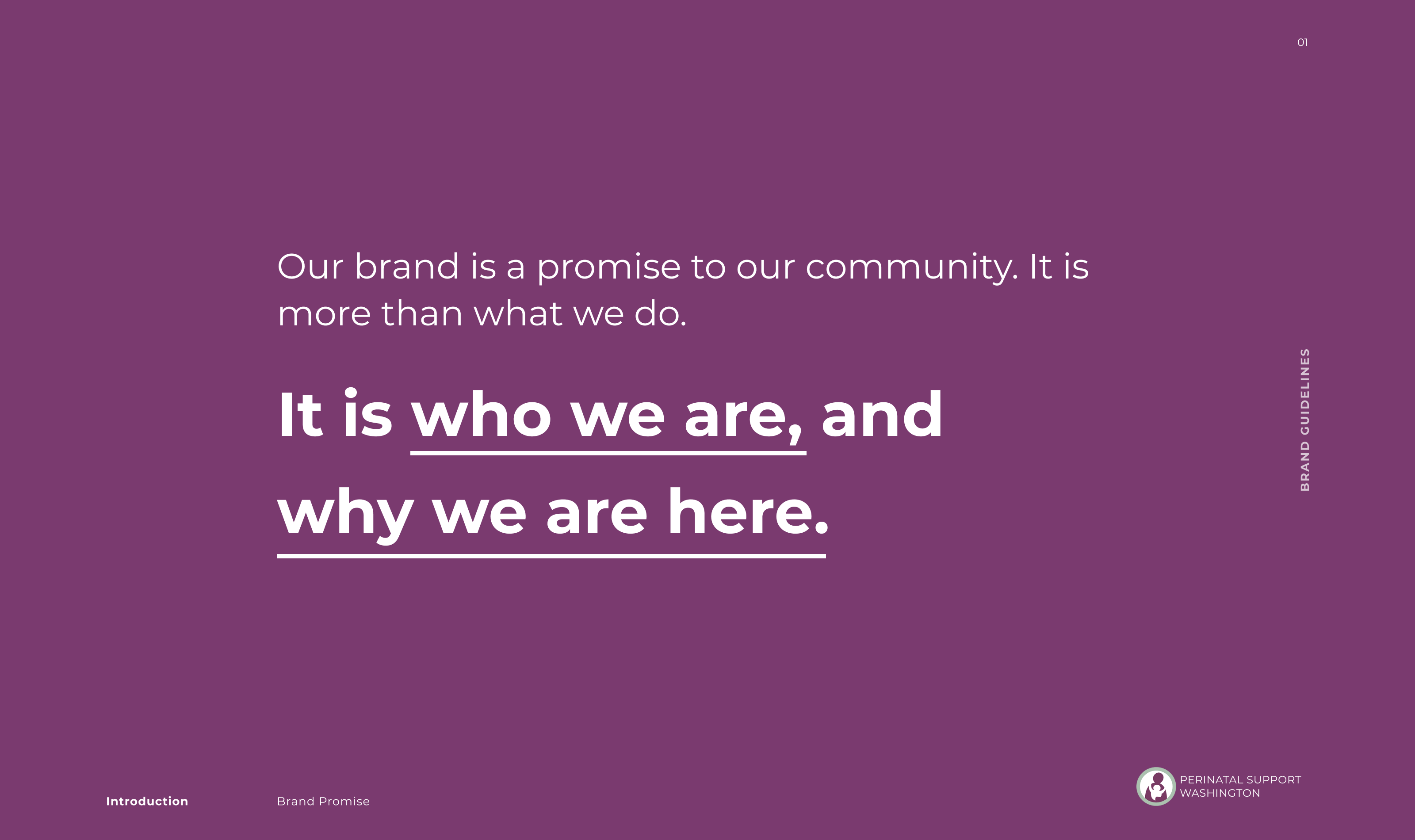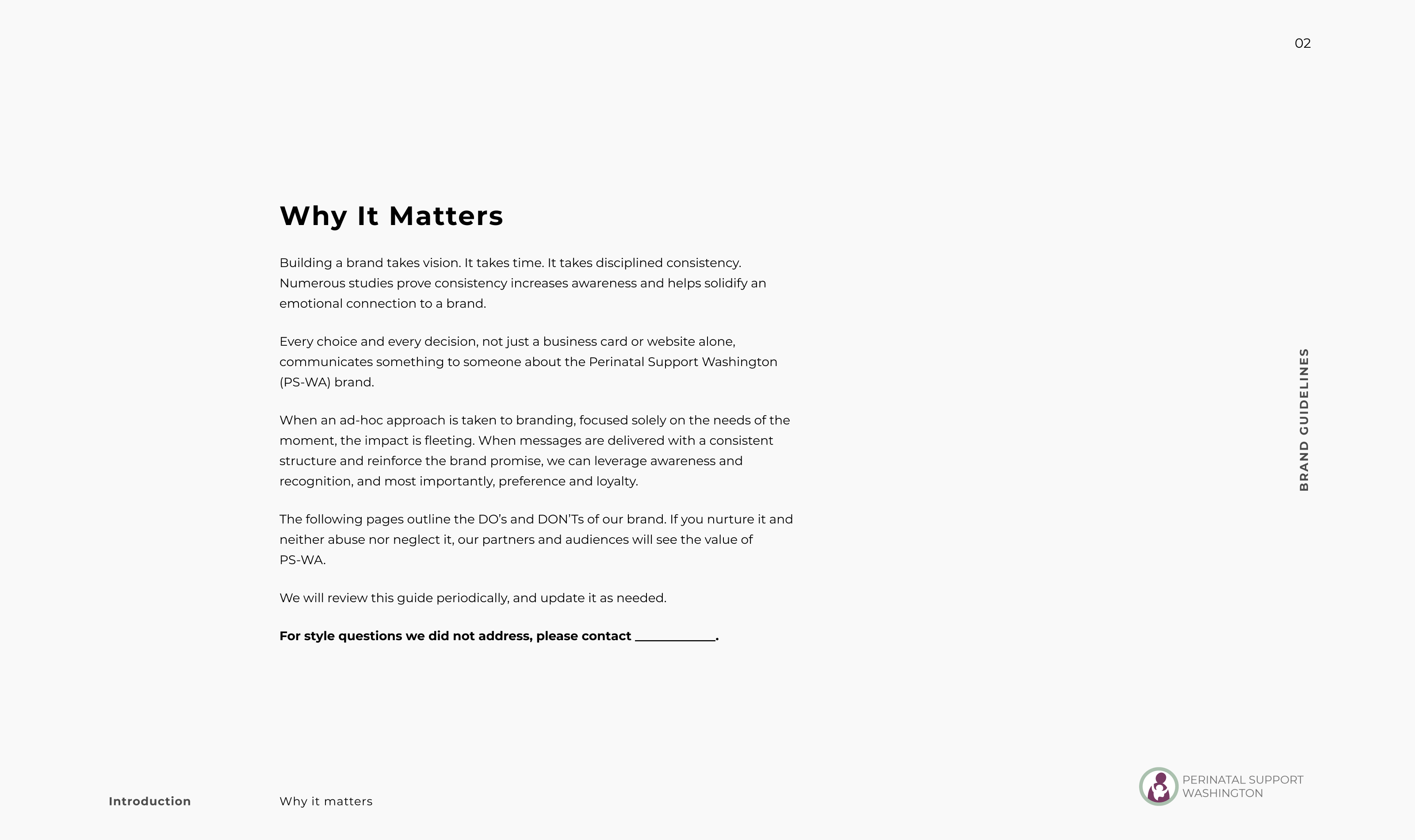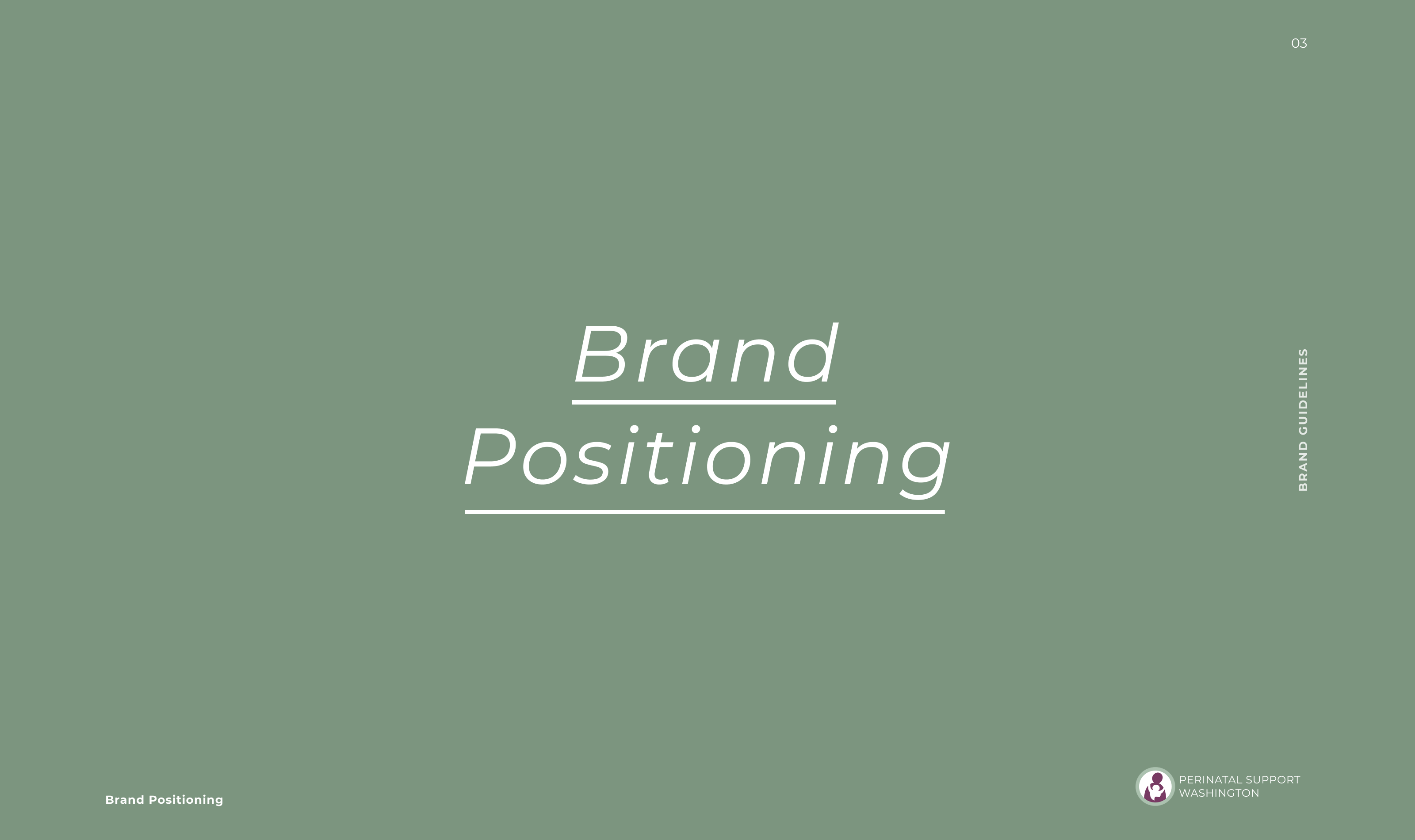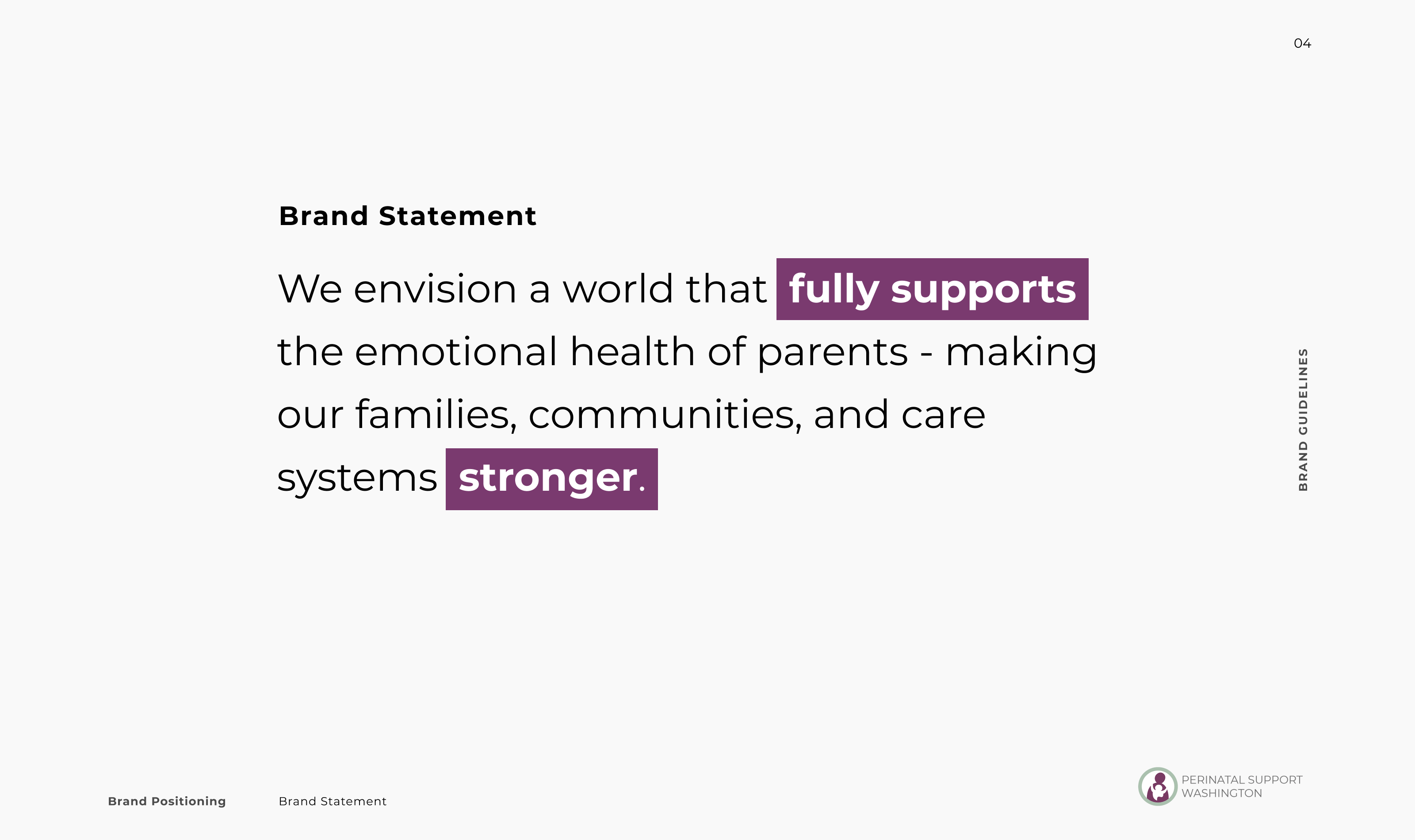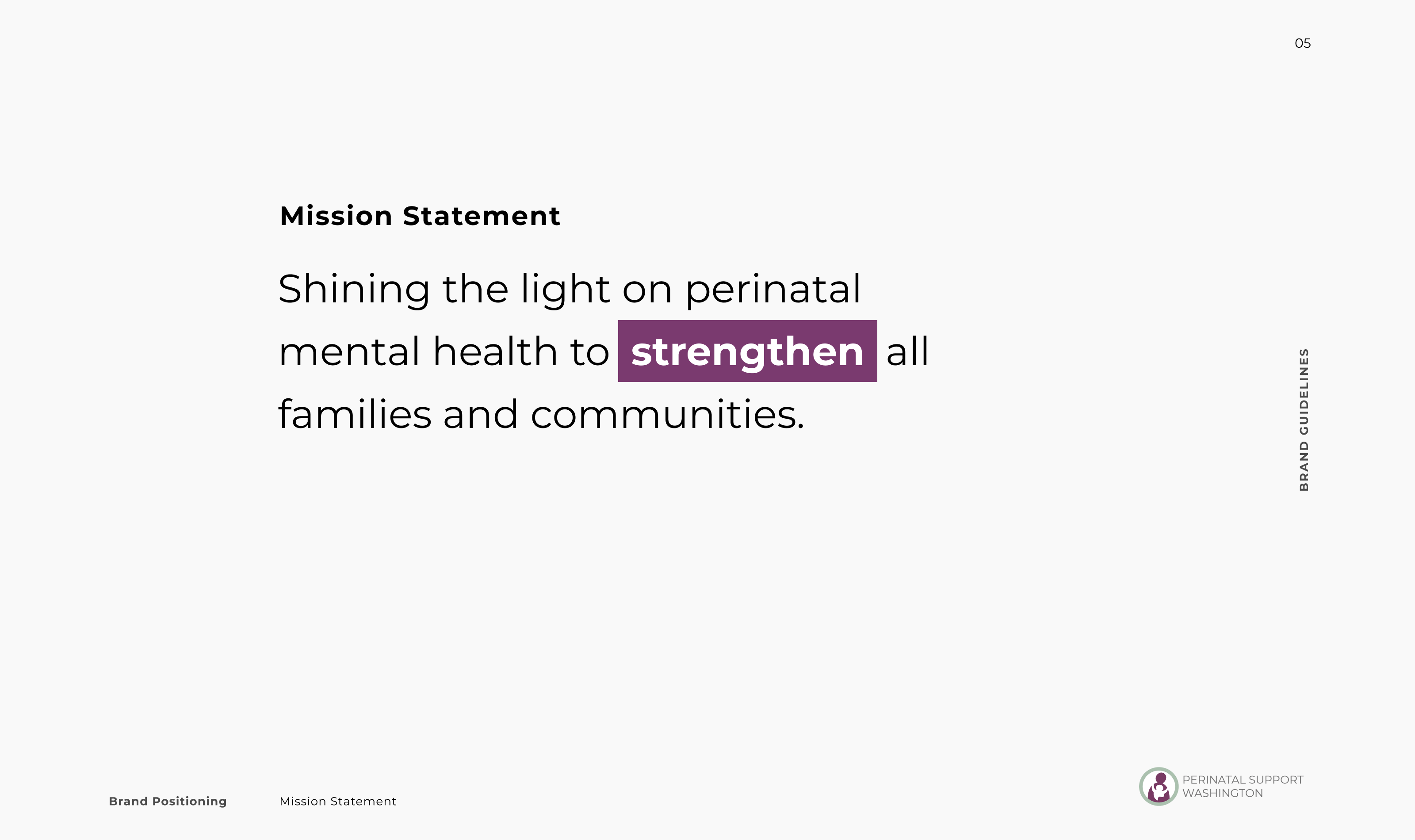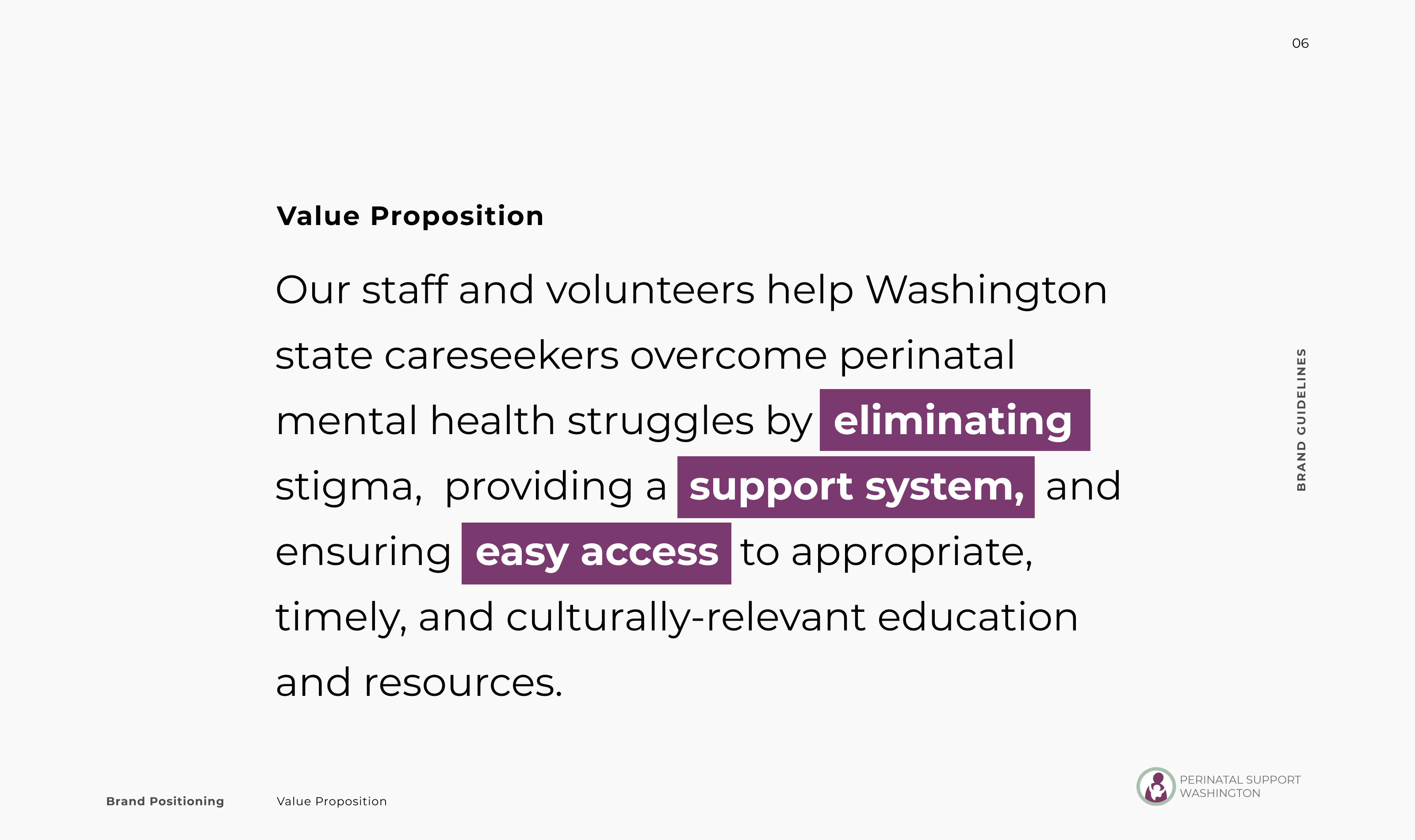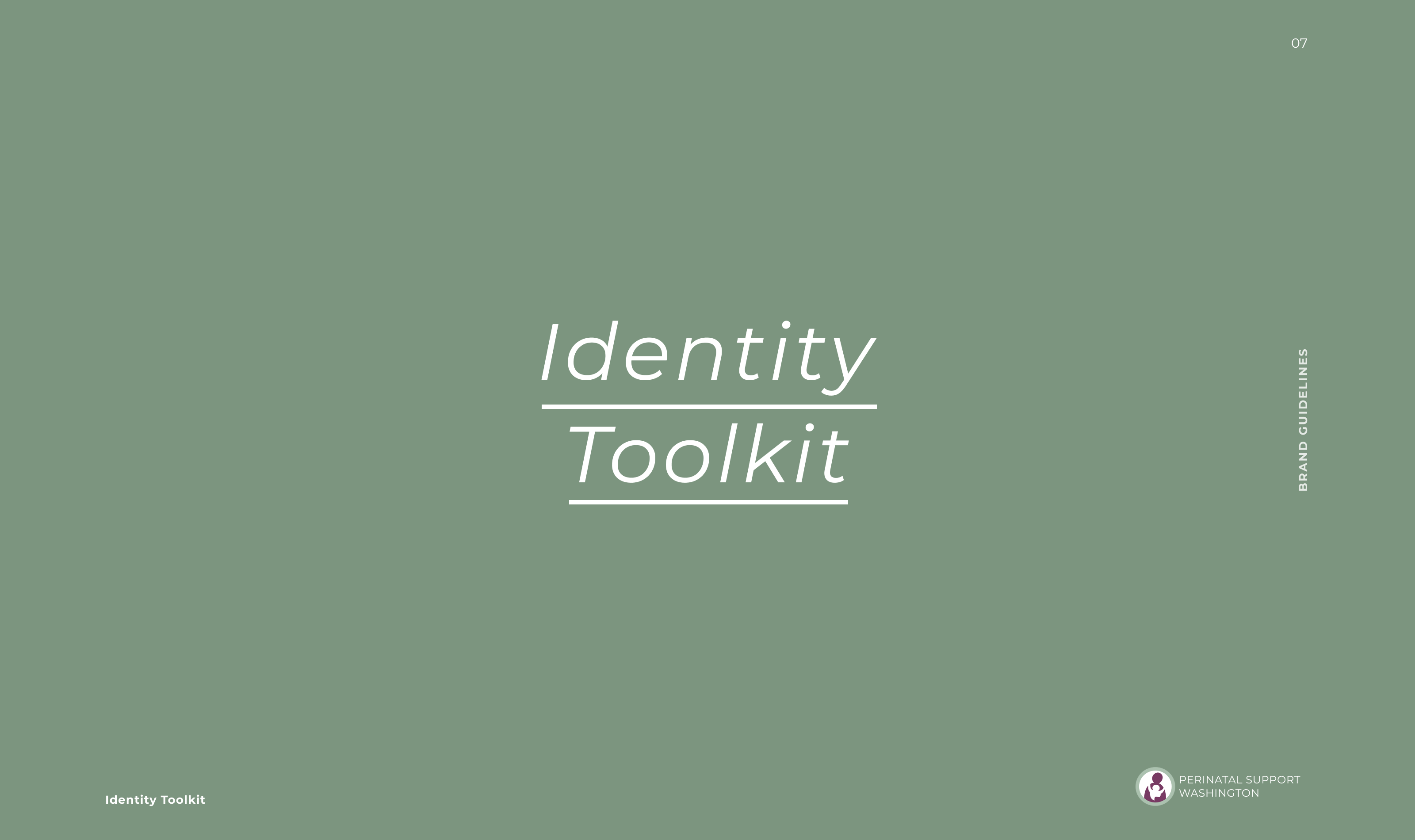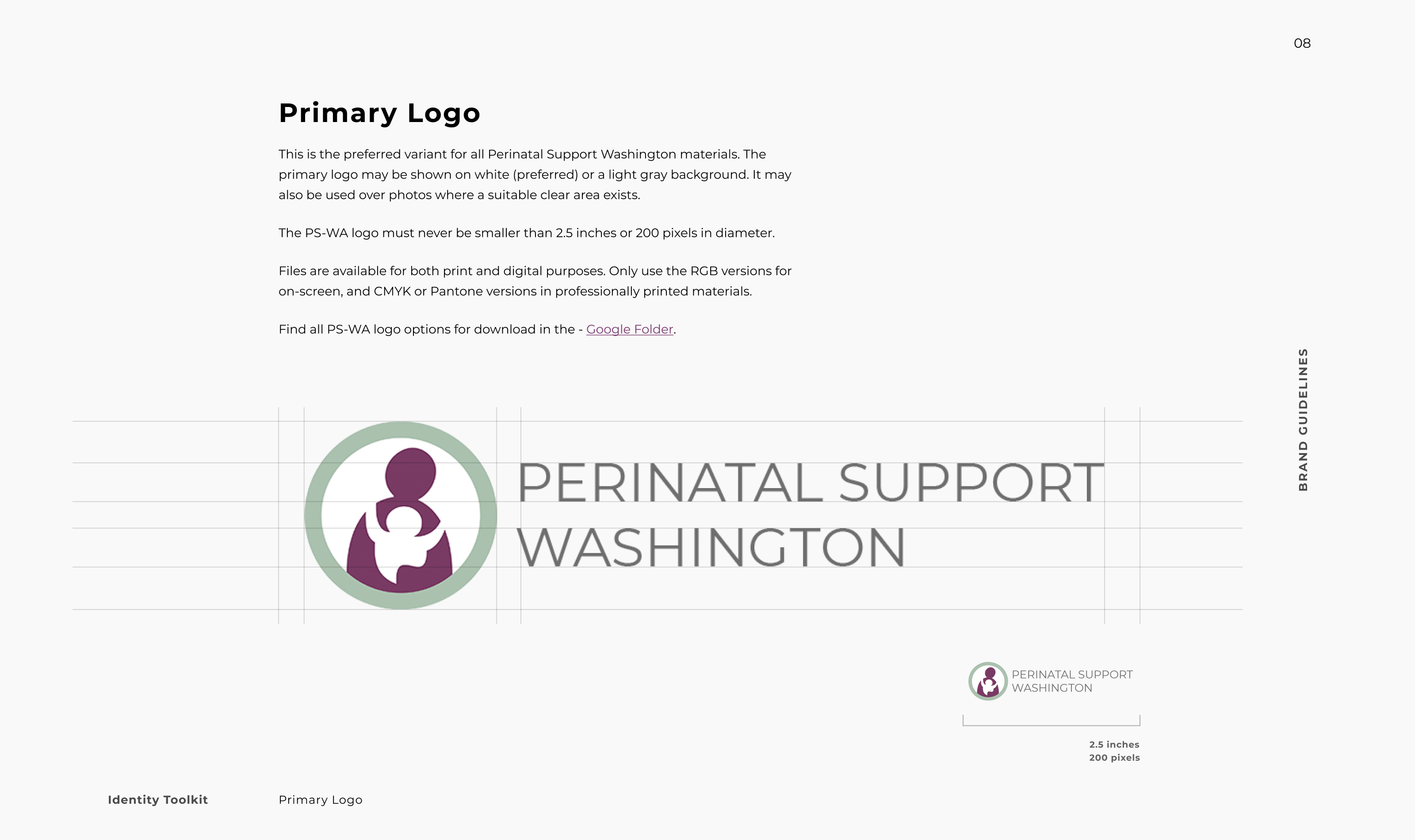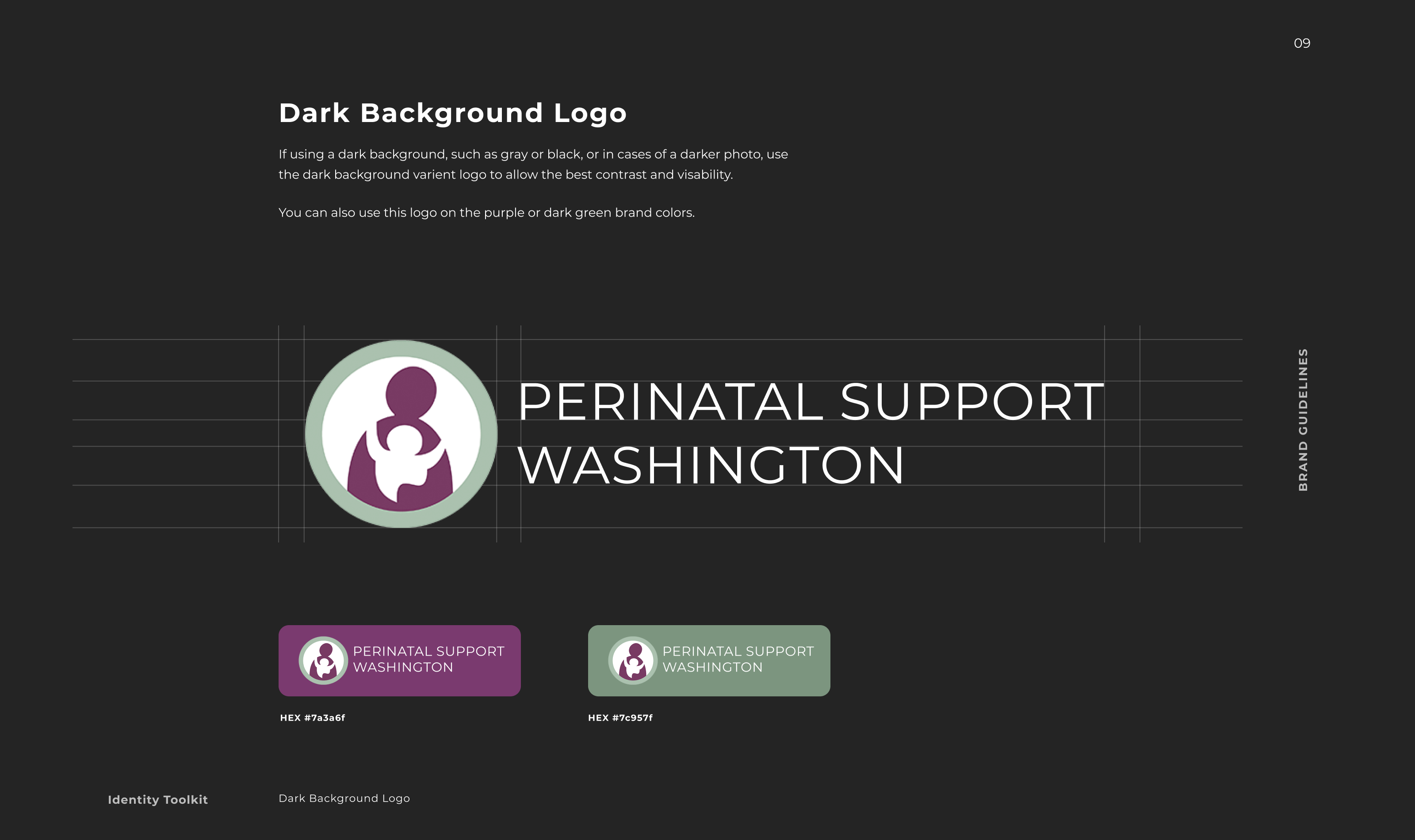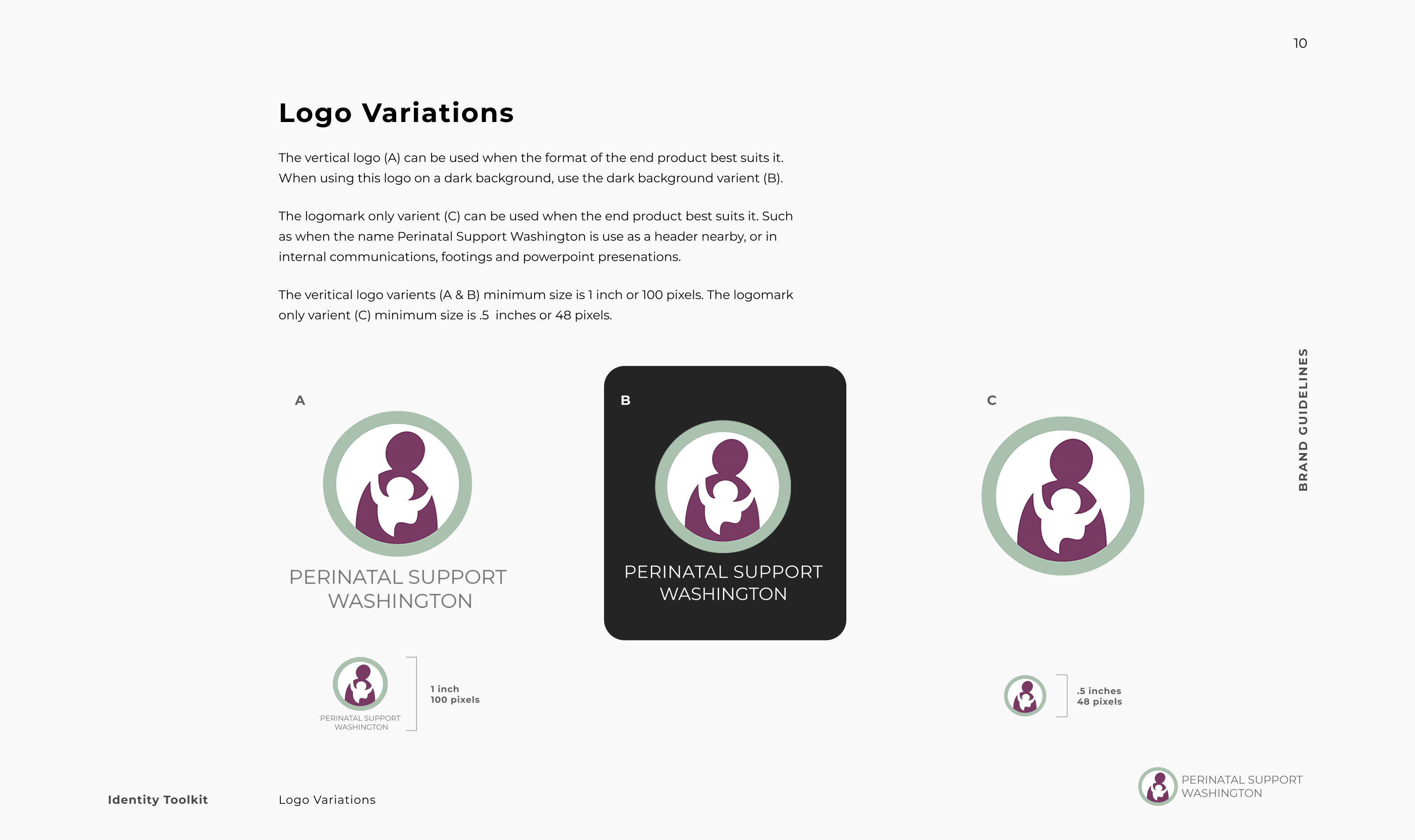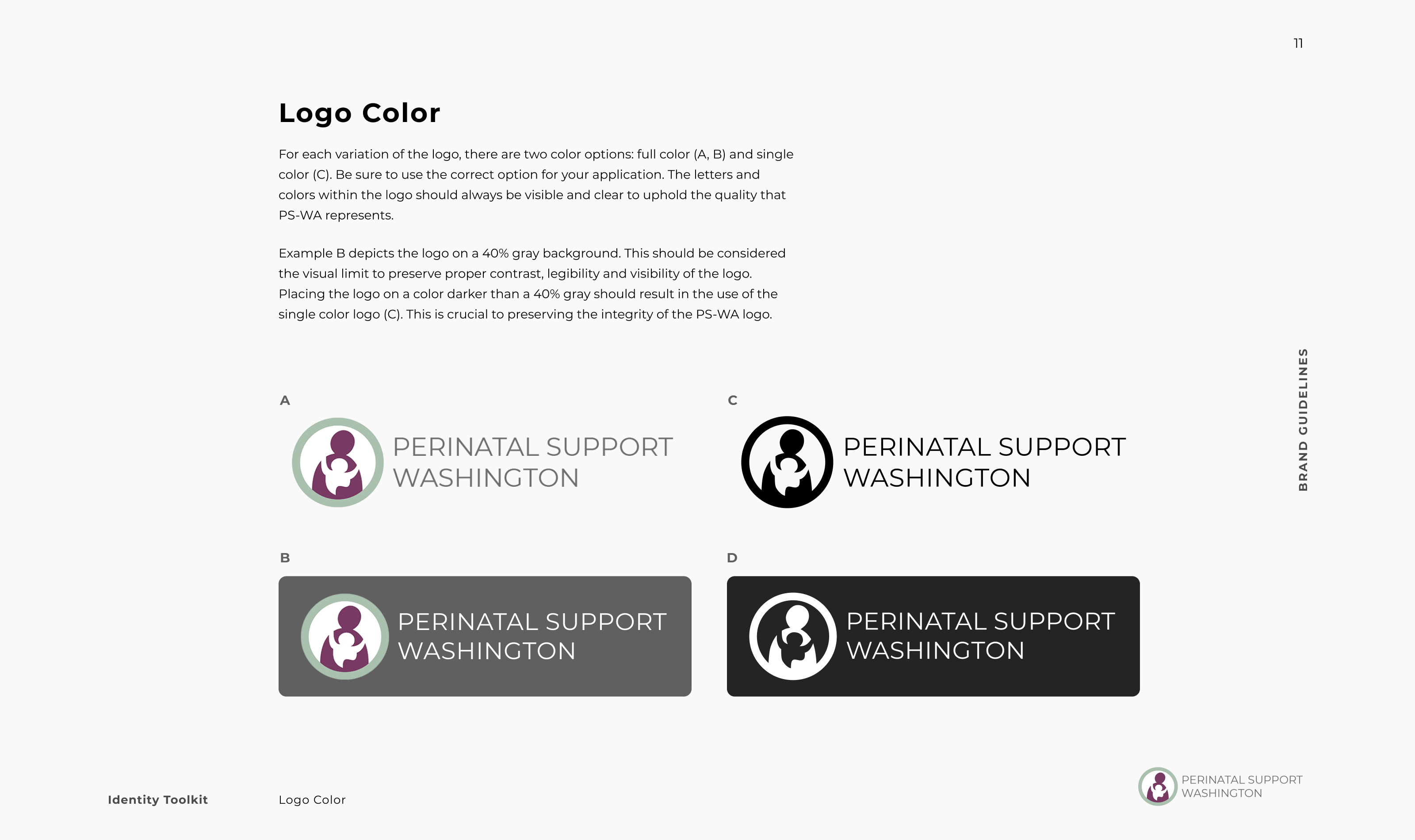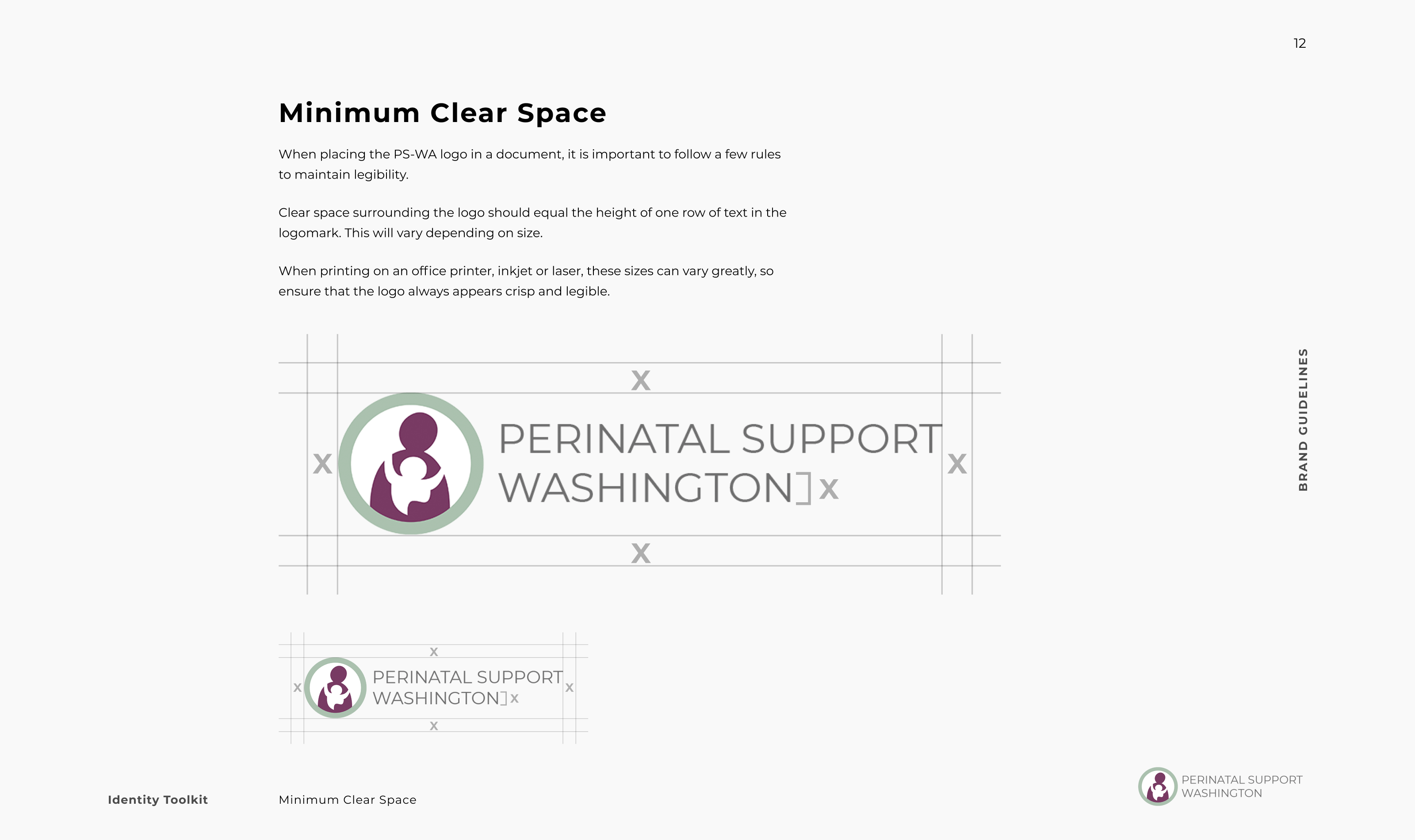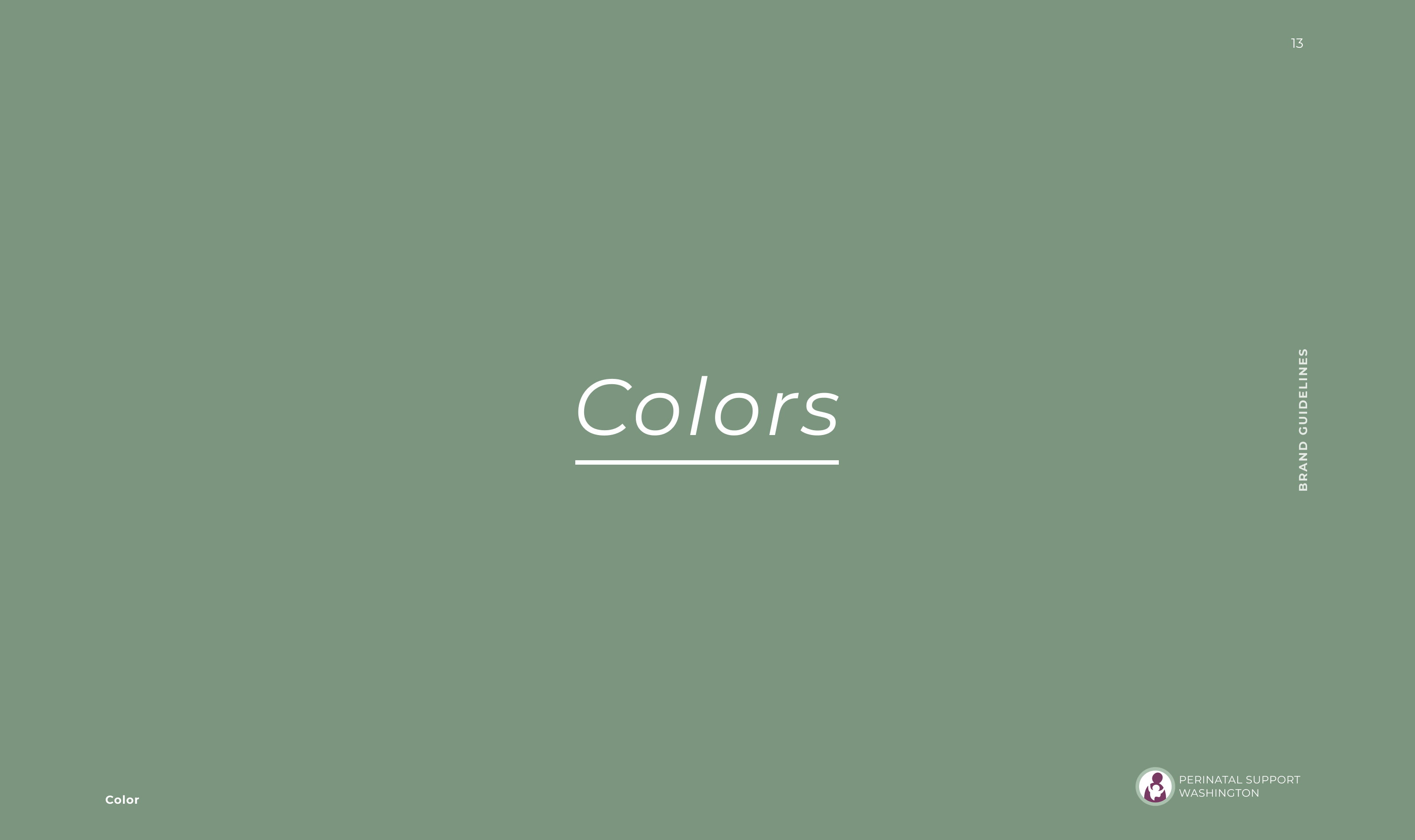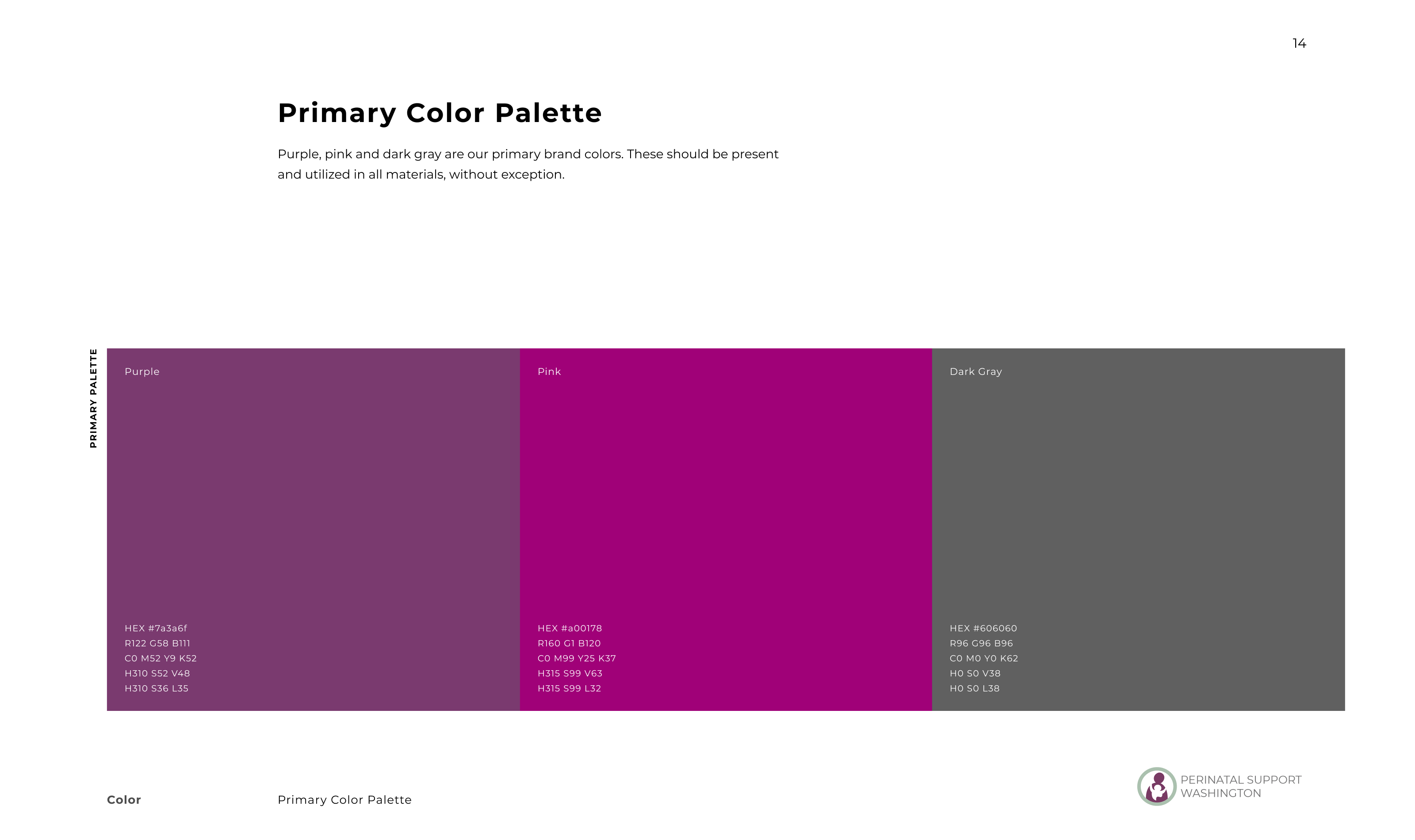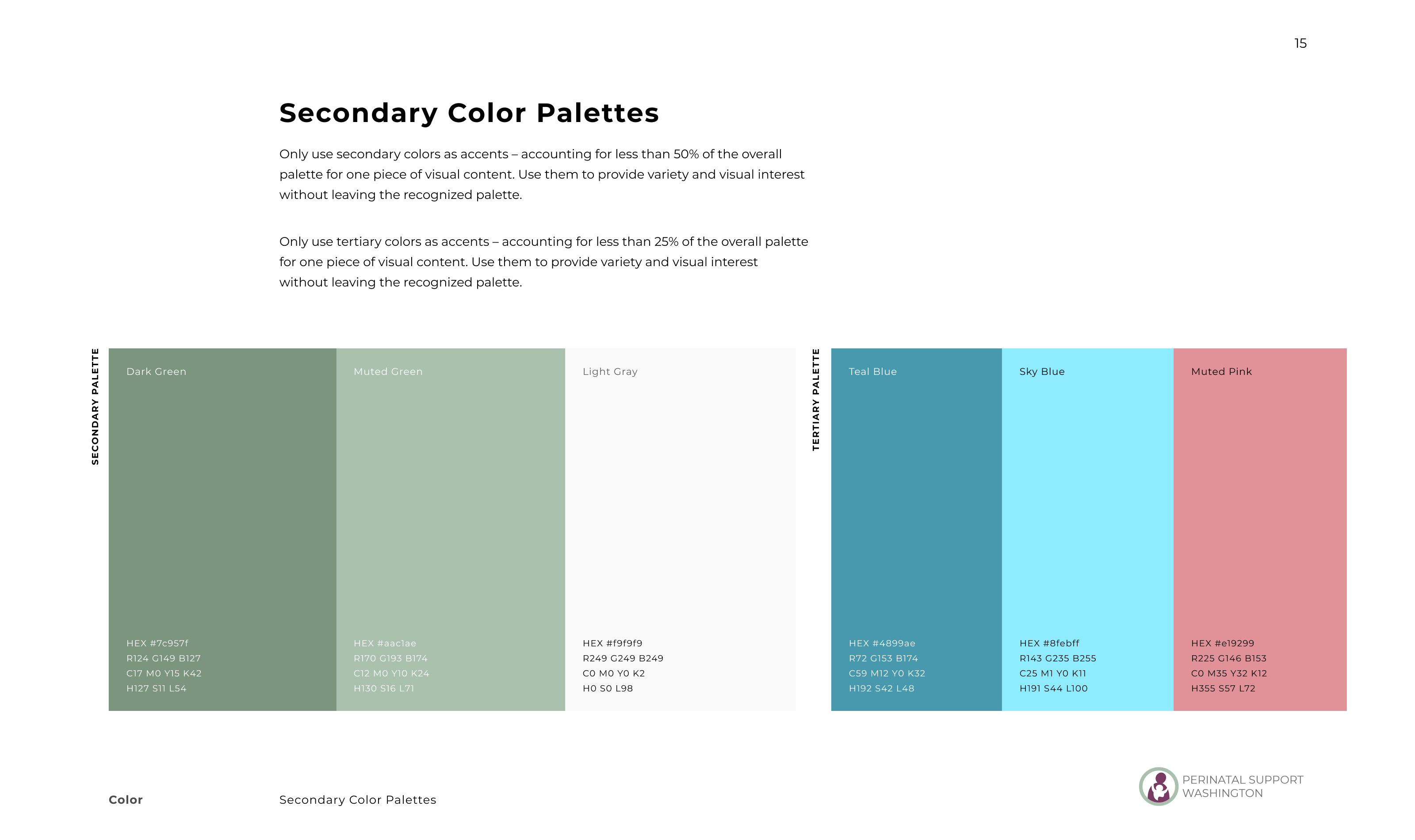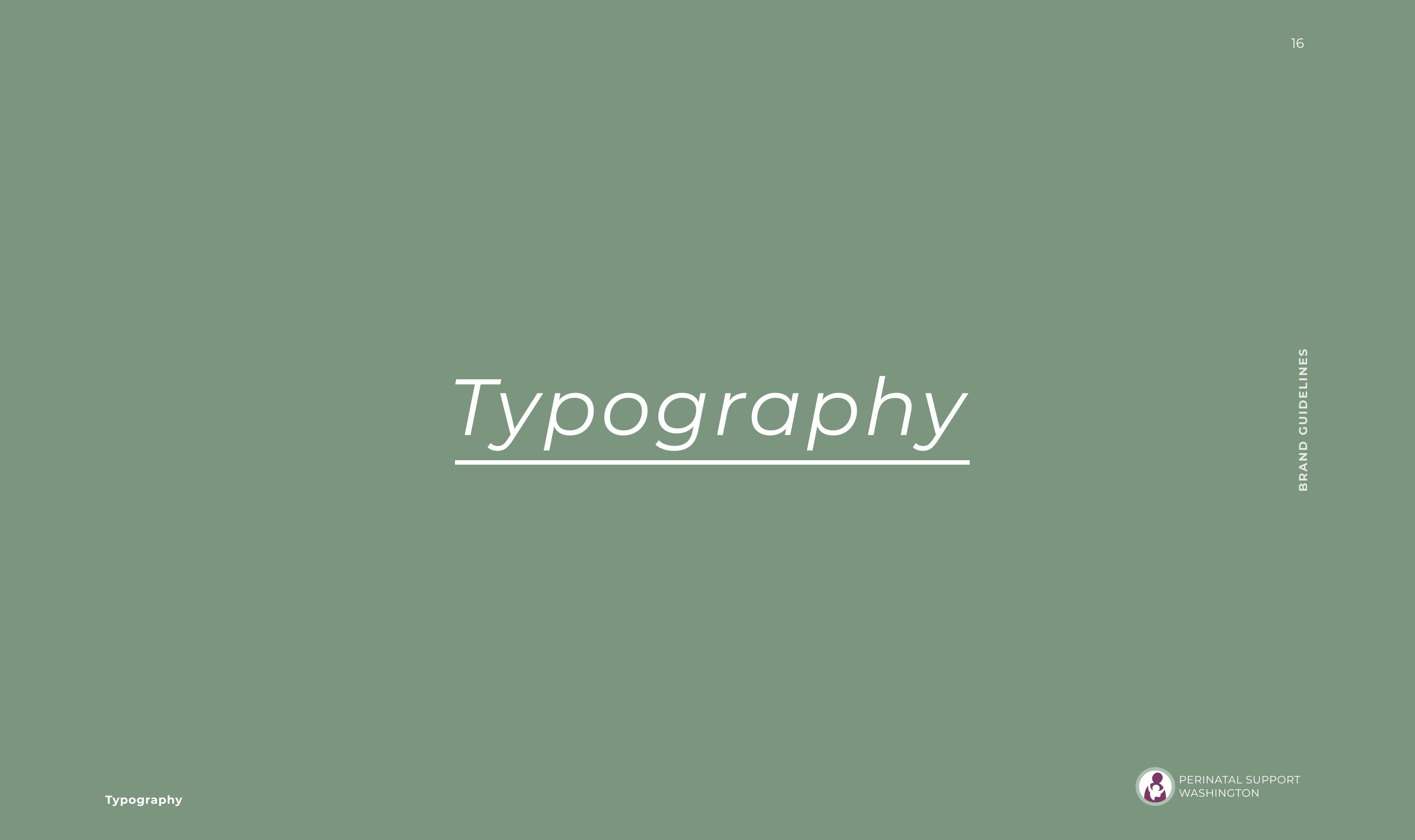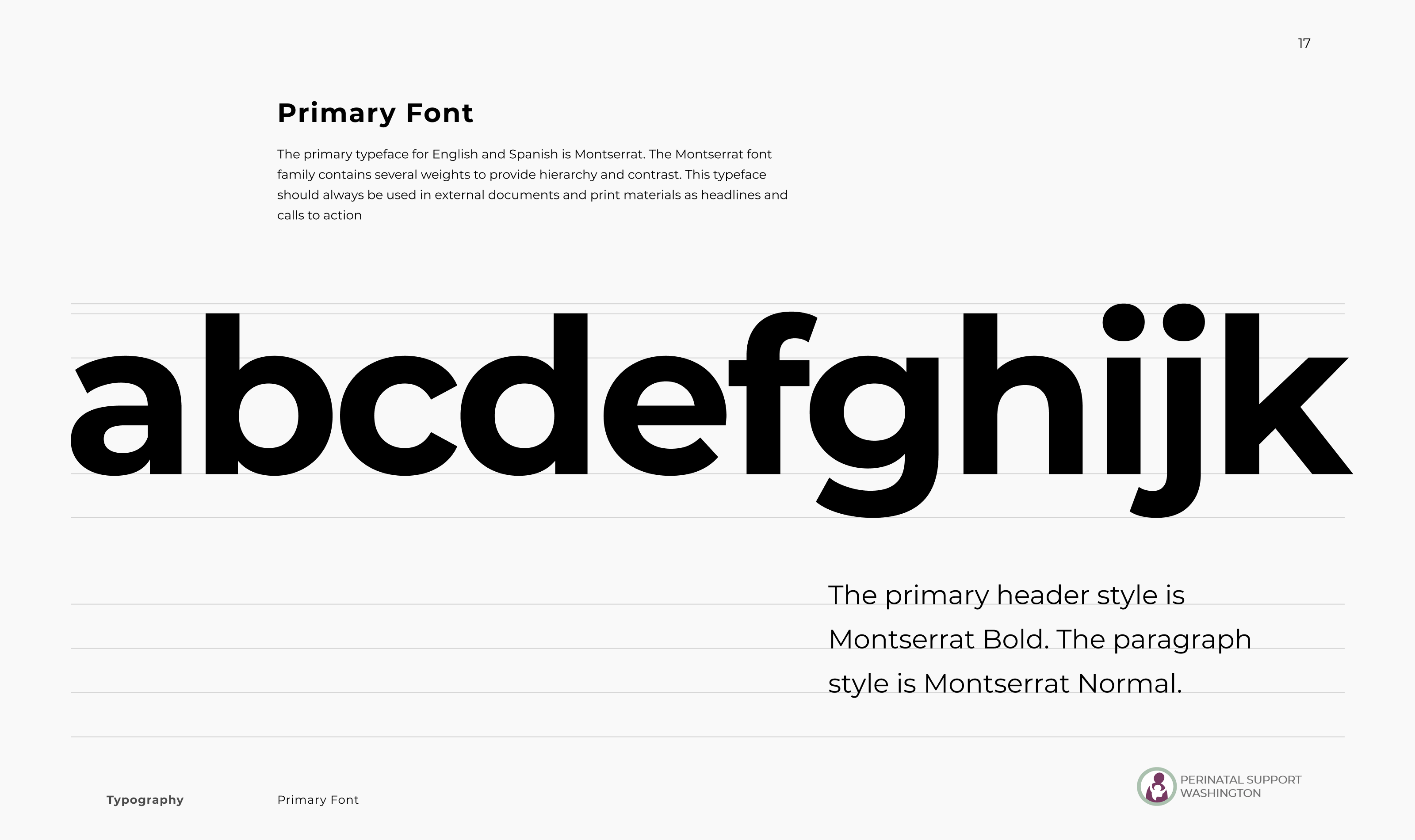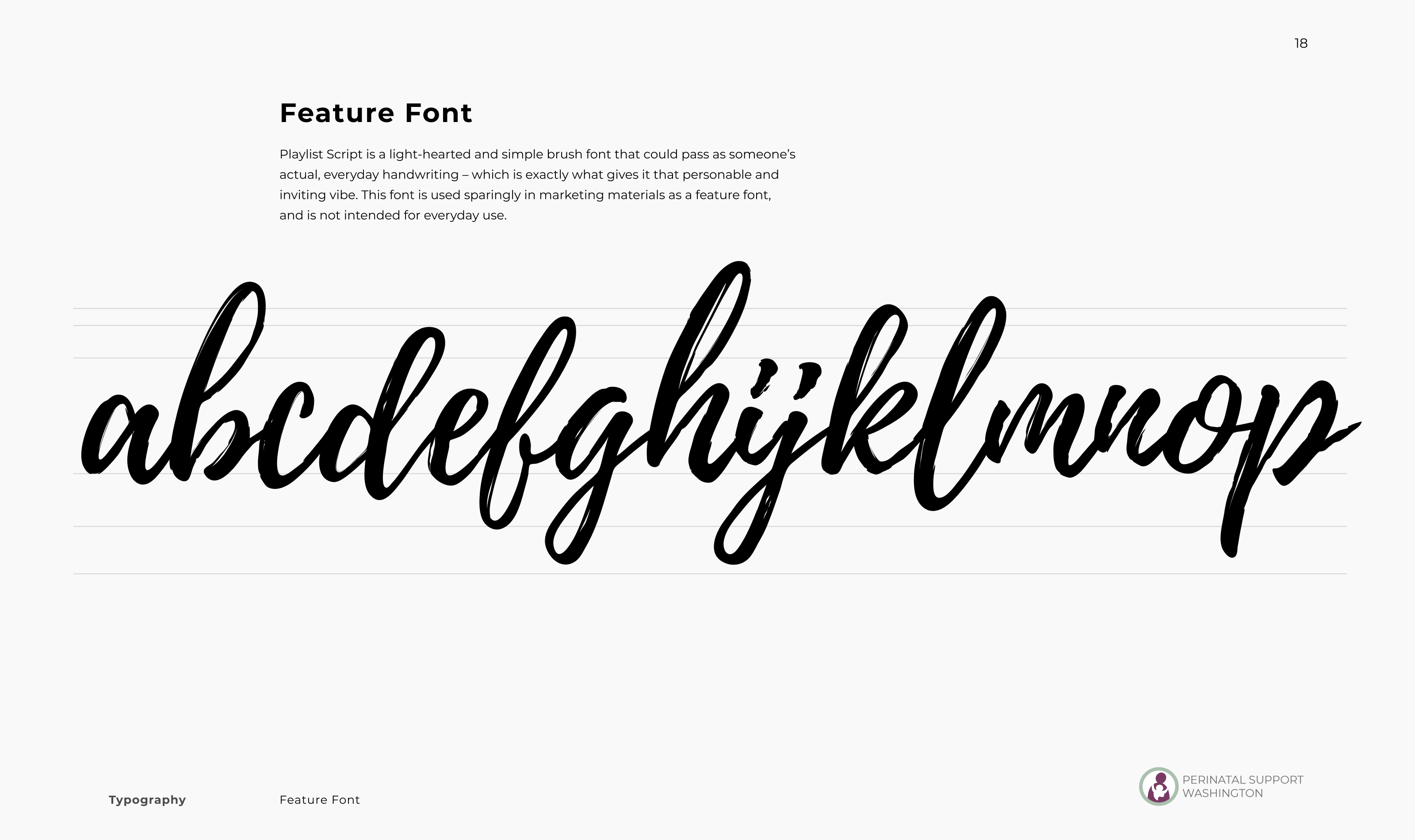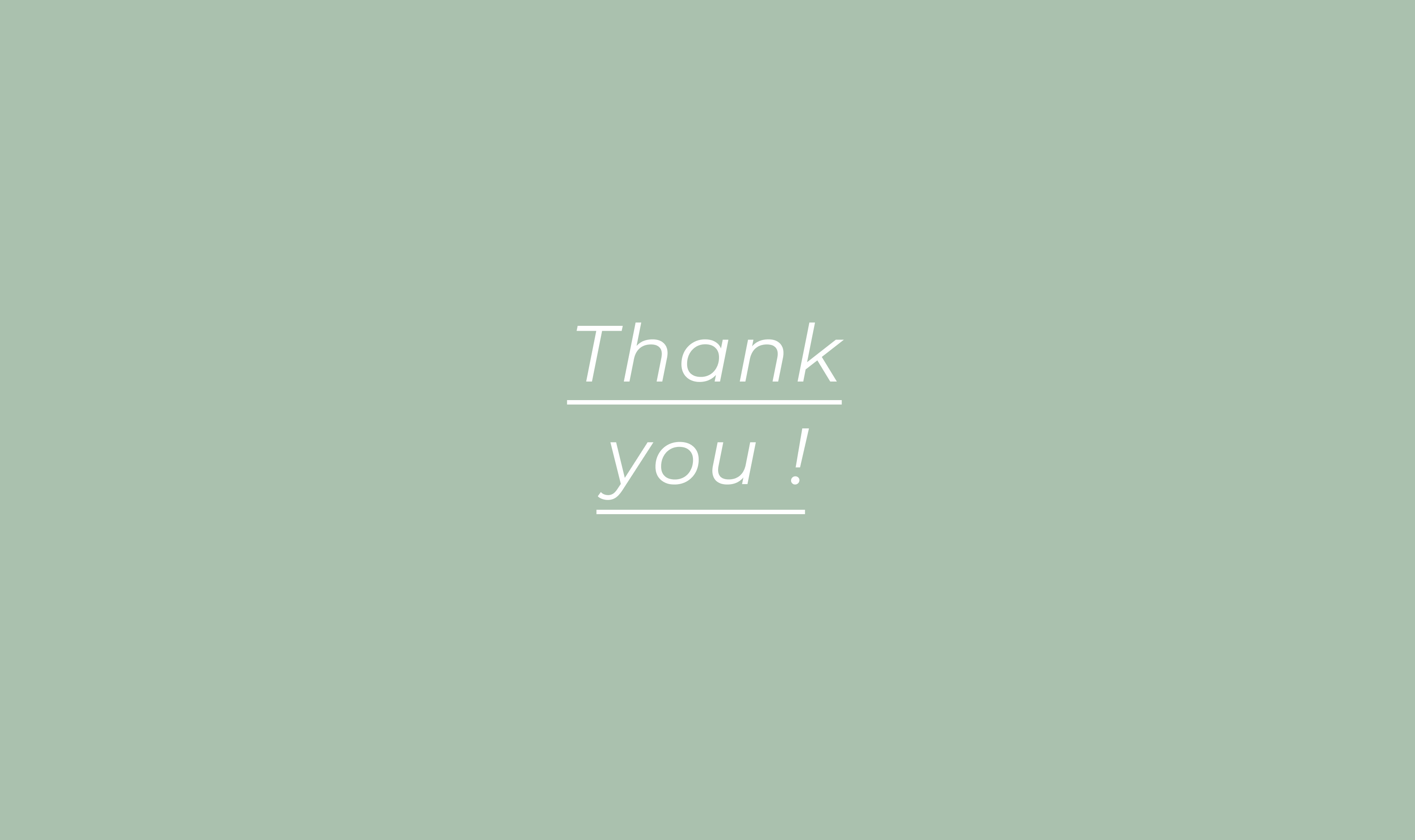THE COMPREHENSIVE CASE STUDY IS COMING SOON!
In the mean time, please explore parts of the research process and deliverables created for the project below.
Selected to participate as a visual/UX designer in AIGA Seattle's Changemakers Series which uses a human centered design process to solve challenges faced by local non-profits.
Client
Perinatal Support Washington, AIGA Seattle
Role
Visual Design, UX Research & Synthesis
FINAL SHOWCASE PRESENTATION
Note: Video should automatically start around 1:20:00
PROBLEM STATEMENT
Our team was tasked with solving a challenge brought by Perinatal Support Washington (PS-WA): “How might we enhance our understanding of our core audiences, expecting/new parents and healthcare providers, to communicate better with and engage them in our services?” Over the course of five months our team was to work with PS-WA to explore, research, and iterate on this question with the objective of delivering a tangible solution to meet their goals.
FINAL SHOWCASE PRESENTATION SLIDES
Presentations were given using the Pecha Kucha method. We were allowed 10 slides and a fixed time of 40 seconds per slide as the slide would automatically advance every 40 seconds. I created these slides to supplement the story of the project being told by our presenter. We kept the focus on postpartum moms and care seekers as the centerpiece, allowing them to tell their own stories and allowing the slides to add visual impact to their words.
RESEARCH SYNTHESIS
As part of our deliverables, I complied the summary of our research methods and outcomes into a single research synthesis document. This document gave PS-WA representatives a single reference point containing the tools to conduct further research and the information to address other opportunities that were uncovered but exceeded the scope of the project. The document included:
Recommendations supported by our learnings
Personas
Journey Mapping
Co-Design Workshop Methods and Outcomes
Ecosystem Maps
Interviews Methods and Summaries
Survey Methods and Responses
Web Analytics Data
Idea Prioritization
Impact/Effort Charts
Learnings-Insights-Opportunity-Ideas Table
In addition to conducting research, I organized, designed and input the research into a clean, comprehensive document. Sections of the document are highlighted below but the entire research synthesis can be downloaded and/or viewed here.

PERSONAS
Personas are fictional characters representing different user types that might interact with a service and/or brand in distinct ways. They enable us to focus on definable user types to design and speak to a specific somebody, rather than the generic everybody.
We used personas as a tool during a Discovery Workshop we held with PS-WA to discover assumptions being made about their users and to help reveal any blind spots. This information was leveraged to inform research activities, interview questions, and areas of discovery. We created a final set of 5 personas that are a synthesis of the sixteen 30-minute interviews conducted with care seekers and providers, surveys and information validated through our conversations with real audience members.
RESEARCH METHODS SAMPLES
Ecosystem mapping creates a visual of your community and landscape in order to identify gaps in essential services and functions, strategize beyond symptoms of a problem, and uncover/address any larger systemic issues.
Our team worked collaboratively with PS-WA to identify key audience groups and connect them based on the type of value they exchange. This activity prompted conversations about information and relationships that ultimately informed the rest of our research.
How Might We statements are short questions that aim to address opportunities through a lens of constant curiosity, empathy, and open-mindedness. We used these to launch brainstorms to uncover areas of opportunity.
The ideal HMW statement addresses a specific problem or insight but allows for a variety of solutions. The statement should focus on the desired outcome to avoid creating a solution that only solves the symptoms of the problem. We created a variety of secondary HMW statements to broaden our view of the audience to account for the intersectional barriers of care access.
For each interview, we tailored the questions to the interviewee and opted for a semi-structured interview format — we were not concerned with finding answers to every question for every interviewee, nor with the order in which the questions were answered.
Each interview was approximately 30 minutes and were conducted by phone or video call. We conducted a total of 17 interviews; this number includes providers, past and present care seekers, and potential care seekers.
As a research method, a survey is a set of questions used to collect topic-specific information from a representative sample of your target audience.
In total, we had 16 responses across the 3 surveys we created. The surveys were based on our 3 target audiences: care seekers, Spanish-speaking care seekers, care providers.
We did a brief 45 day analytics audit of the Perinatal Support Washington website from 5/5 - 6/20/2020.
While this data is now stale, the preliminary findings and conversation around how this information was displayed informed the creation of a live Data Studio Dashboard.
To synthesize the information from the Discovery phase of our research journey, we used an L-I-O-I framework table and prioritized the results.
- Learnings - The objective findings from research methods
- Insights - The “one level deeper” actionable conclusions that can be drawn from the Learnings
- Opportunities - The areas of need and possibility that can be identified through the Insights
- Ideas - First-reaction ideas for designs that might address the areas of Opportunity
In an effort to streamline and connect the numerous insights, opportunities, and ideas that arose throughout our research, we created a map to visually represented the L-I-O-I framework. The more connections we saw between items, the more important those ideas became.
With a lot of solutions and a fixed amount of time, I conducted a impact/effort matrix excercise with PS-WA to determine what was important to their team and inform the decision of what final deliverables would be.
BRAND GUIDELINES
PS-WA had gone through a branding process but didn't have guidelines for using their brand and brand attributes. A singular vision of a visual identity within an organization sets guardrails for the team when making materials, creates consistency and promotes retention in past, present and future users. I organized, art directed and designed these pages included in the brand guidelines.
WHAT IS THE CHANGEMAKERS SERIES?
The Changemakers Series is a summer program through AIGA Seattle that pairs up creatives and non-profits to solve problems using a human centered design approach. Each summer a new topic is chosen and the topic for summer 2020 was mental health. The program starts with a workshop weekend where we meet our team and assigned nonprofit. Together we participate in exercises and brush up on techniques to solve an external design challenge. This helps to demonstrates the iterative design process to non-profits representatives and sets expectations for the summer. While this program usually takes place in person, we worked with our teams remotely due to the challenges of COVID-19.

